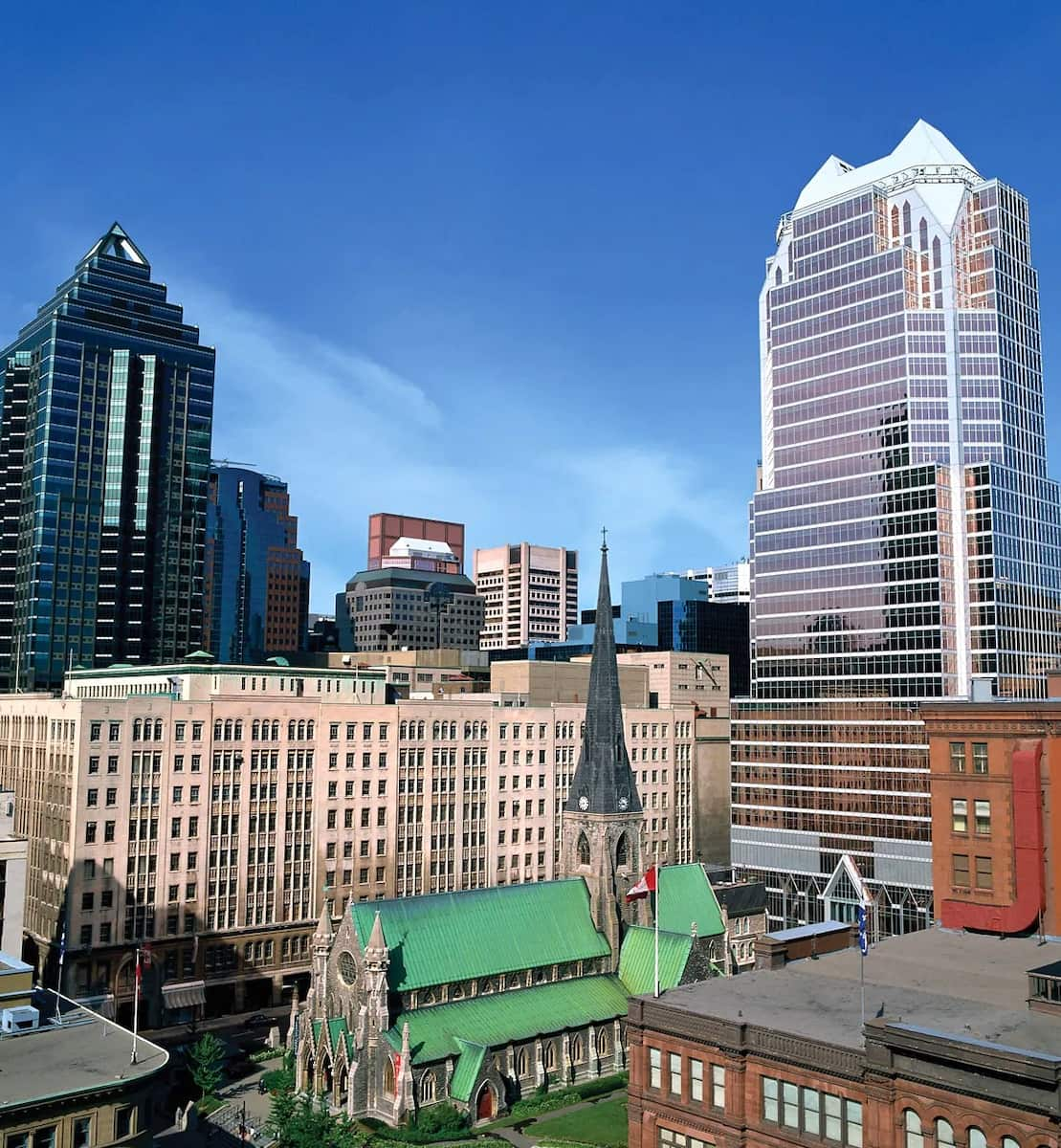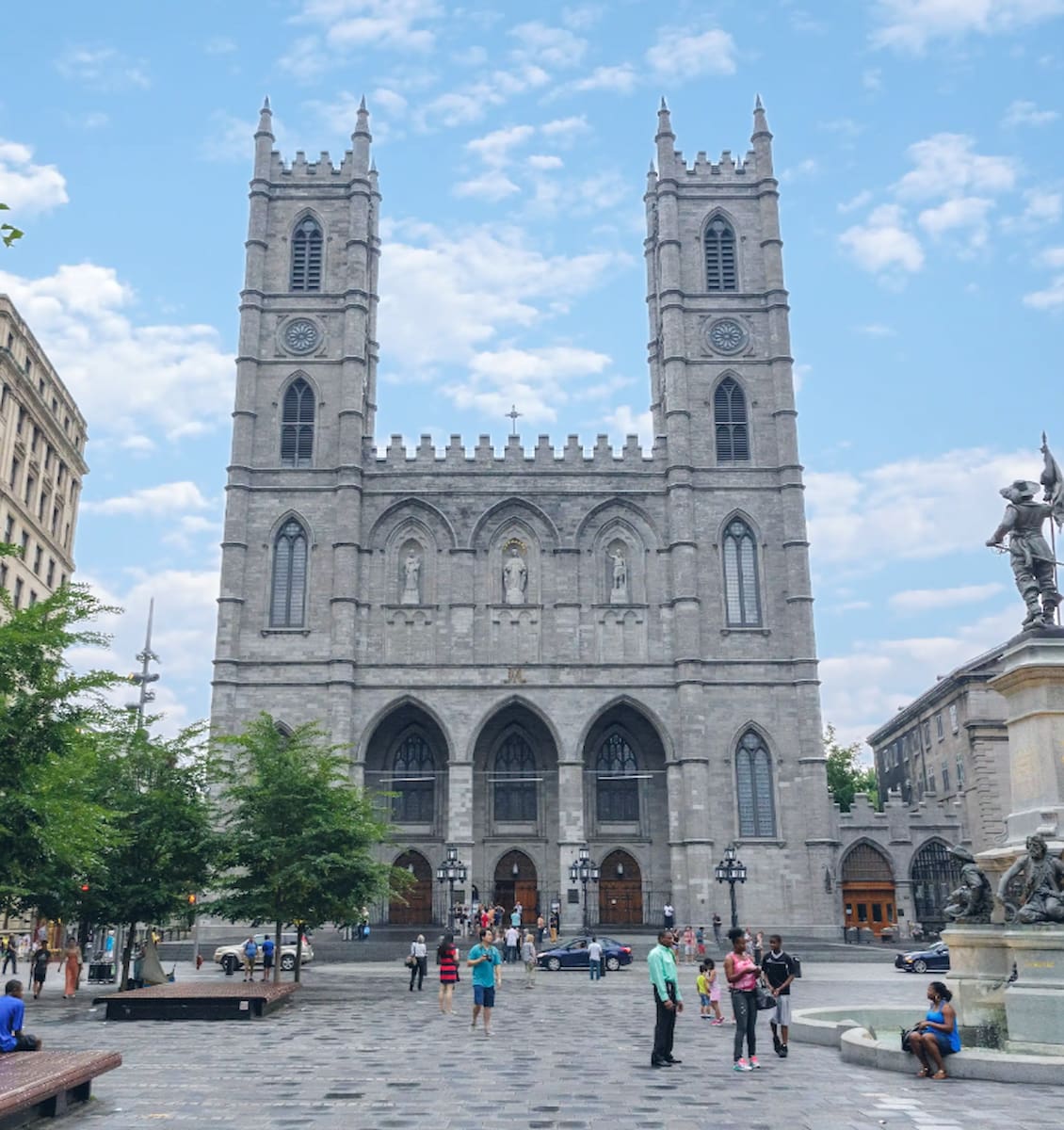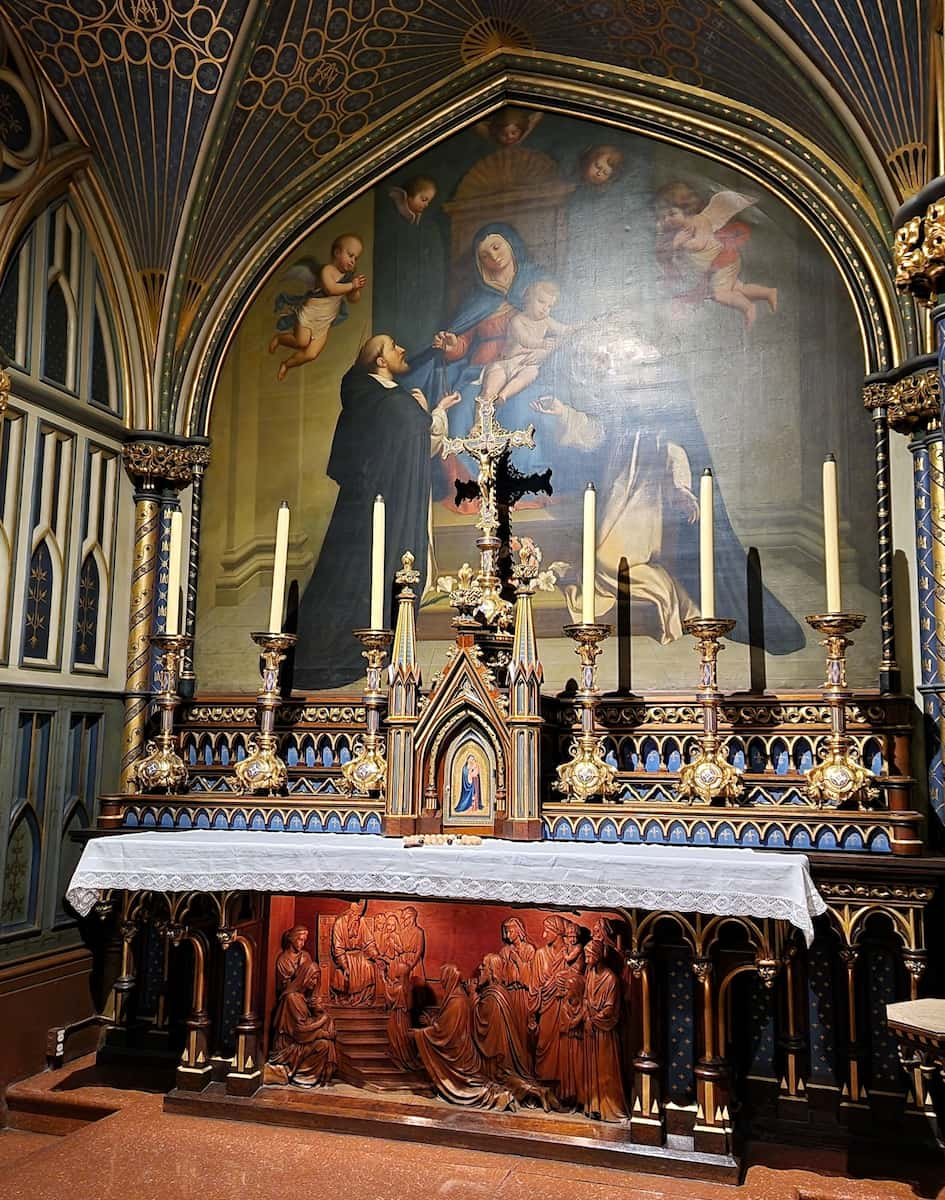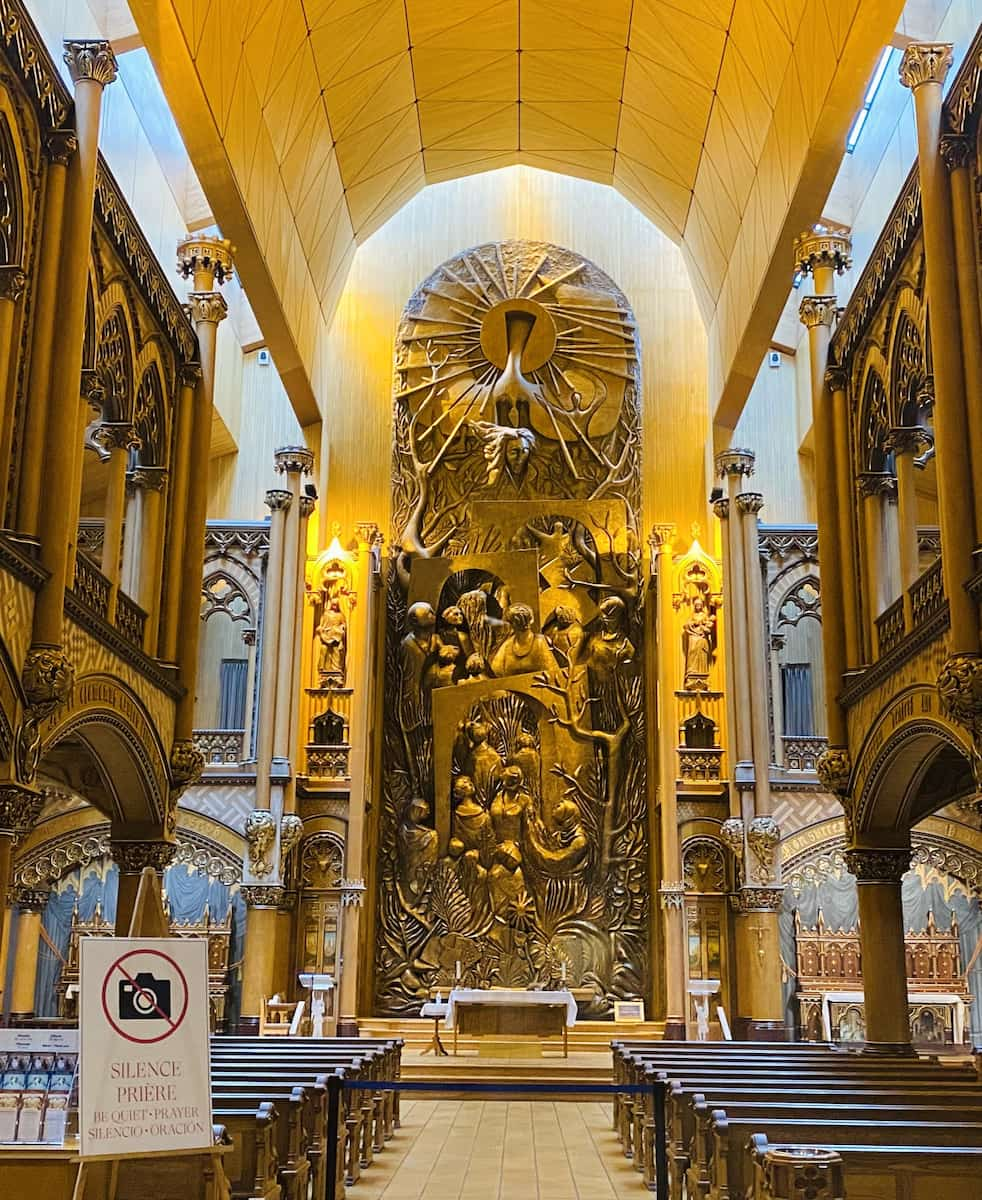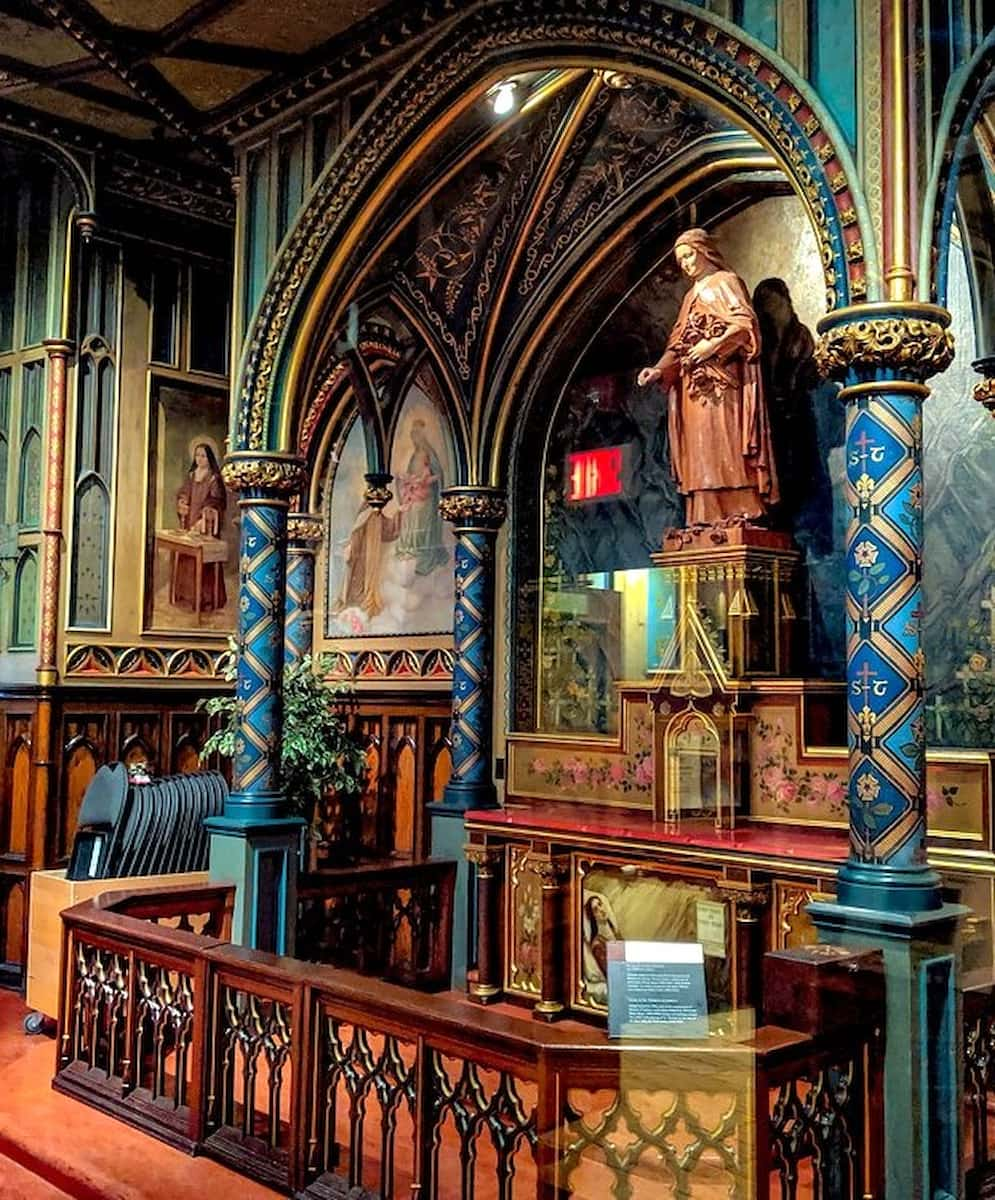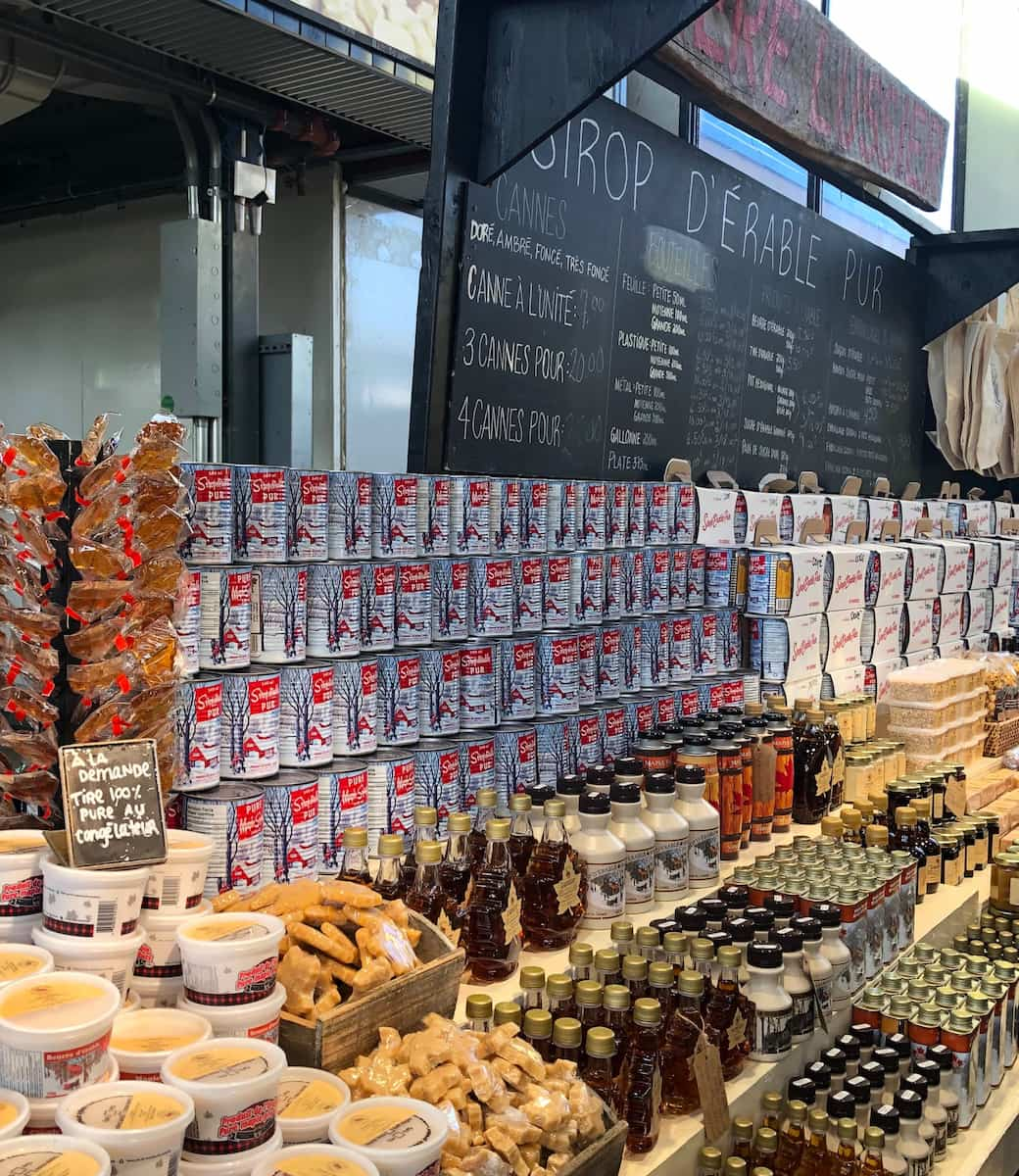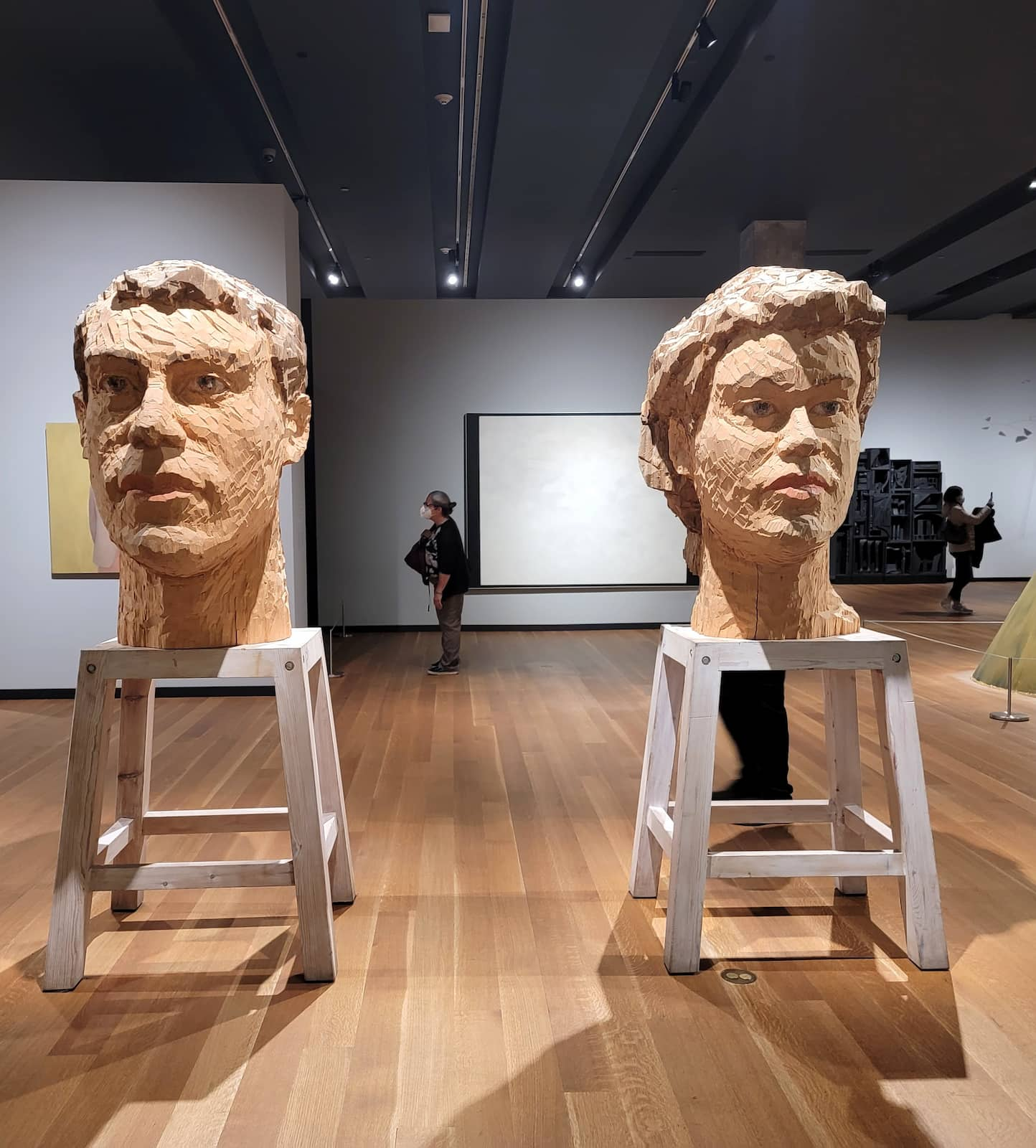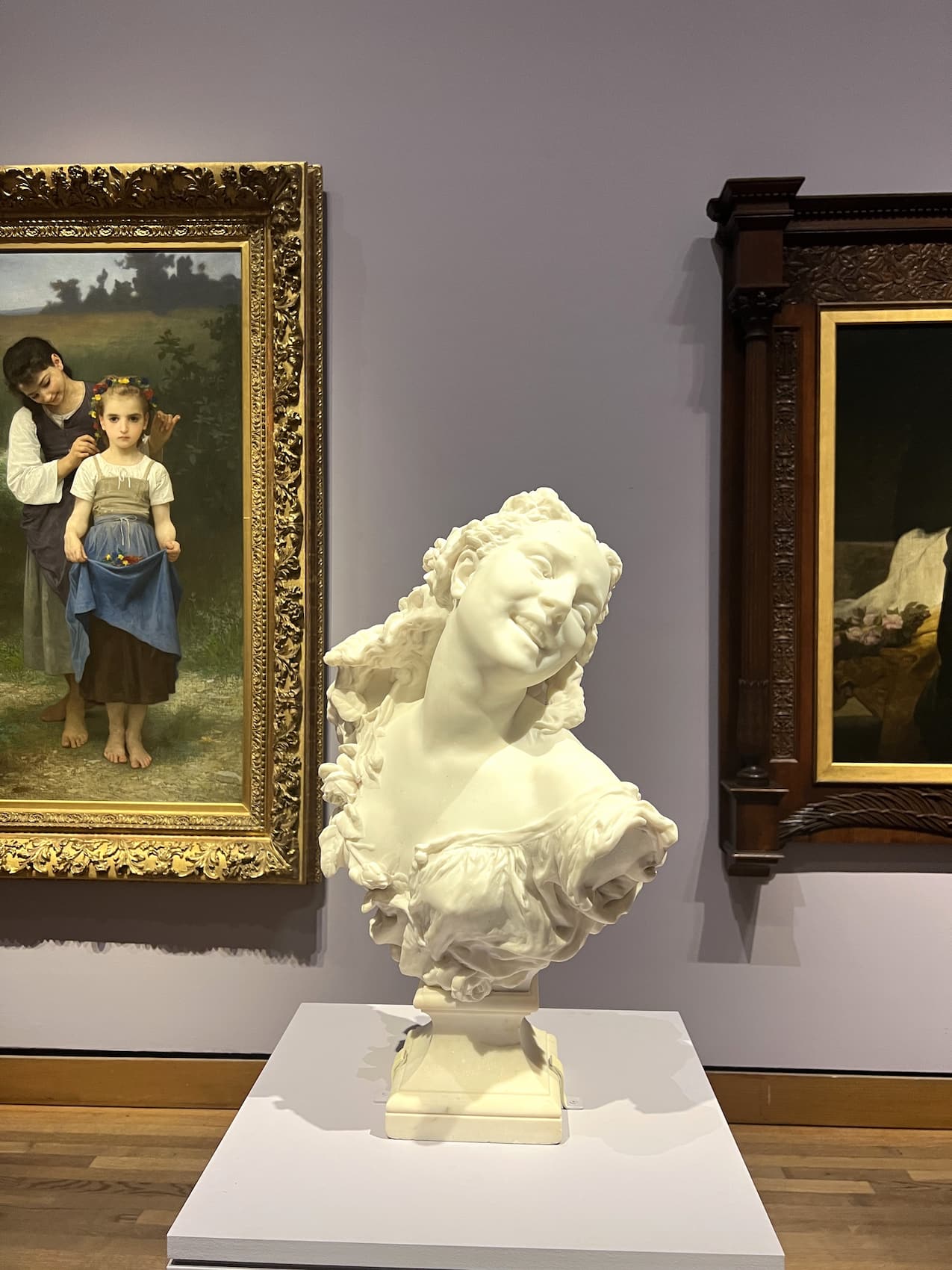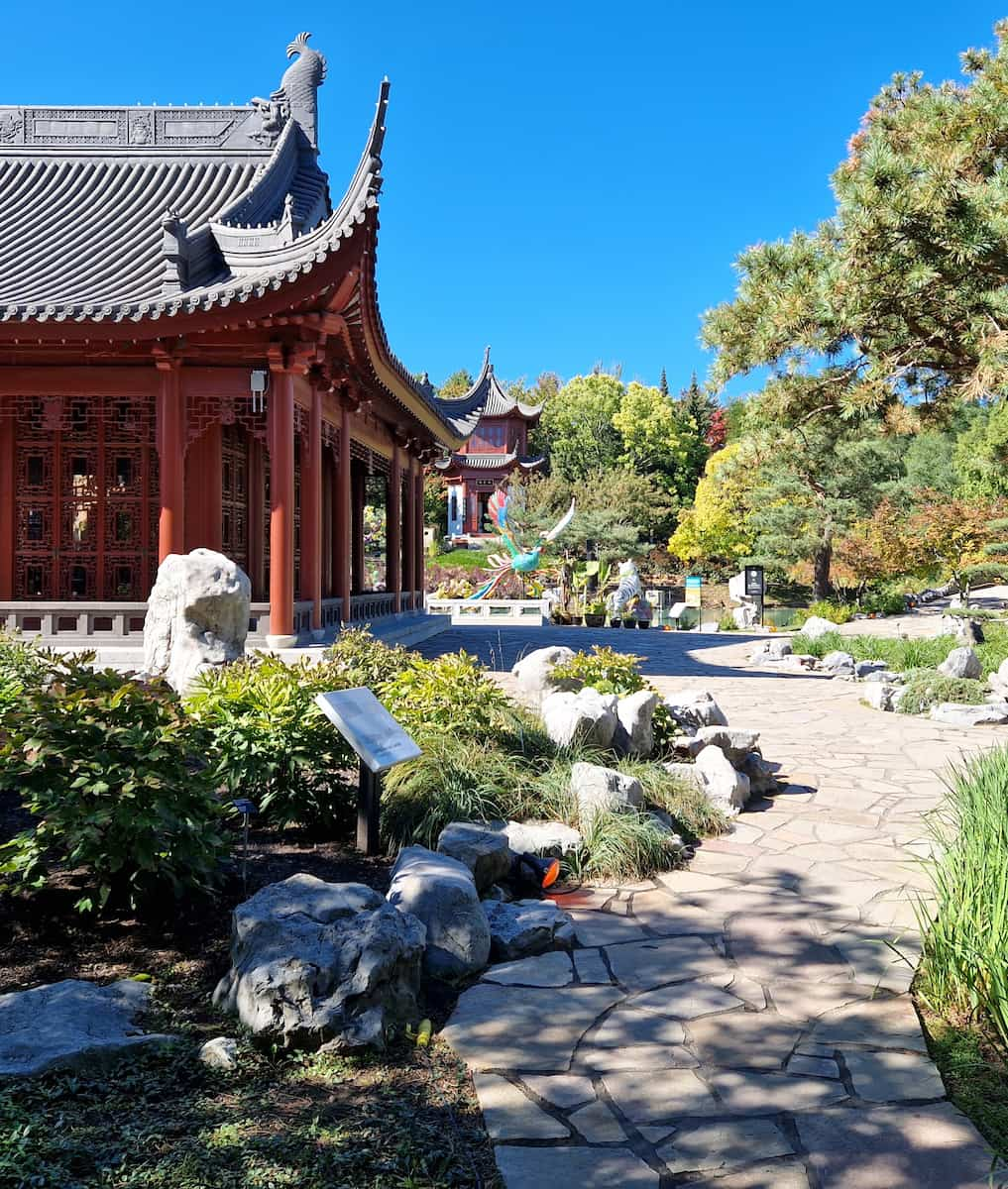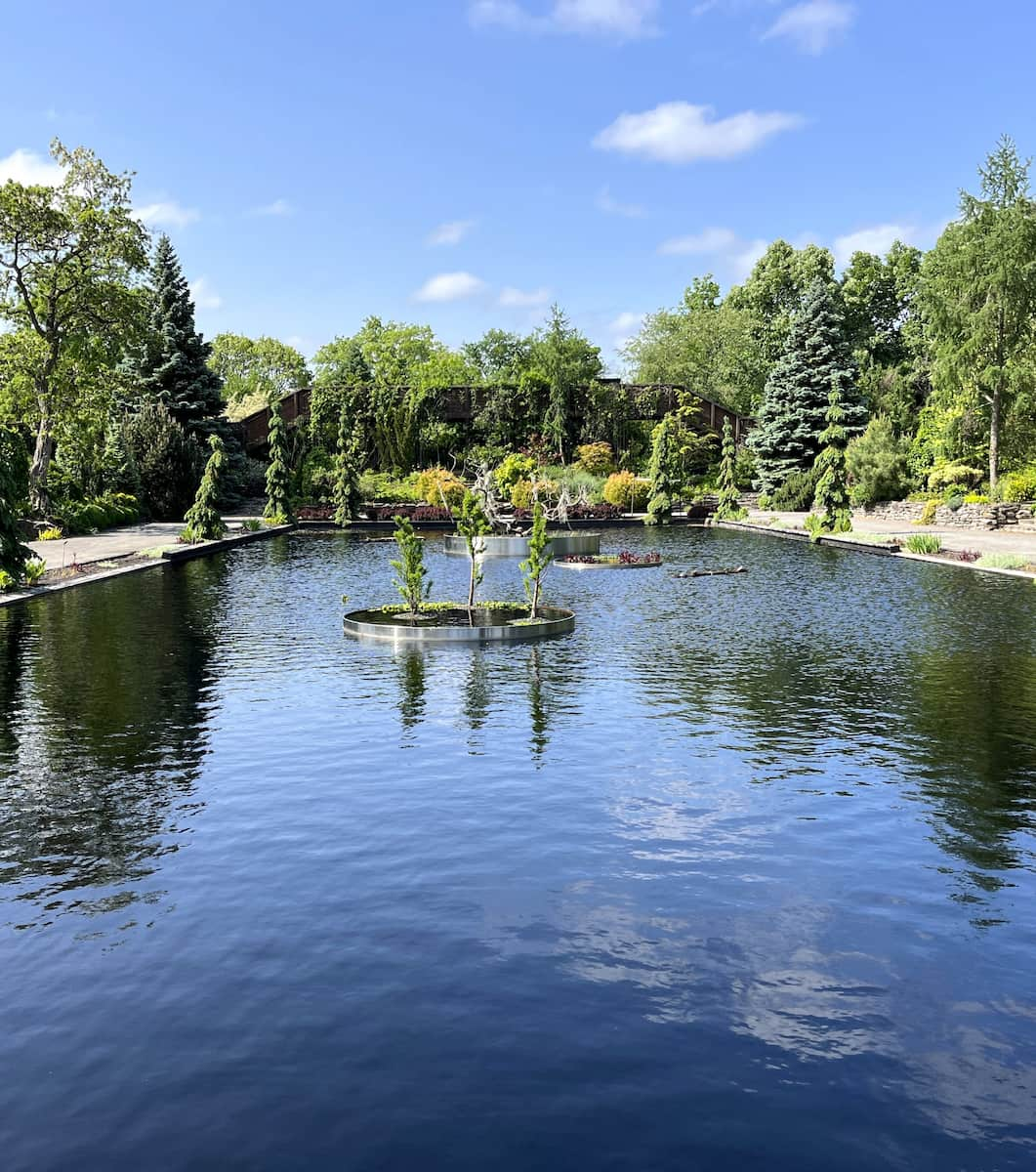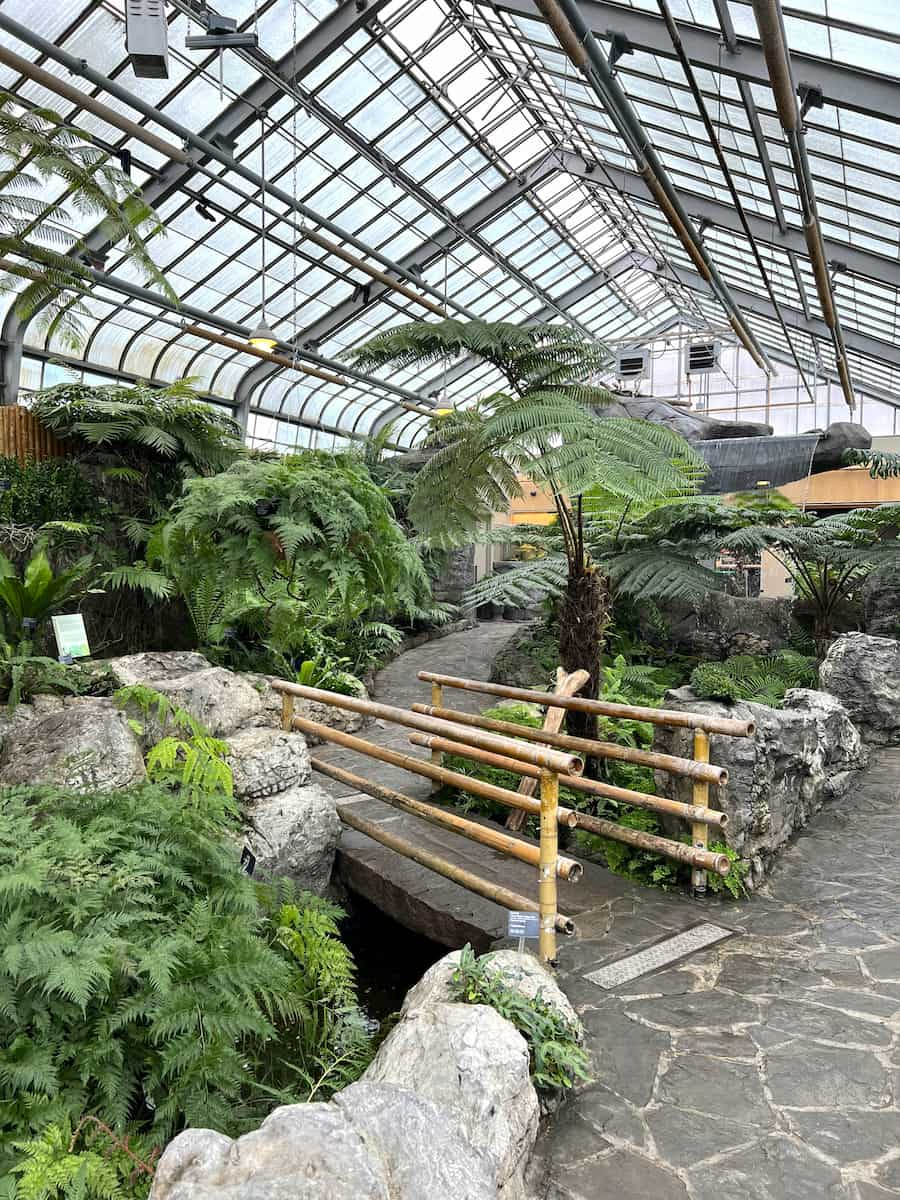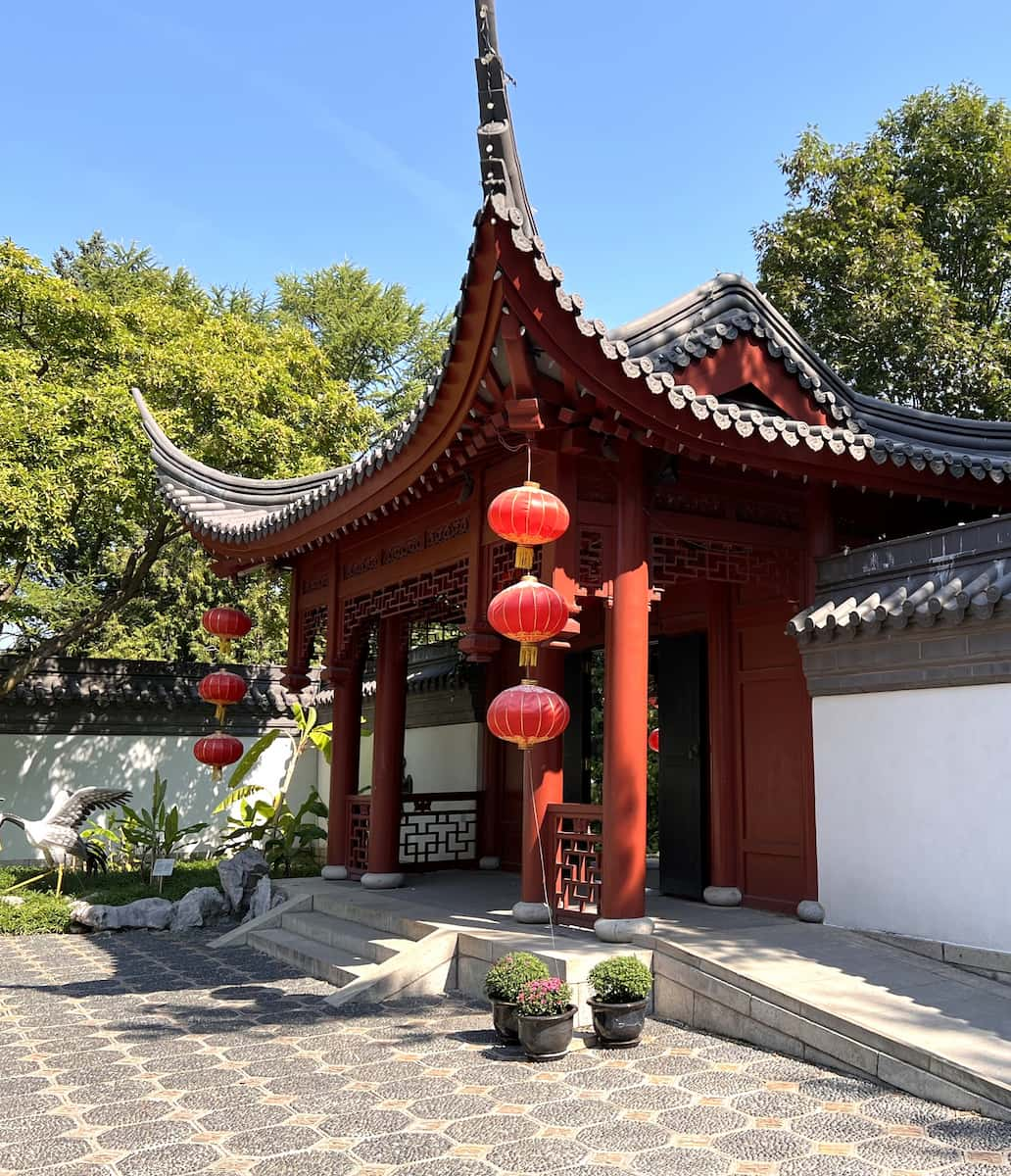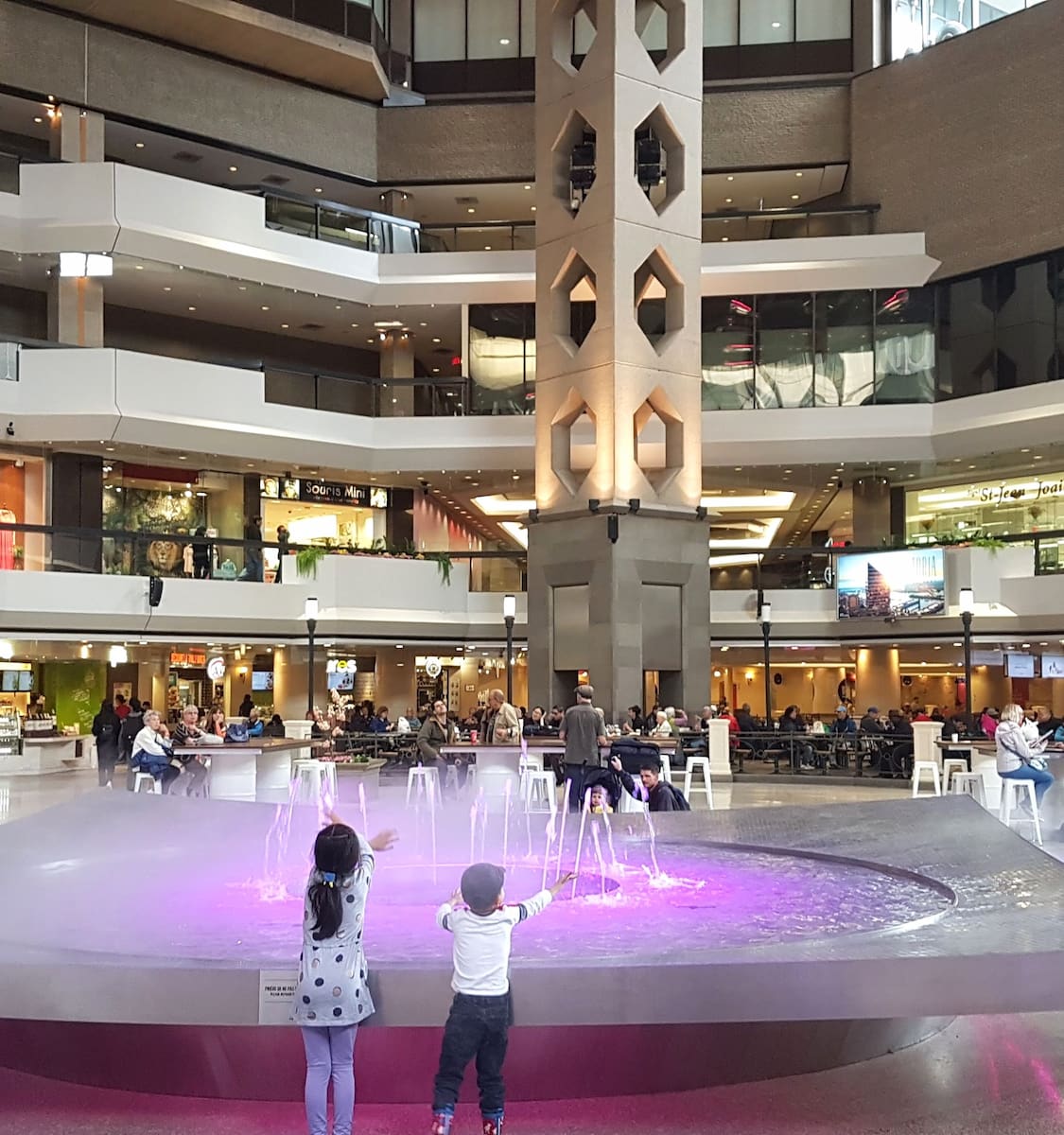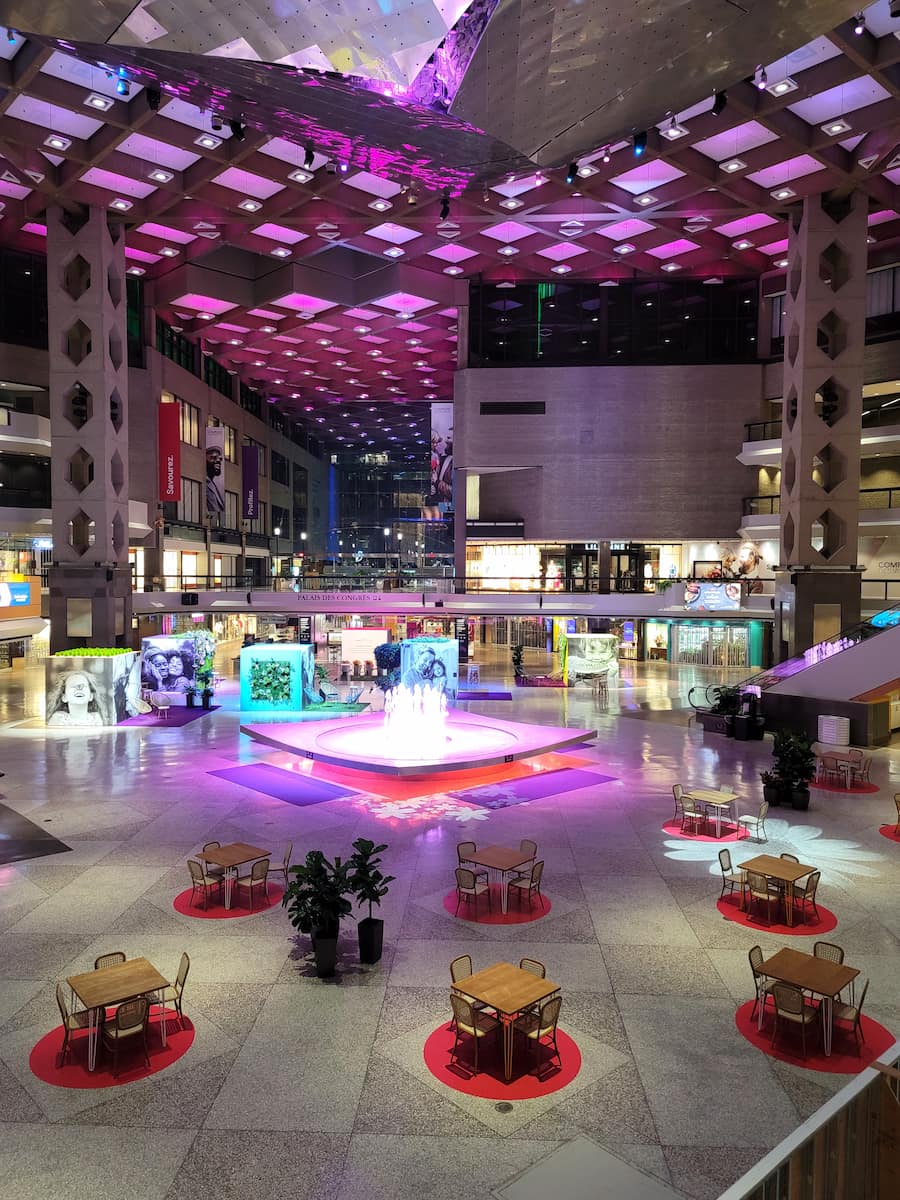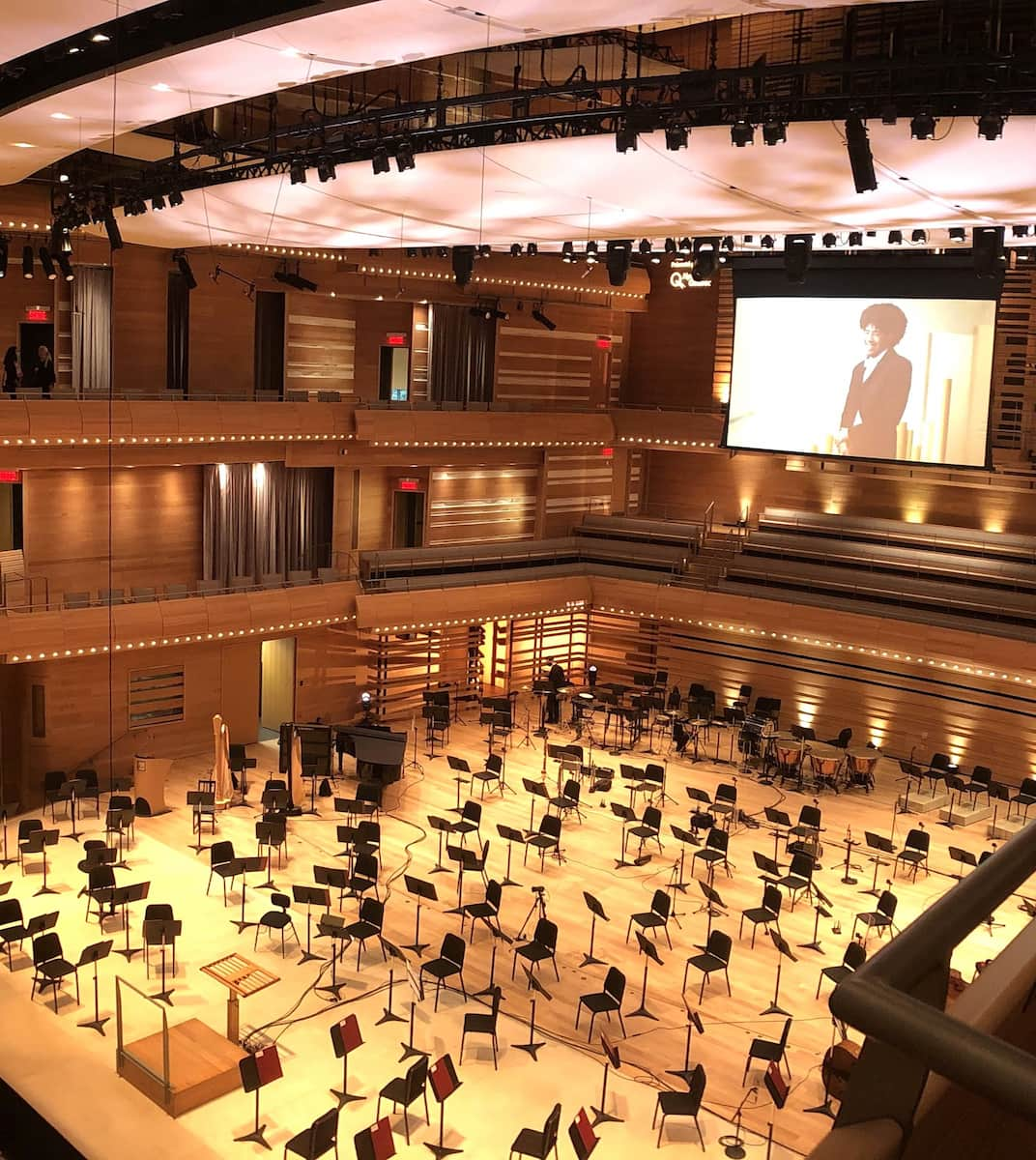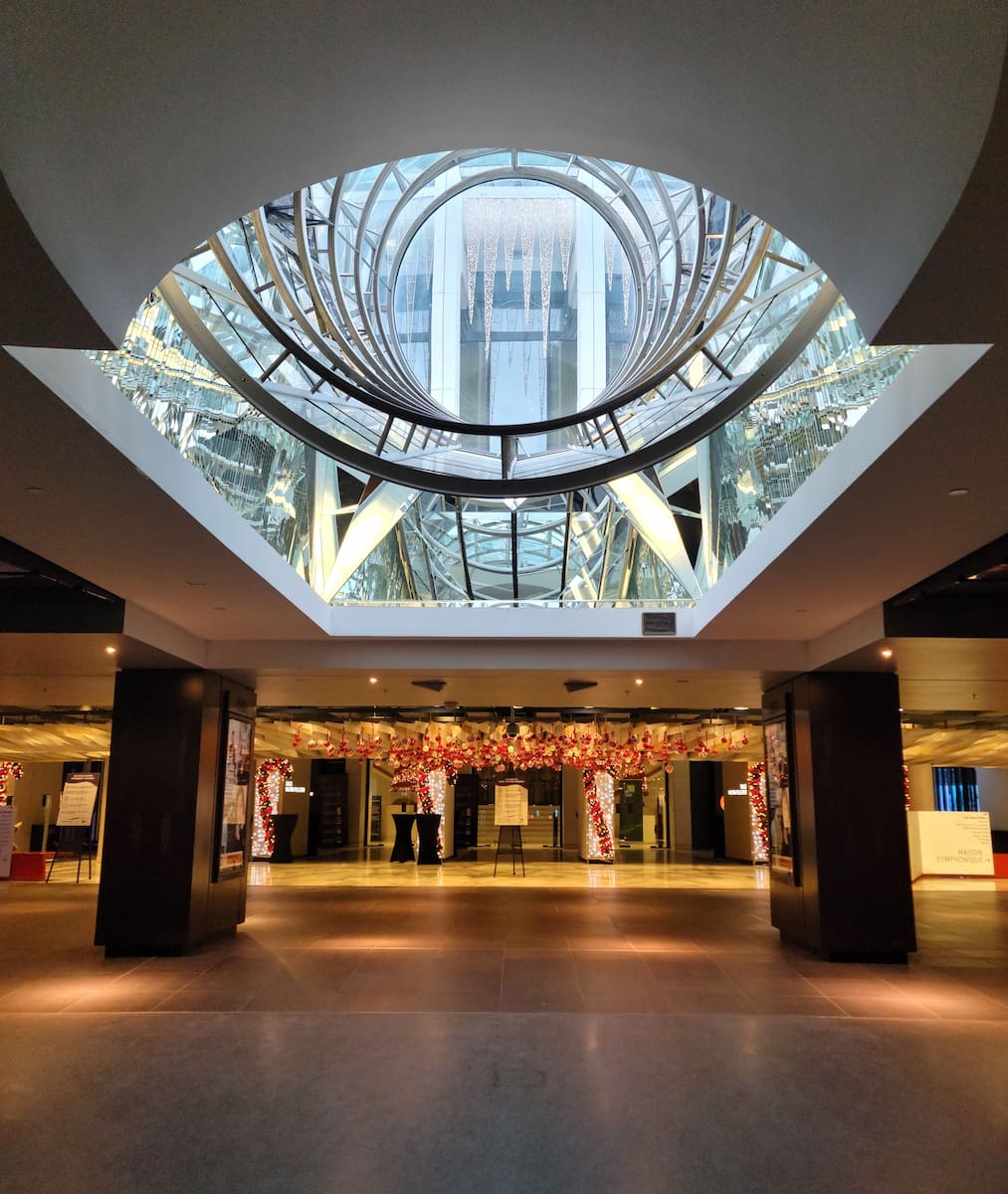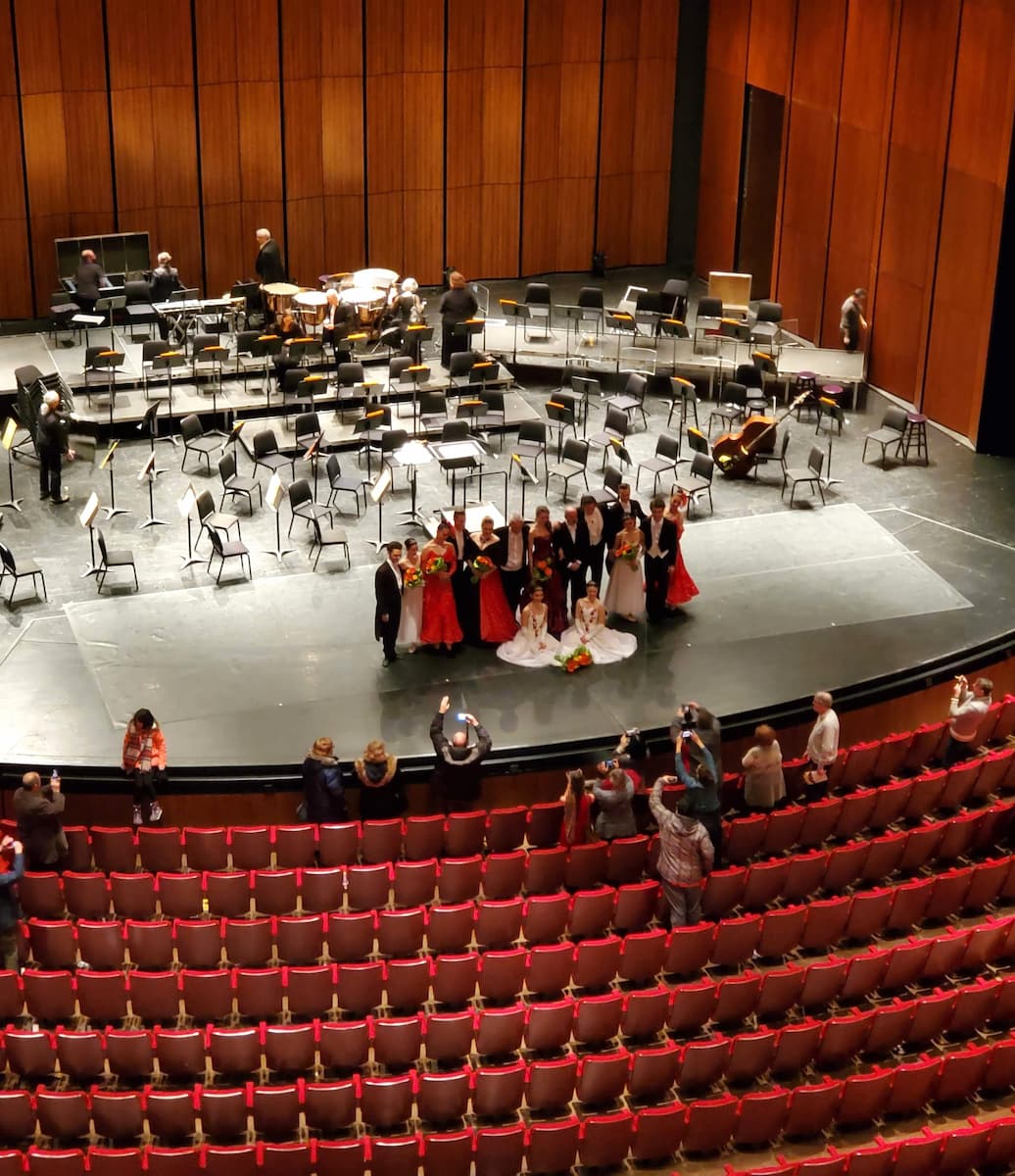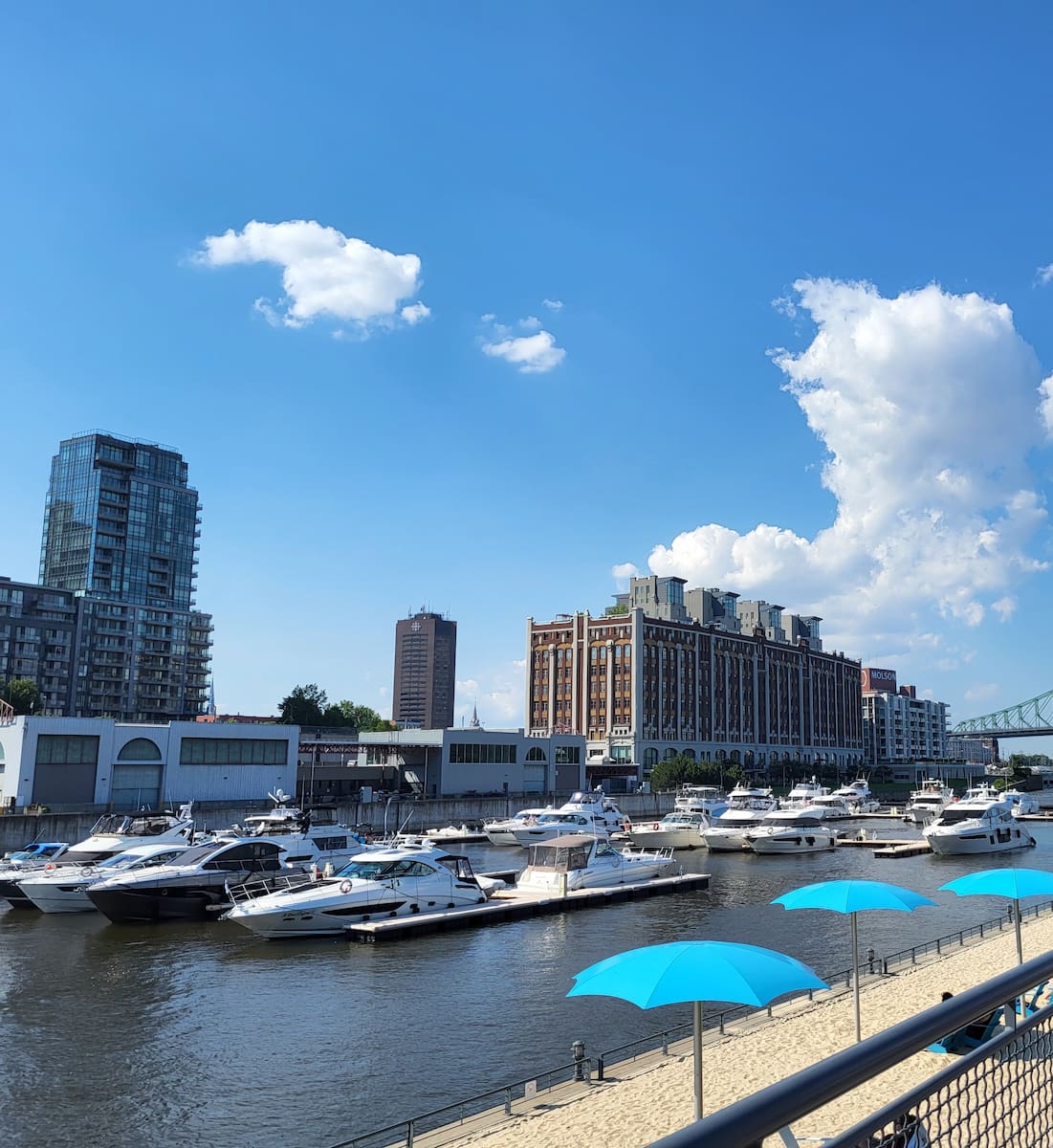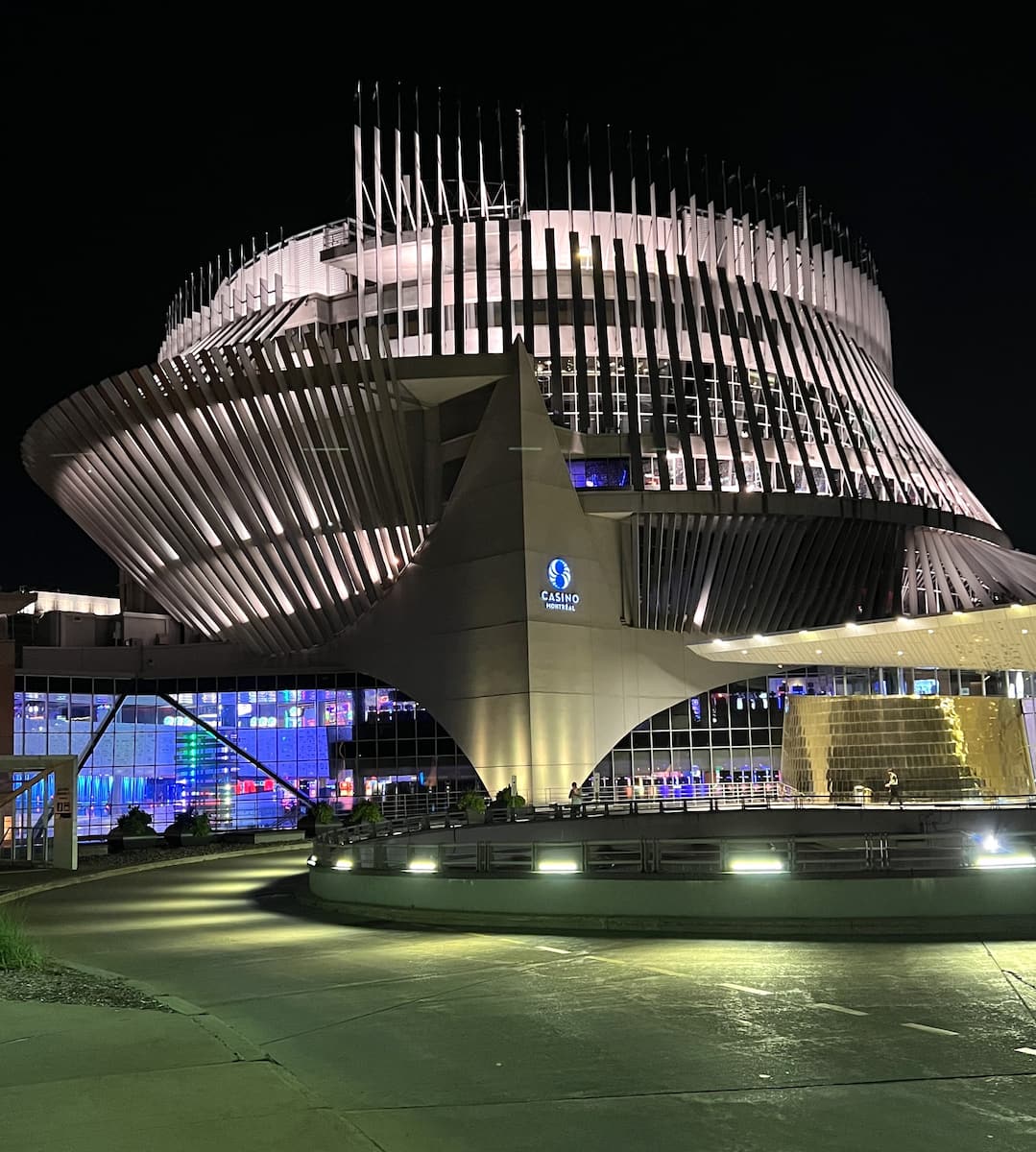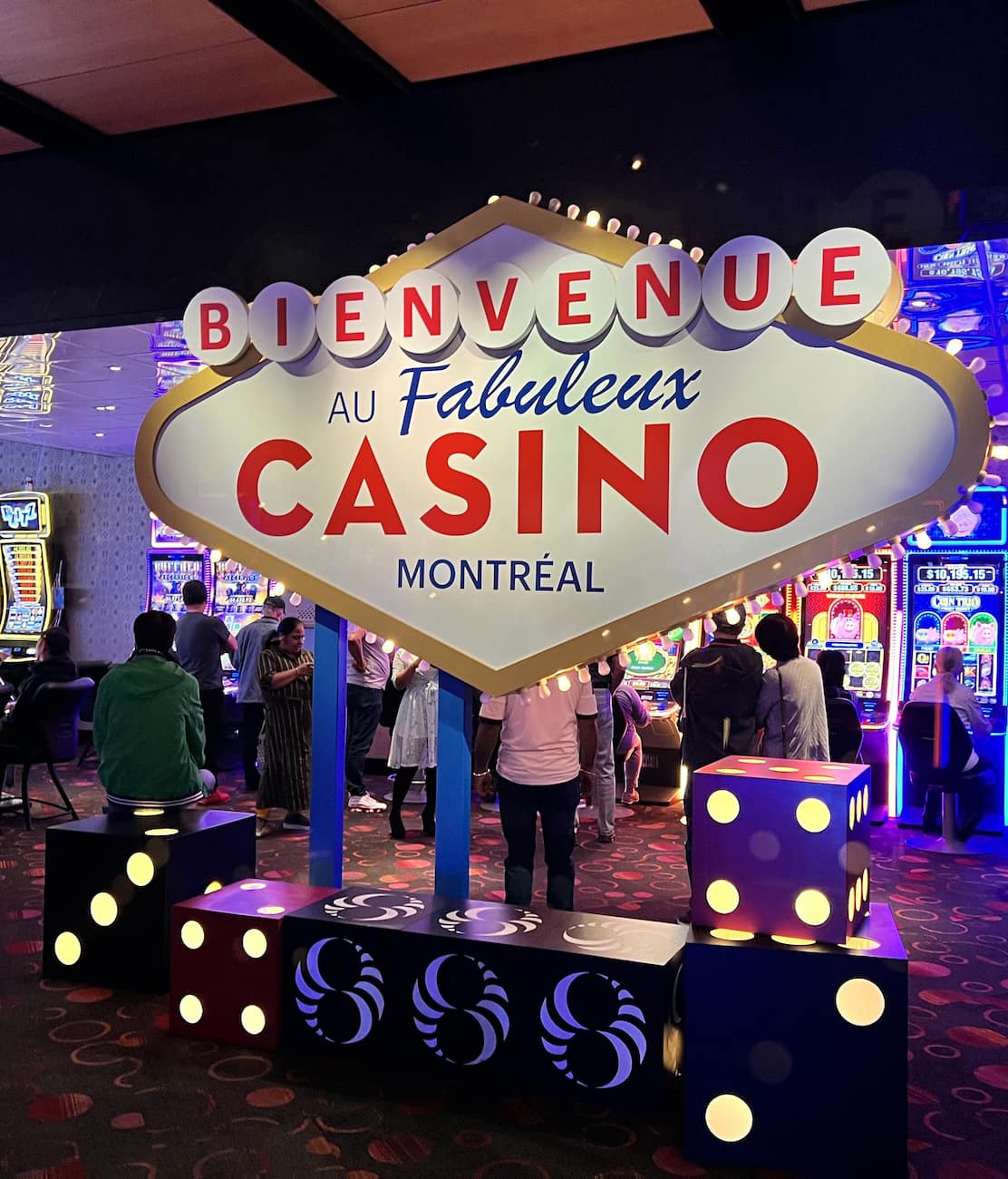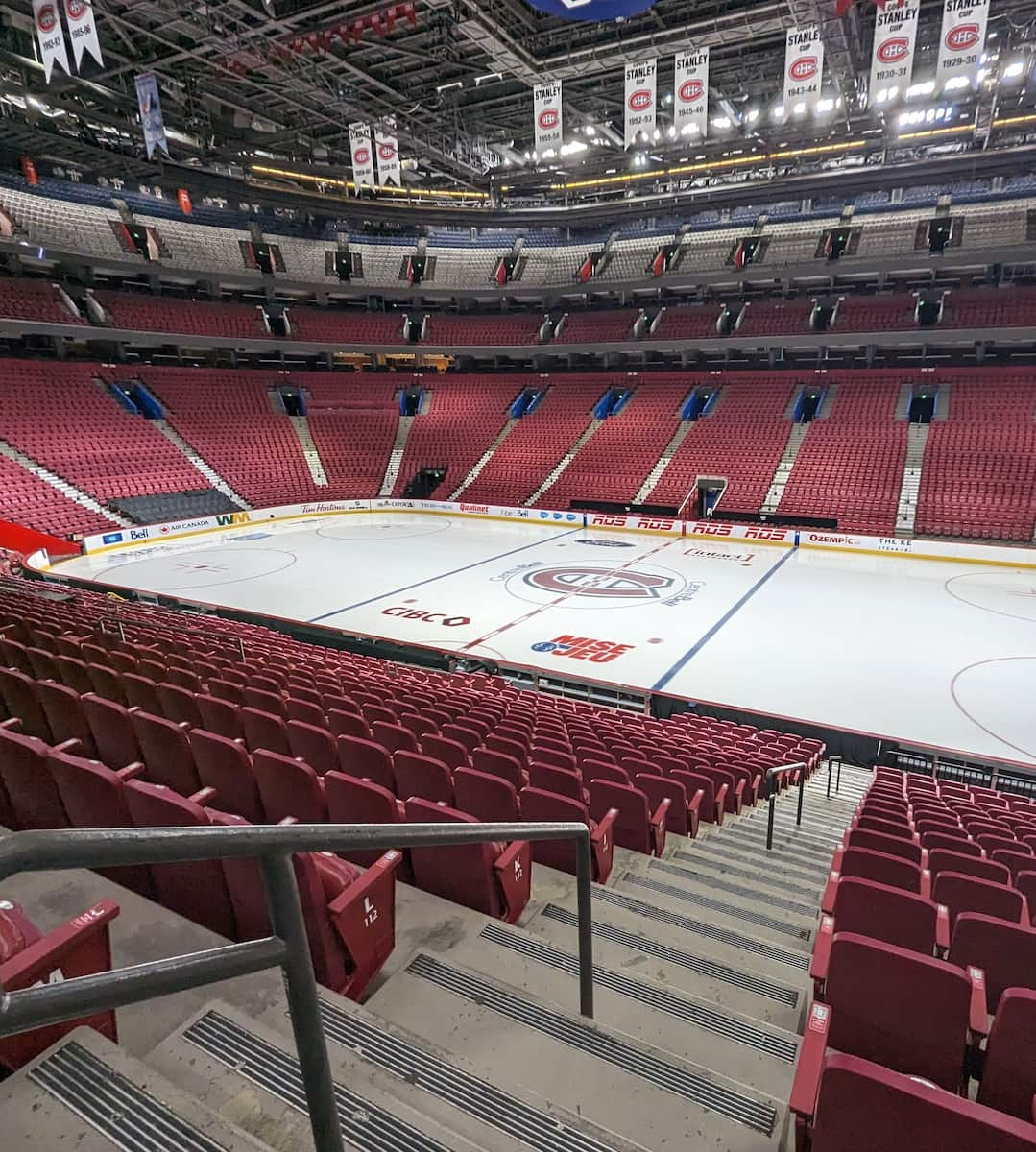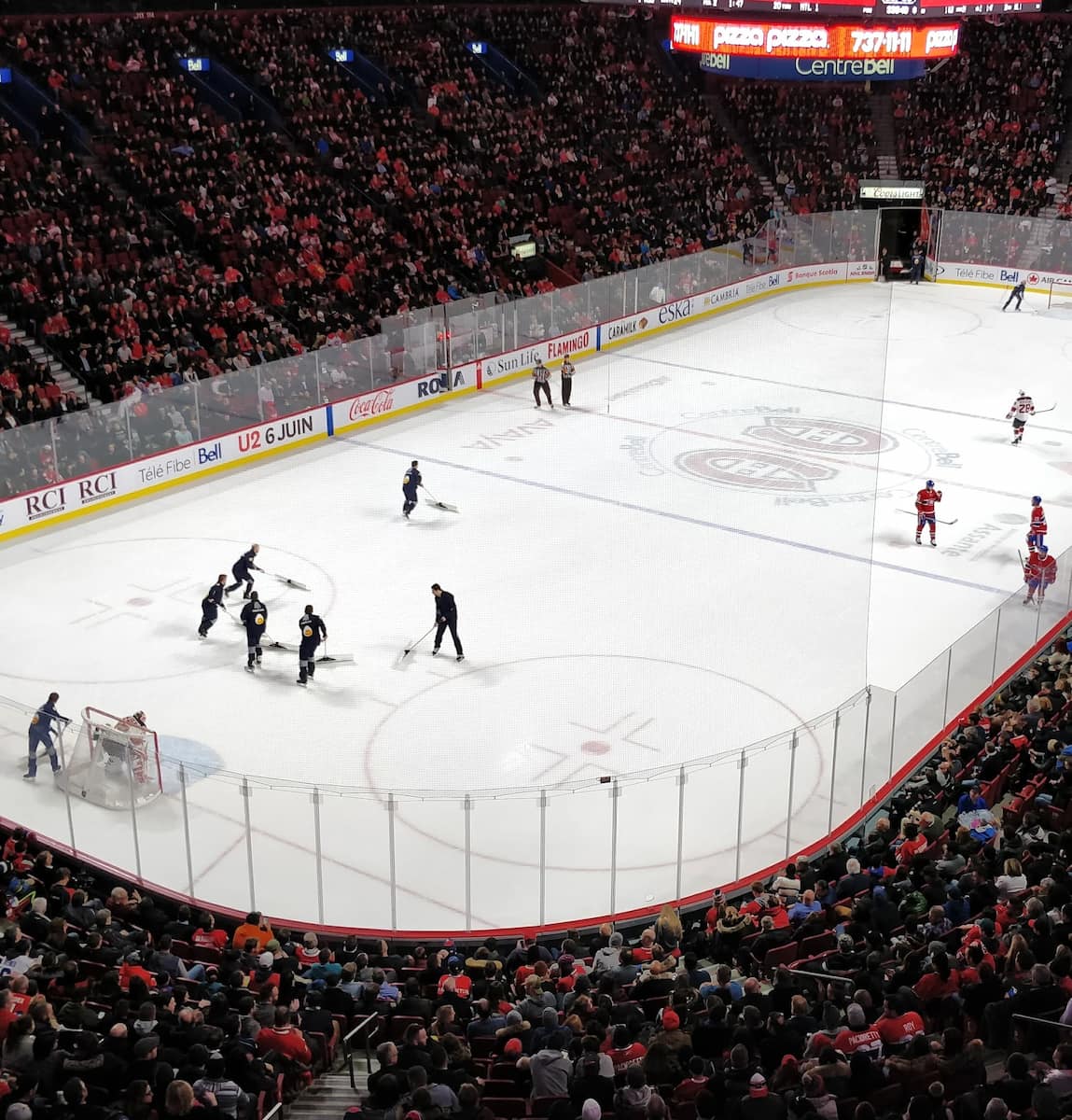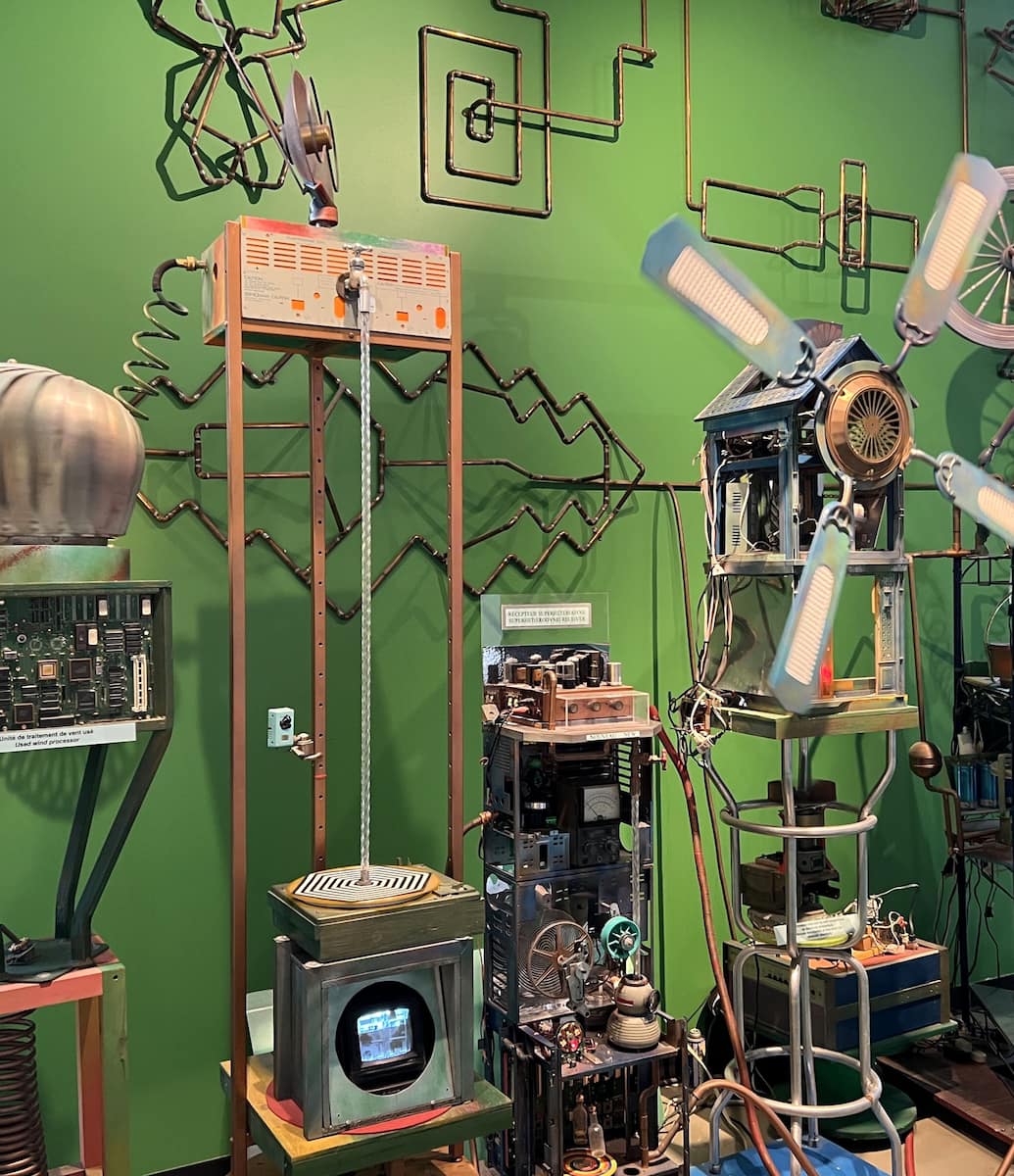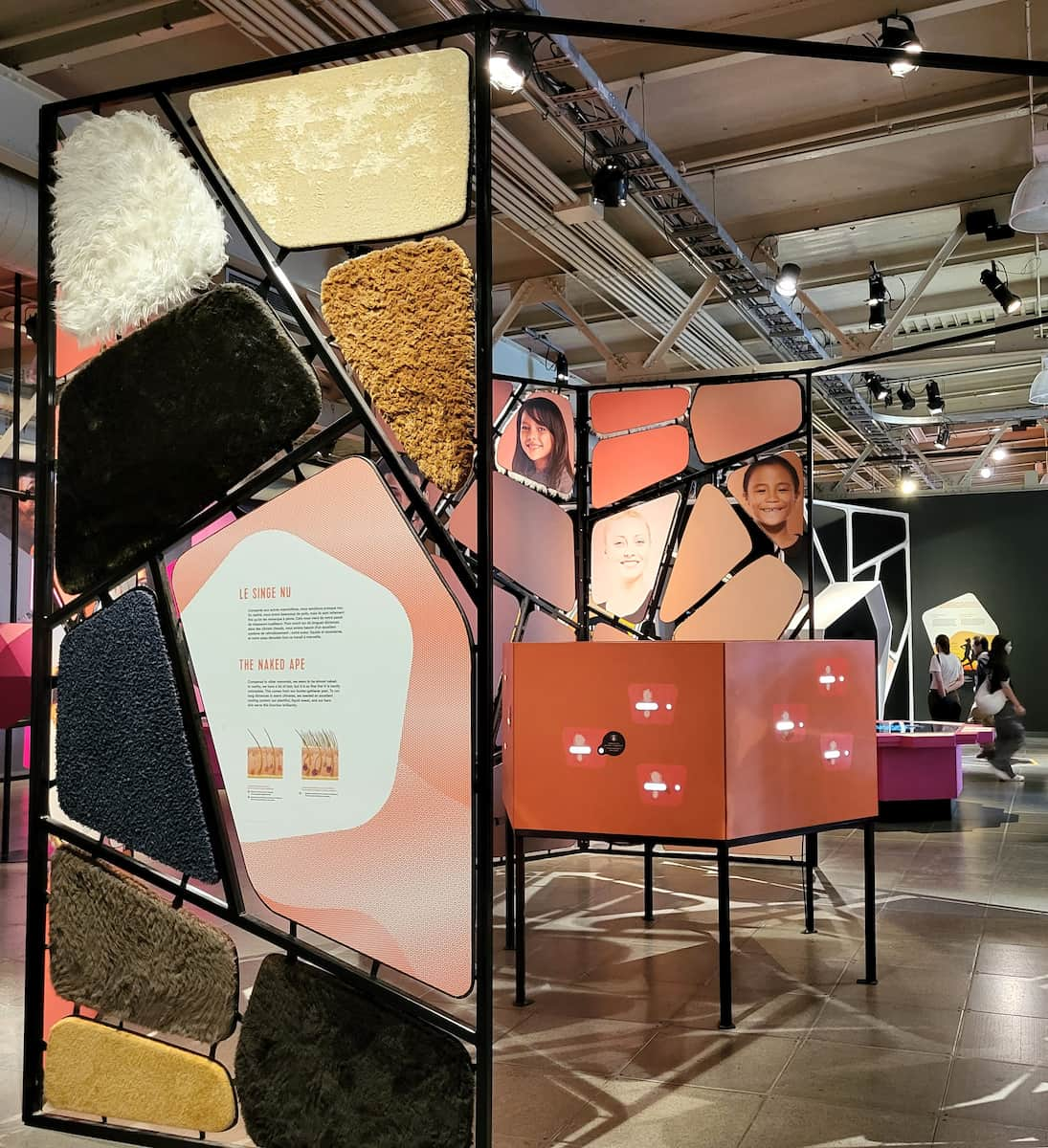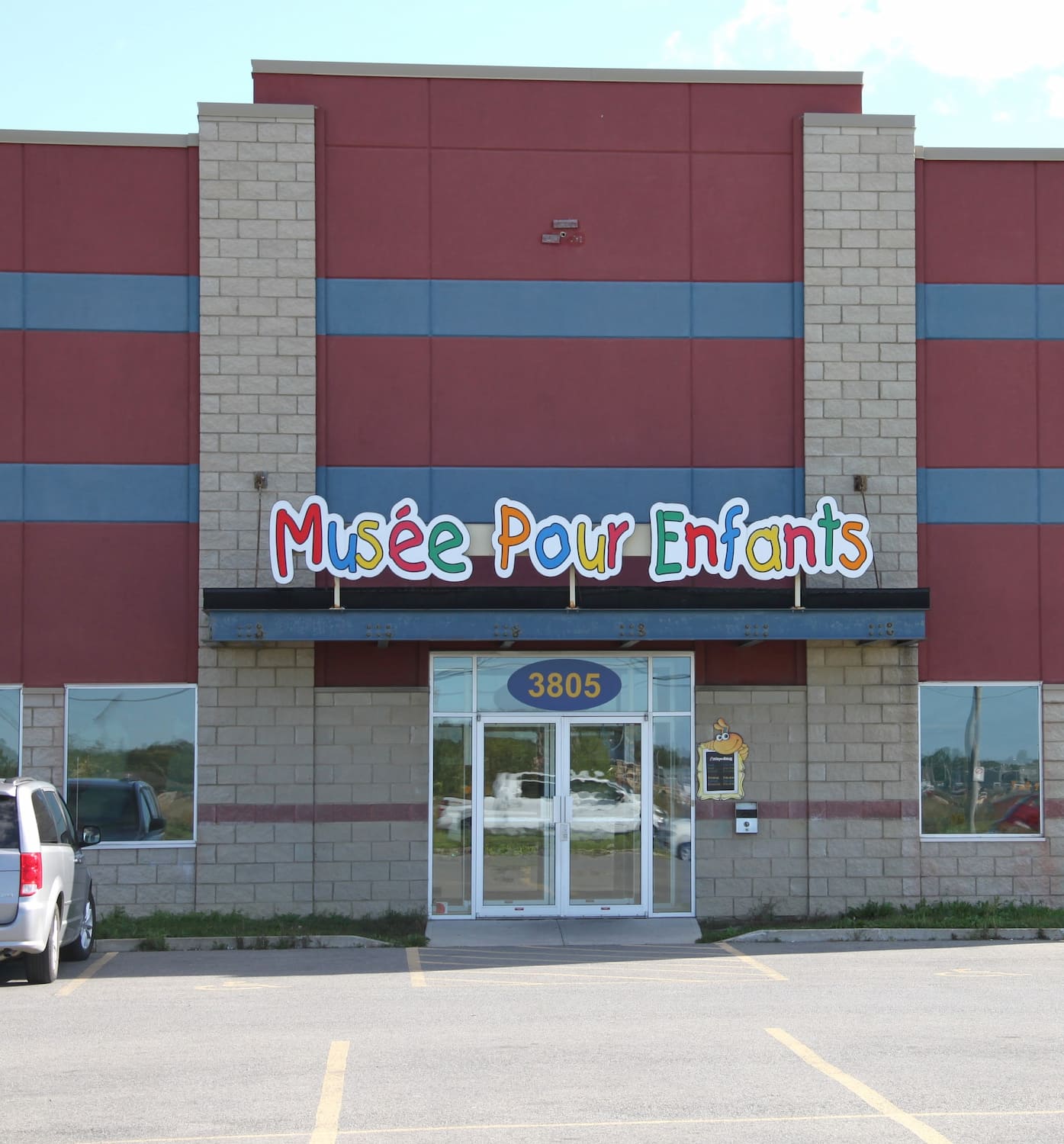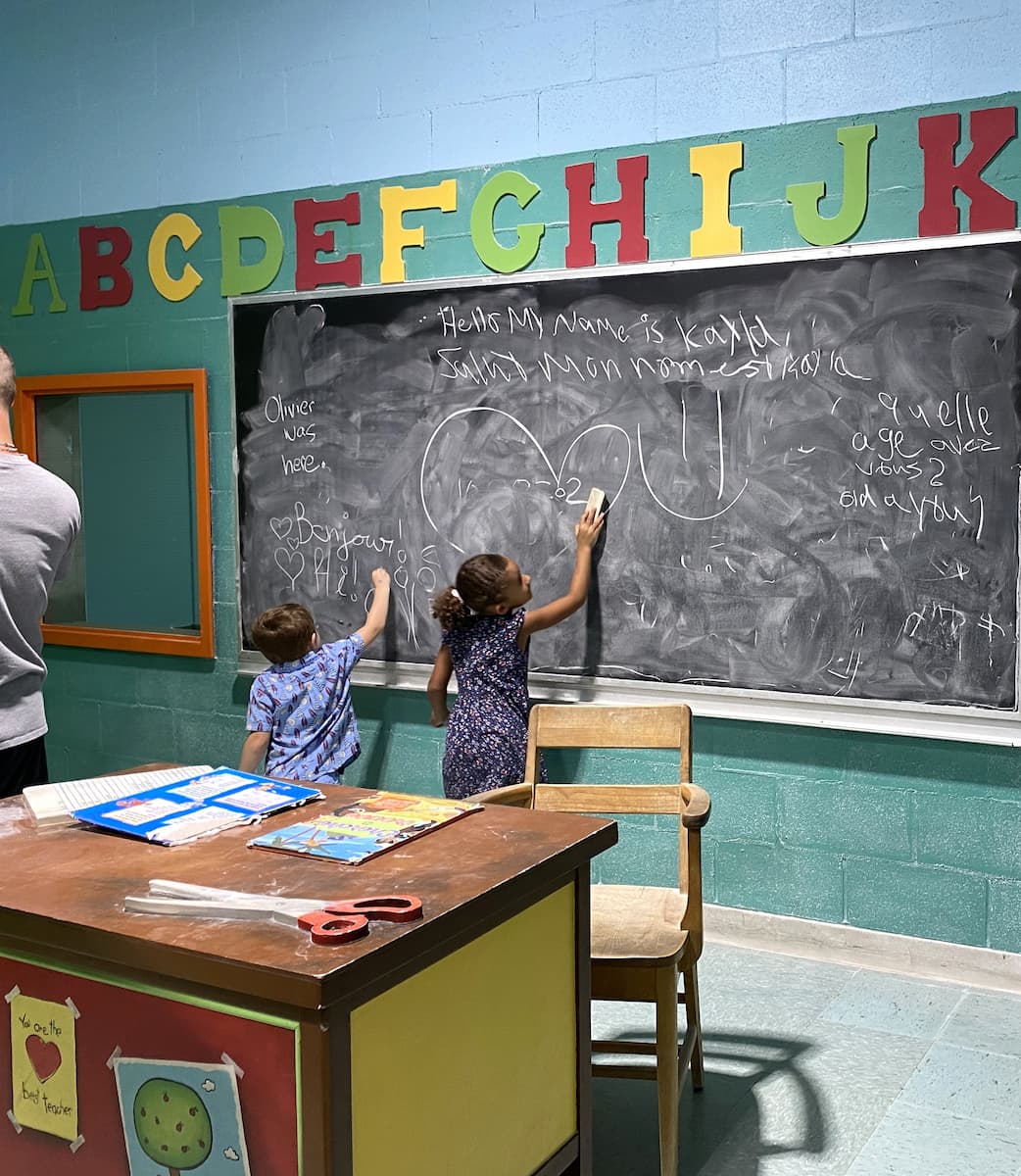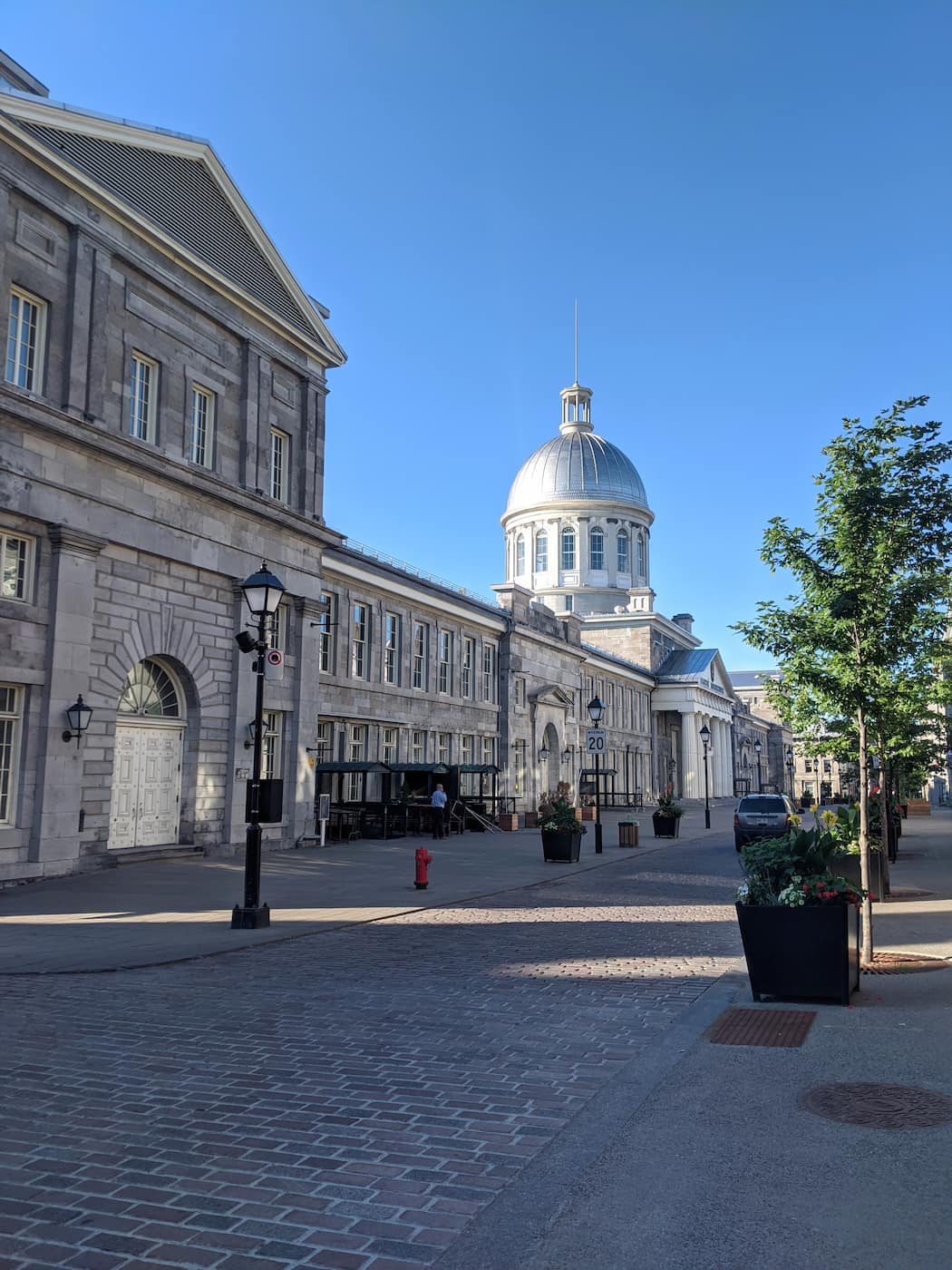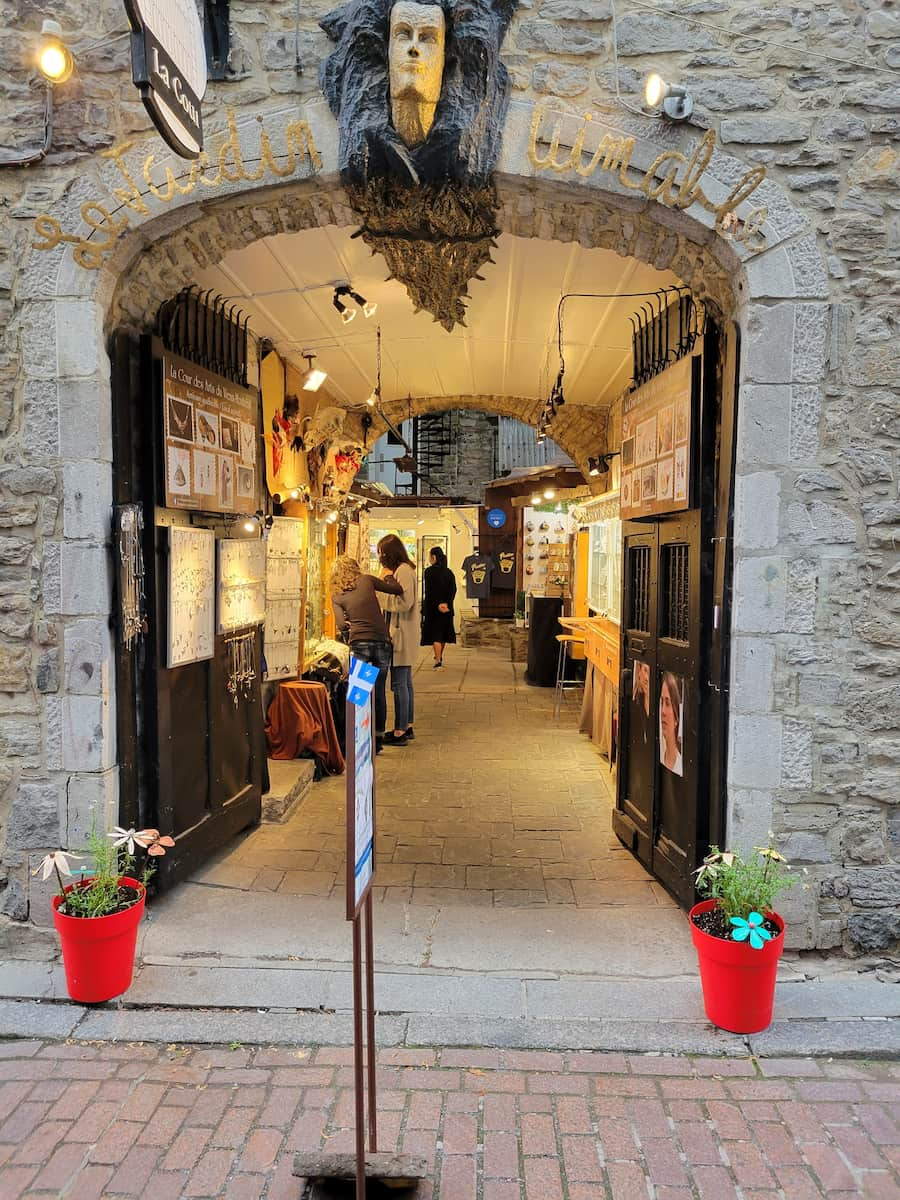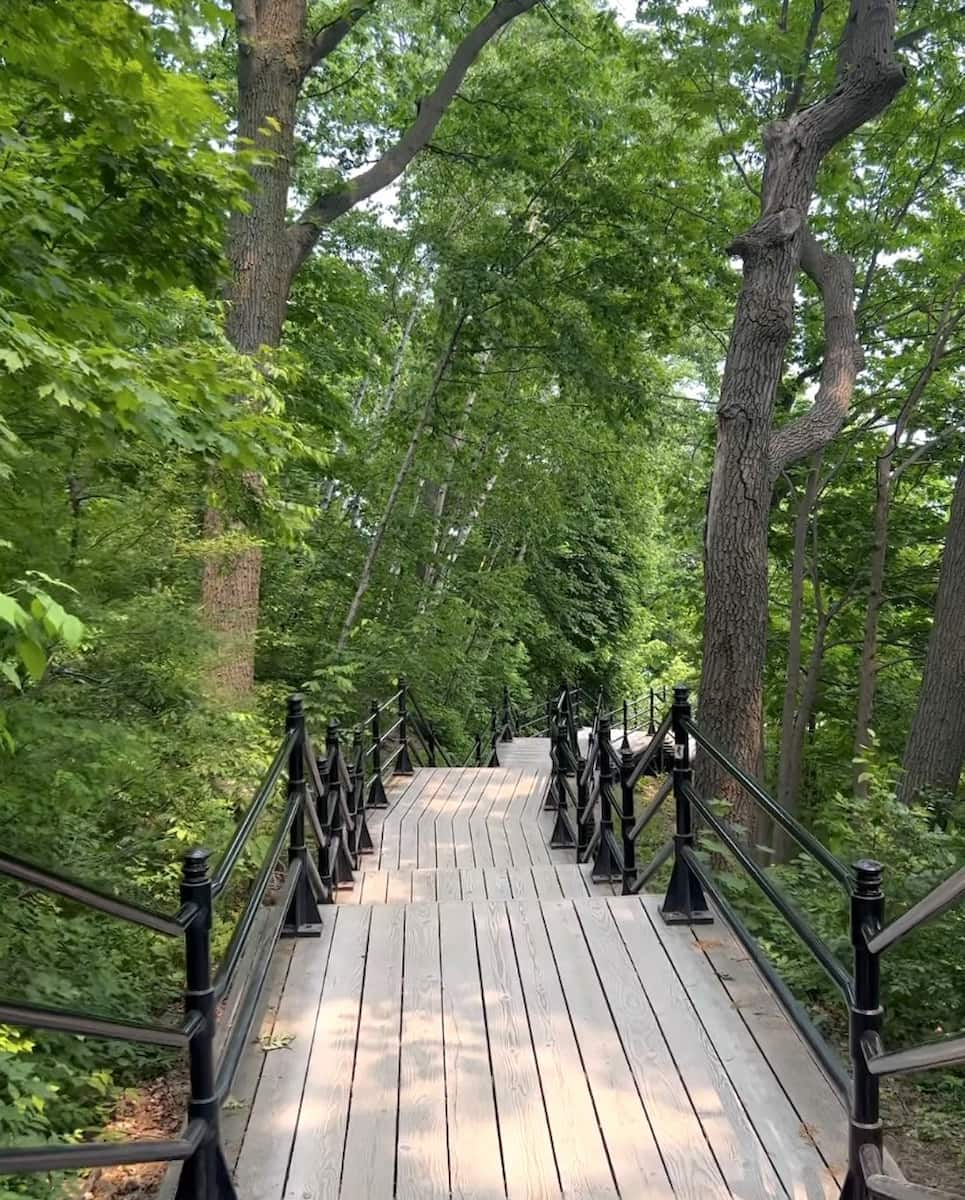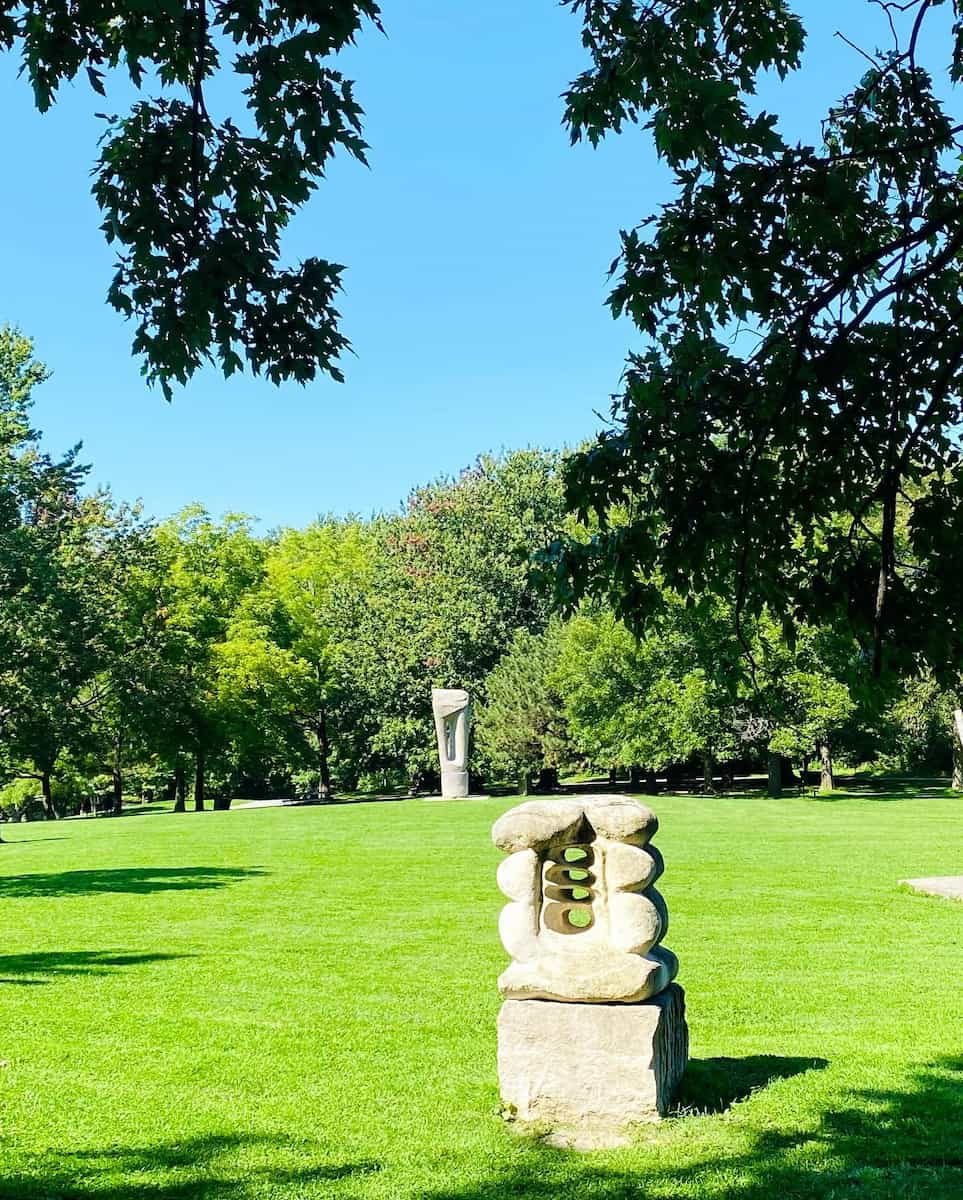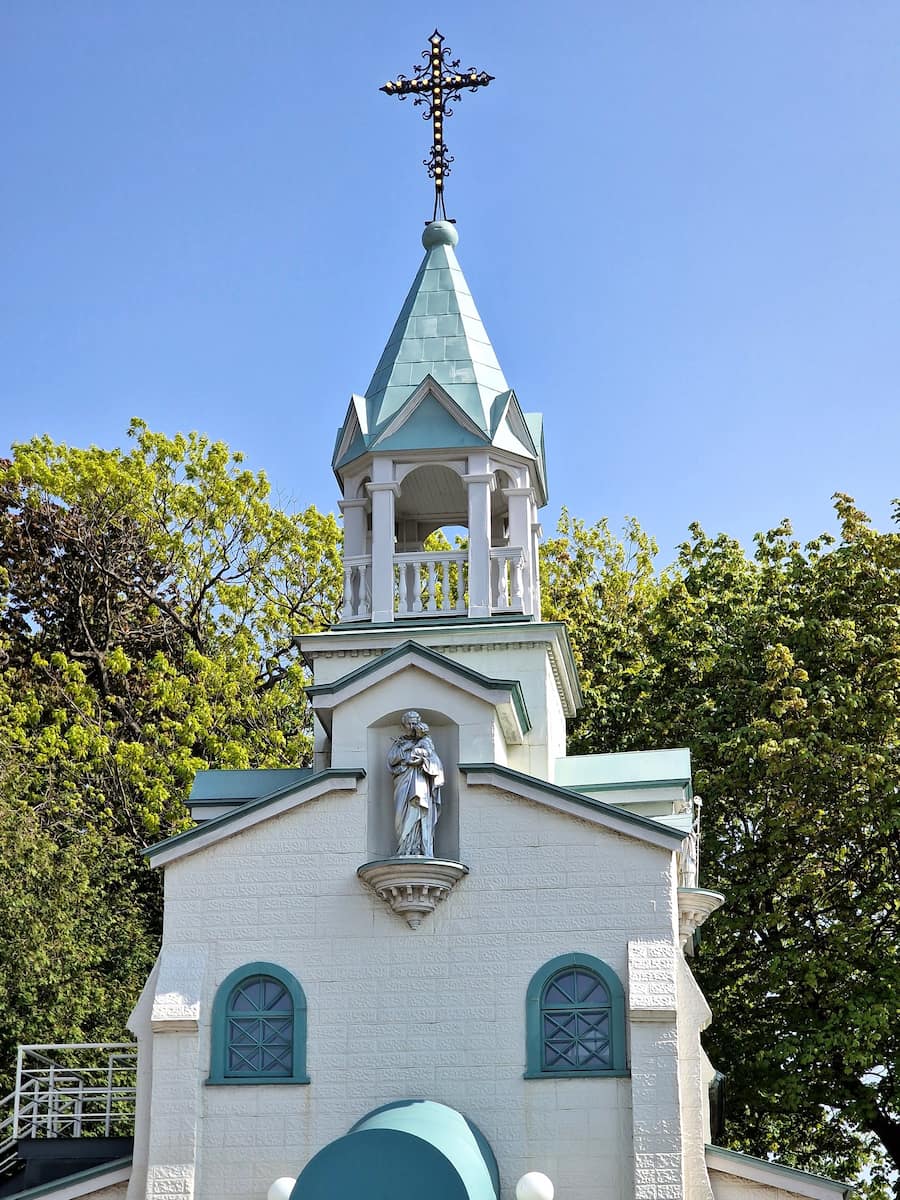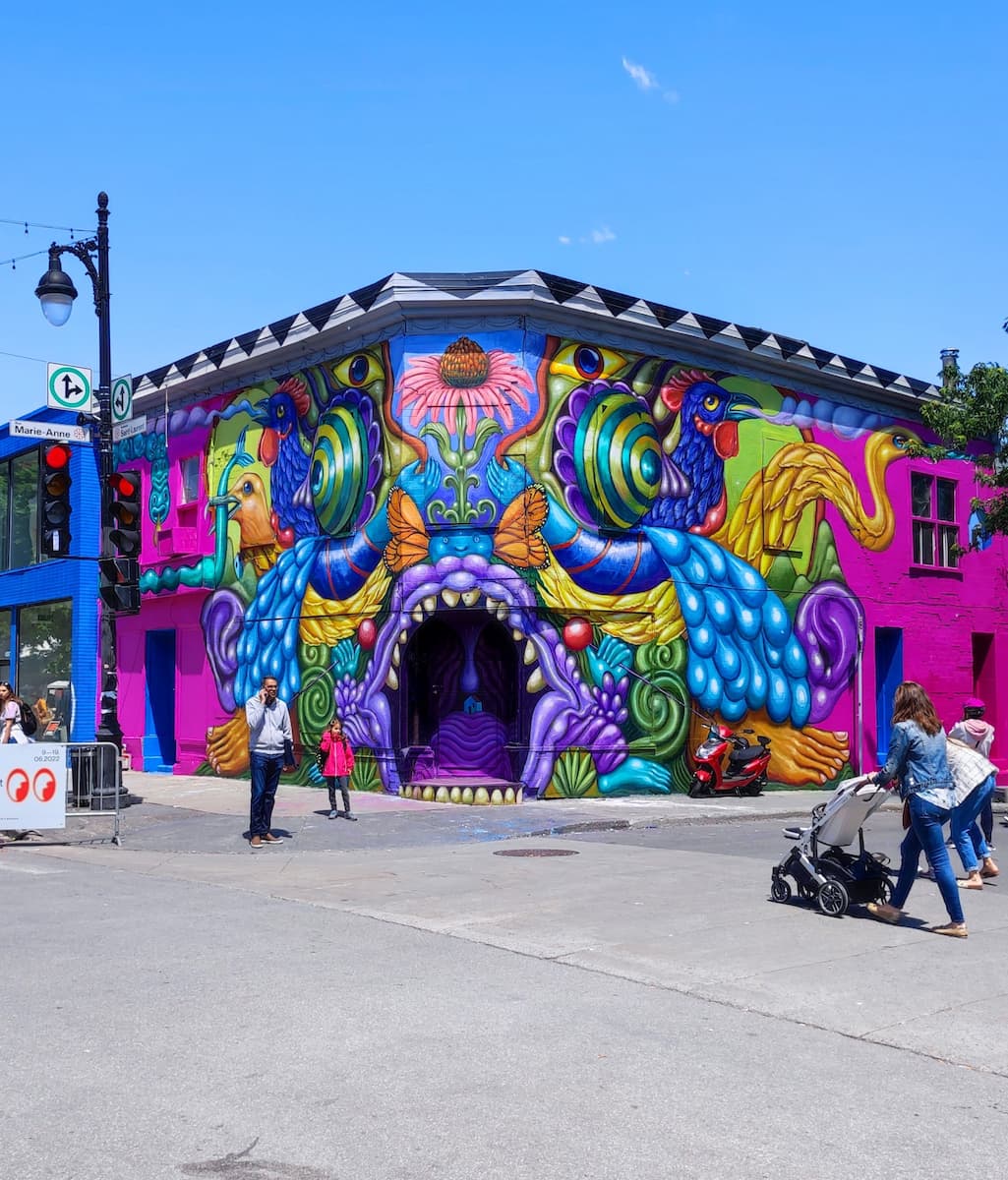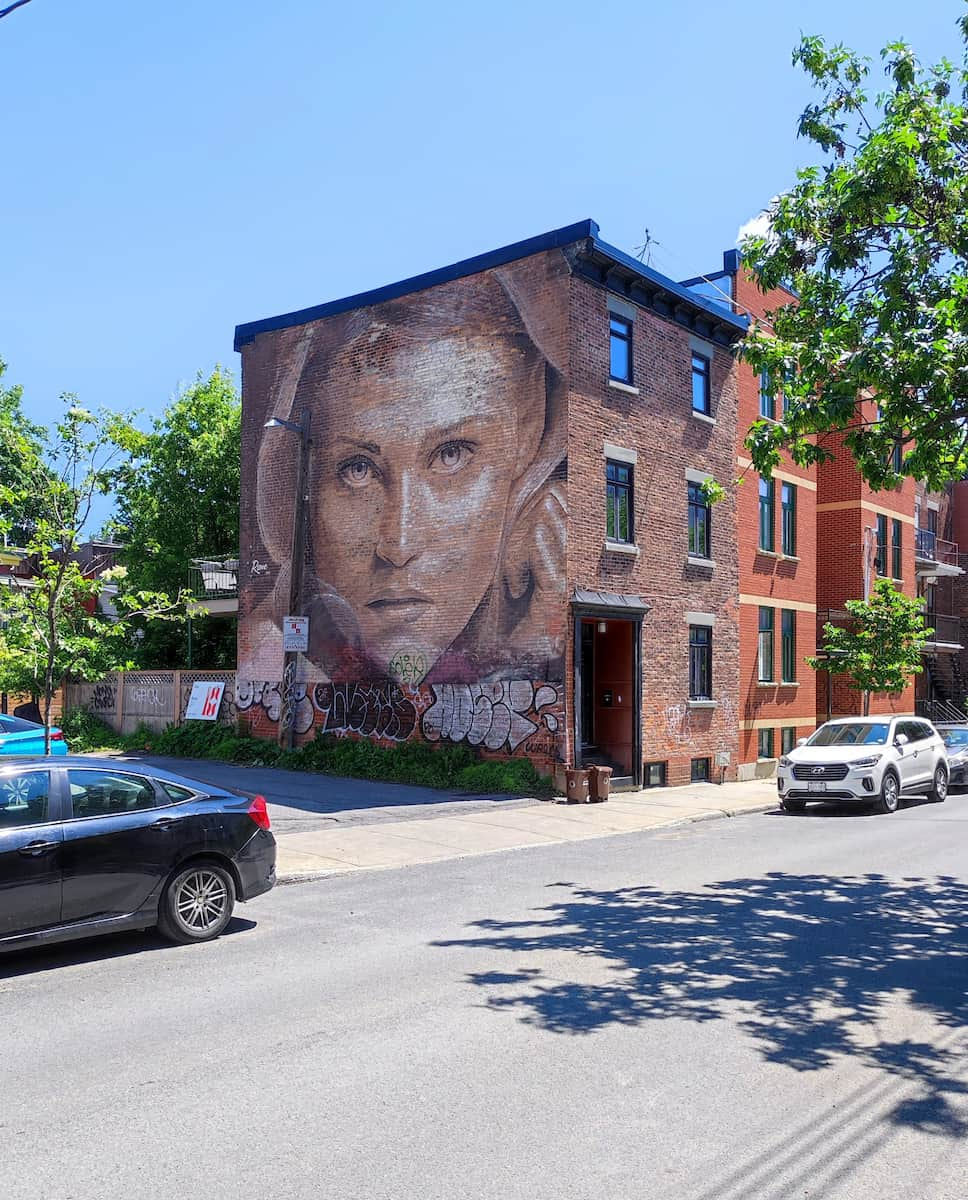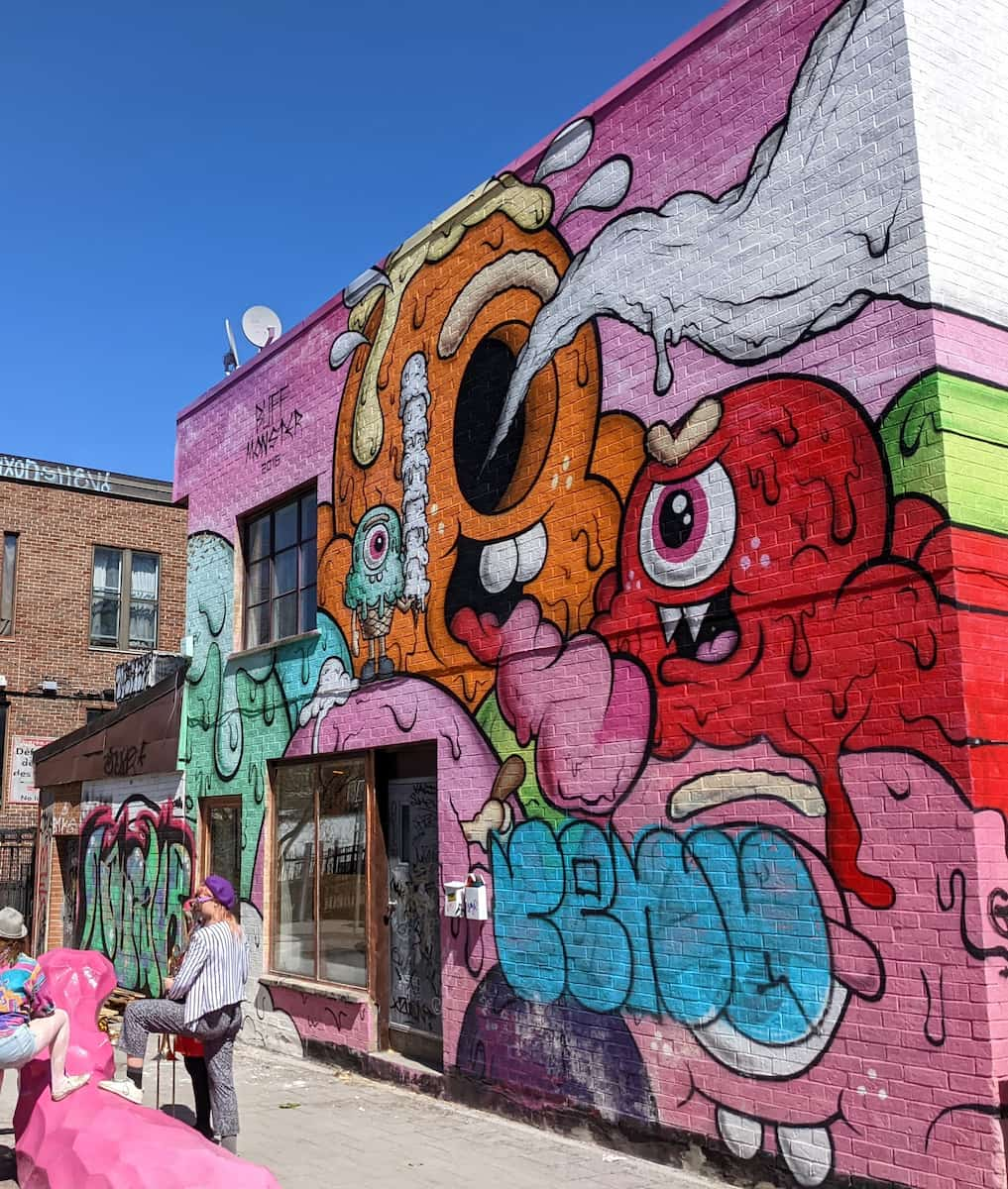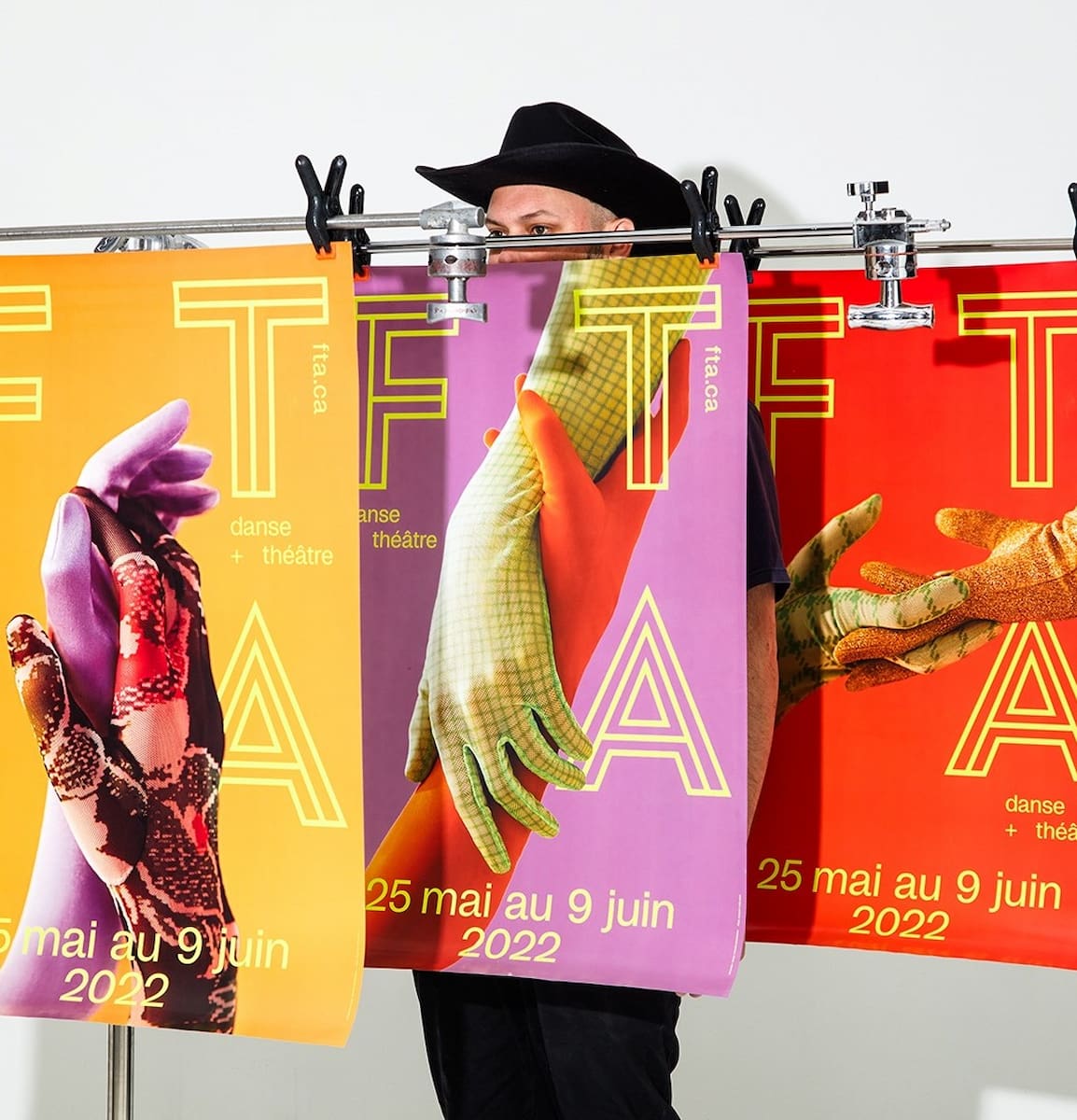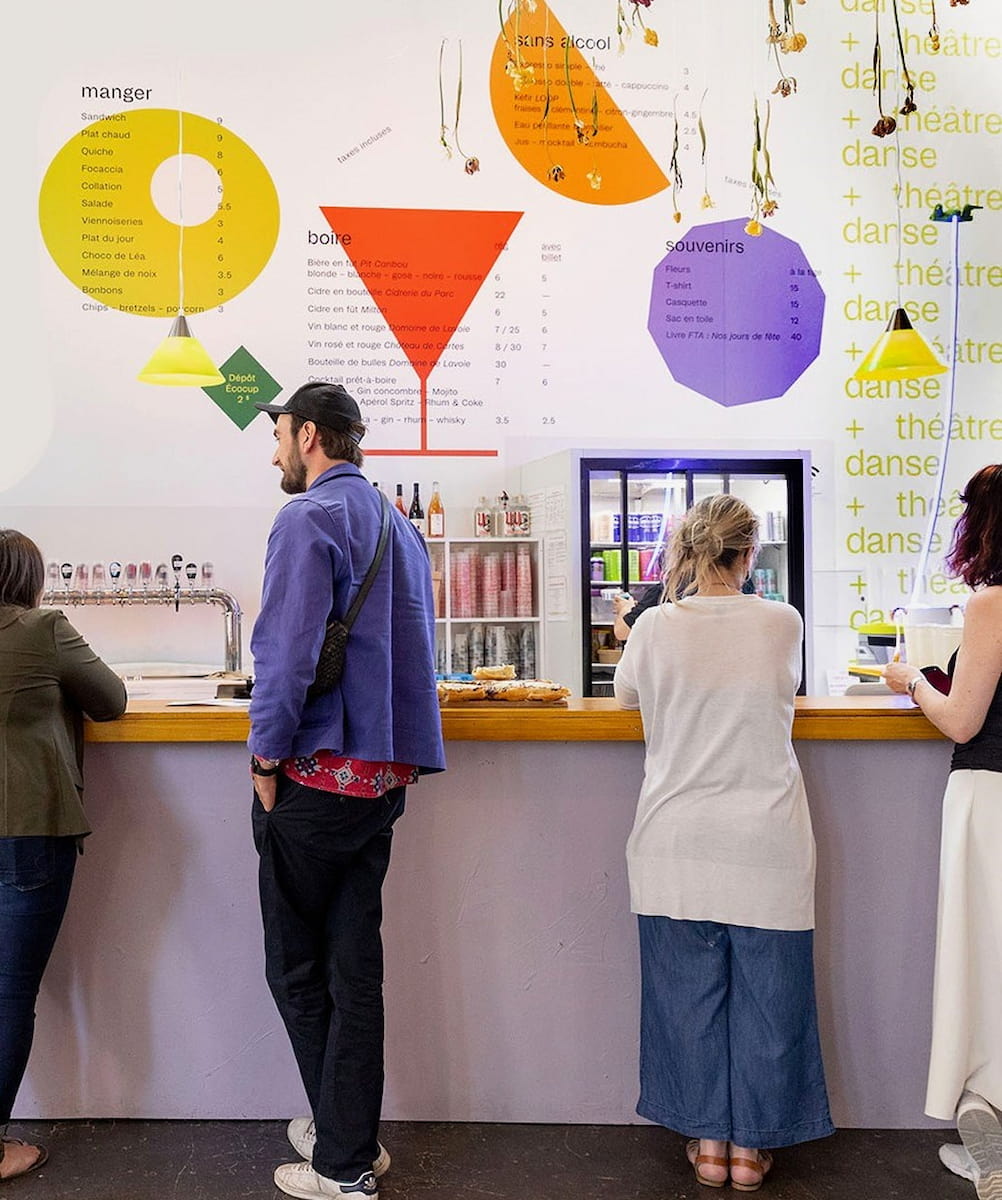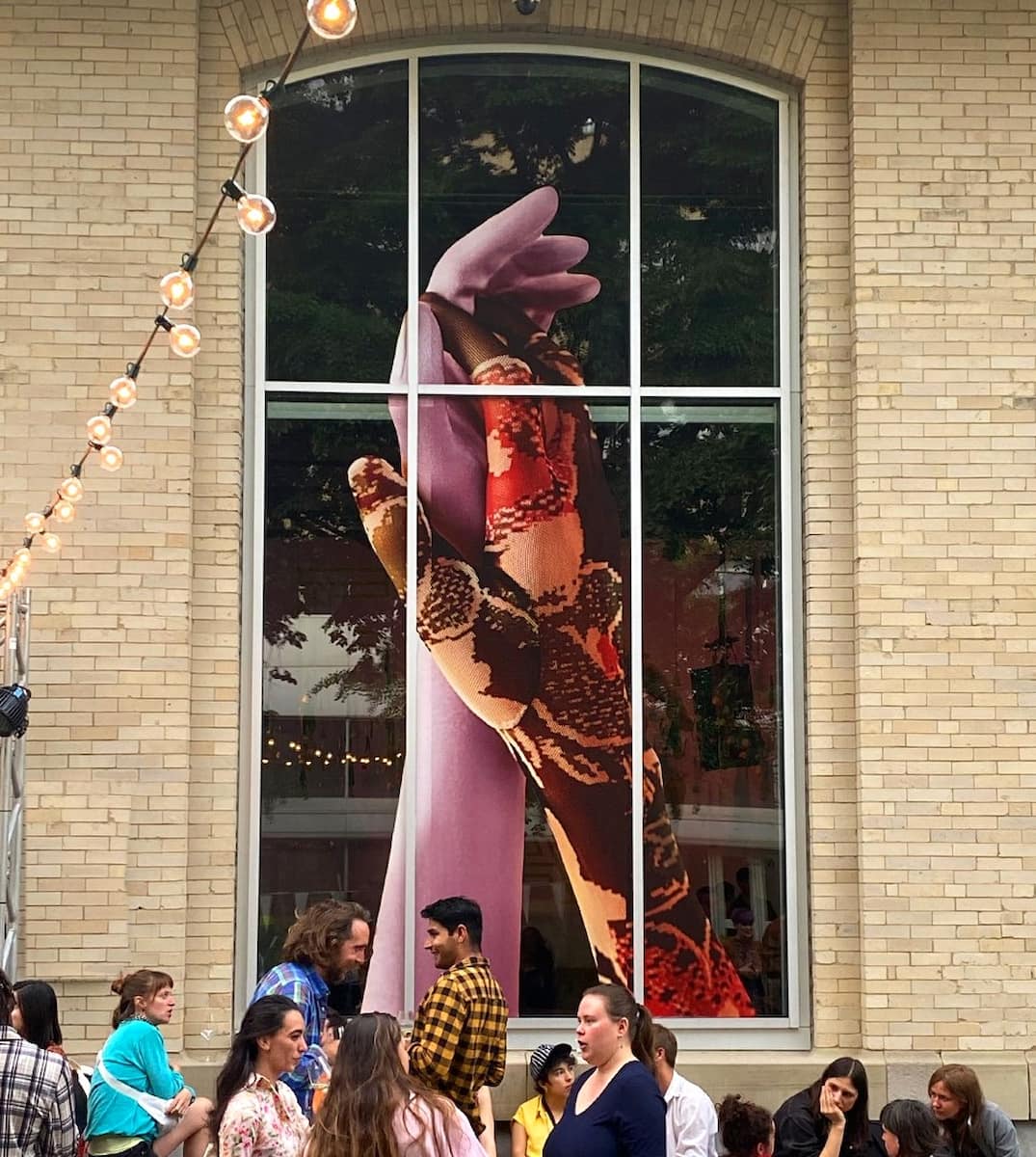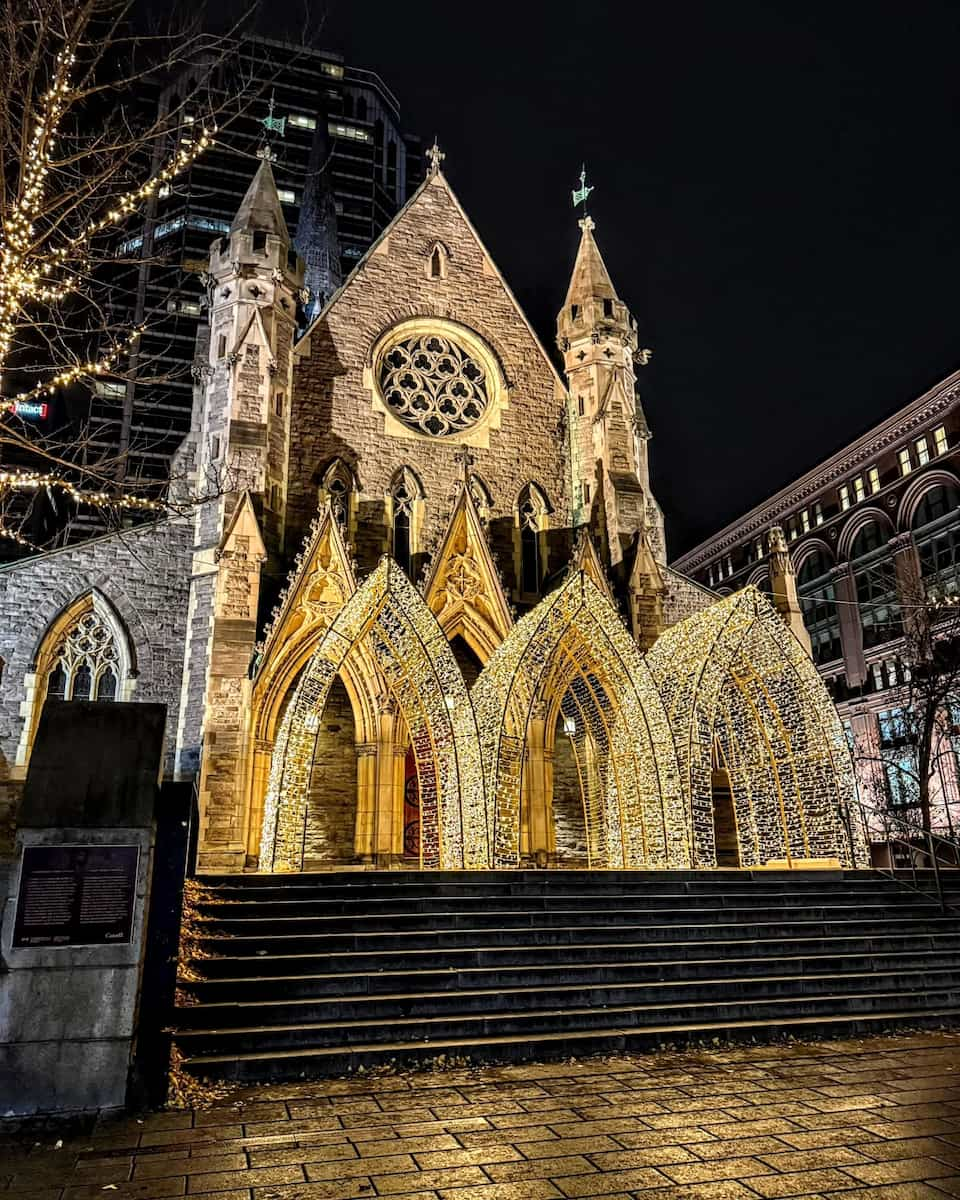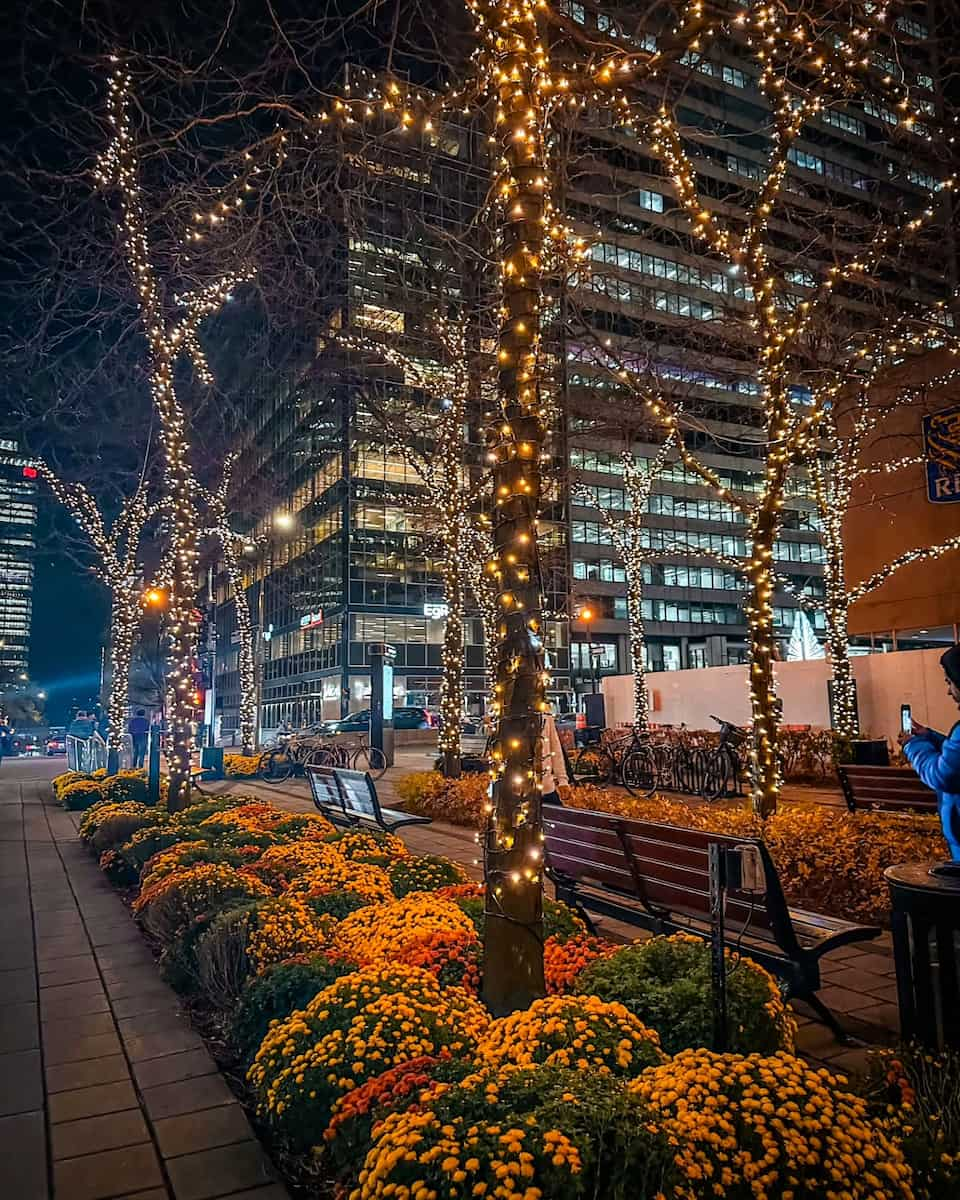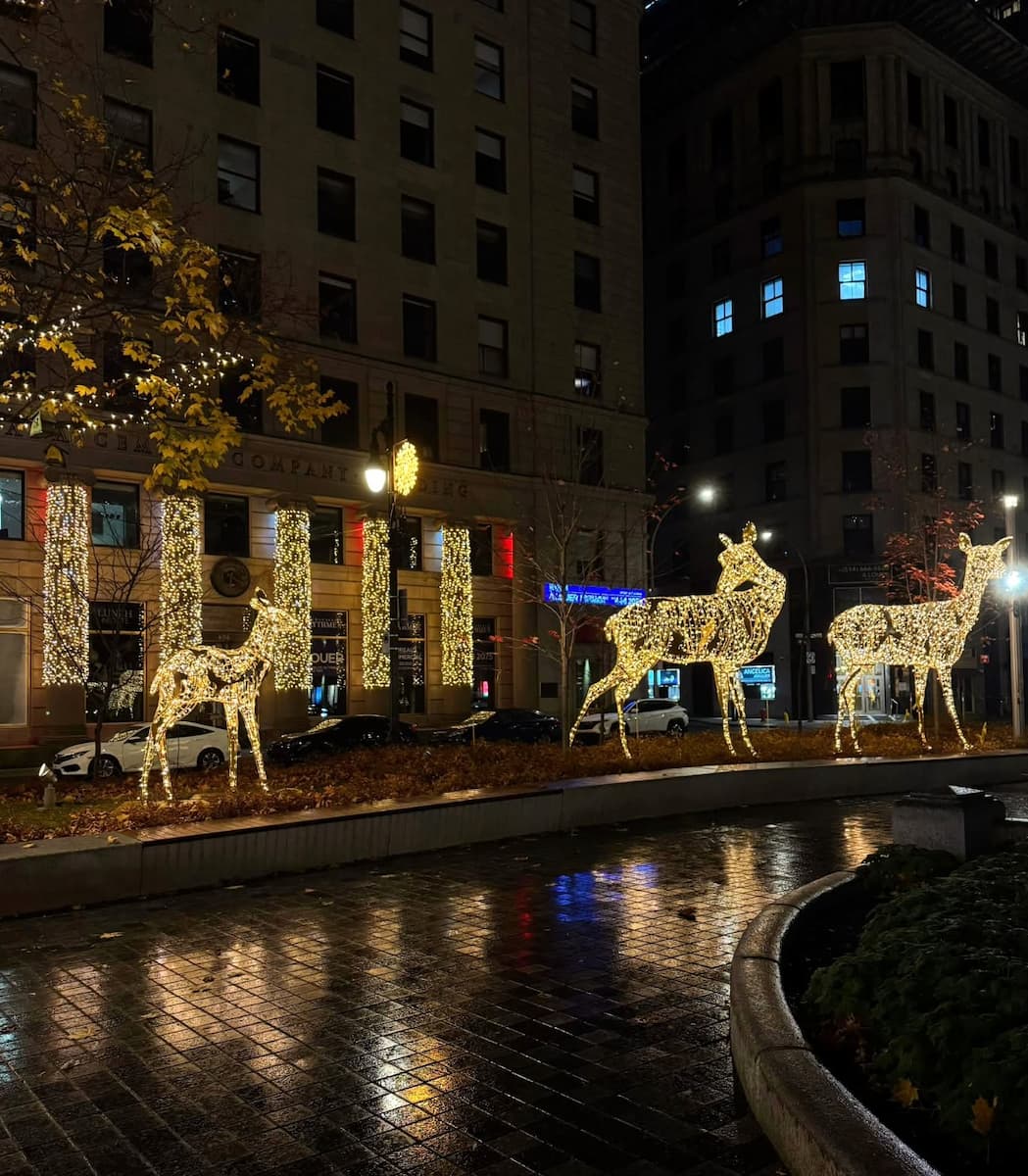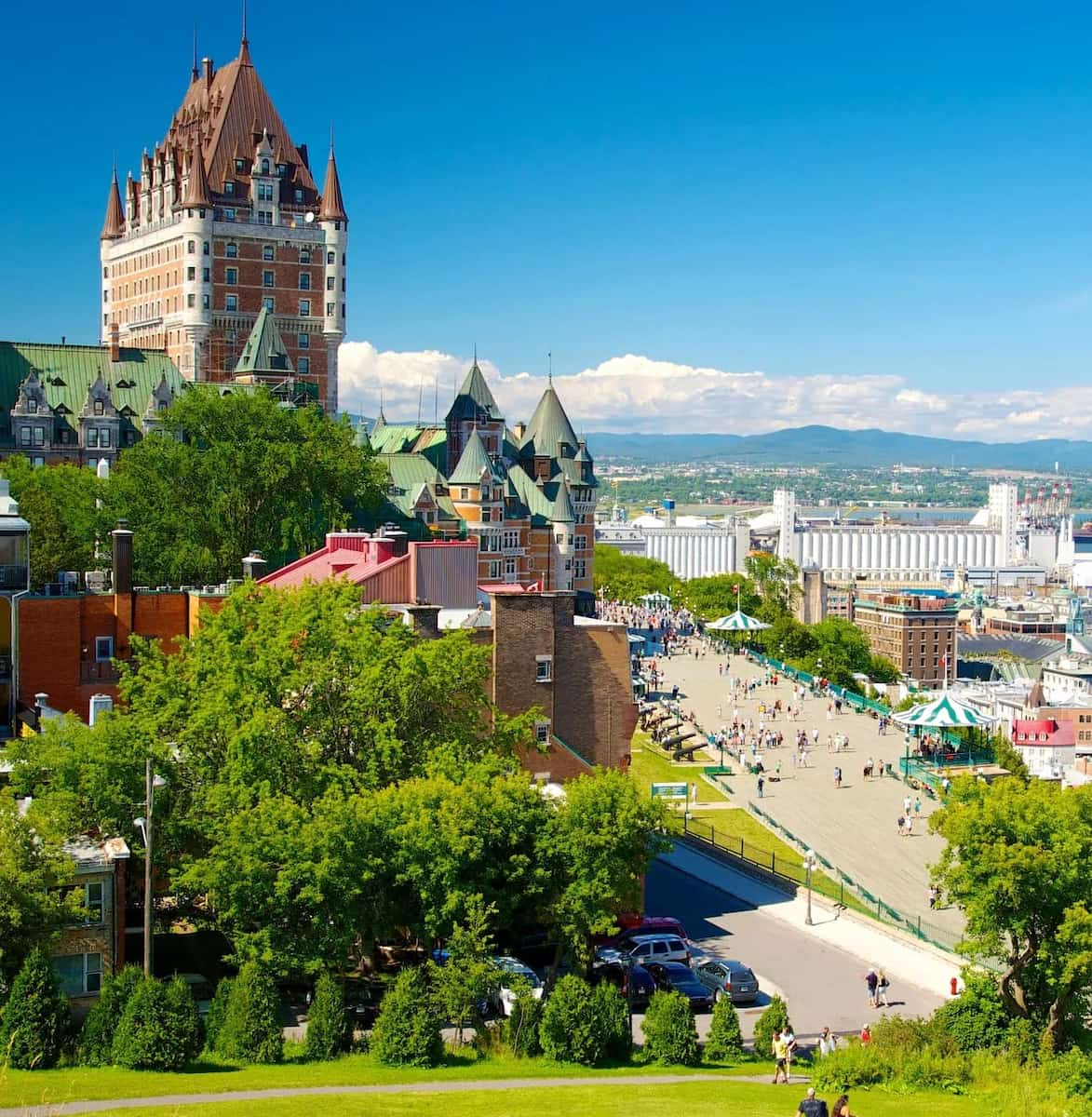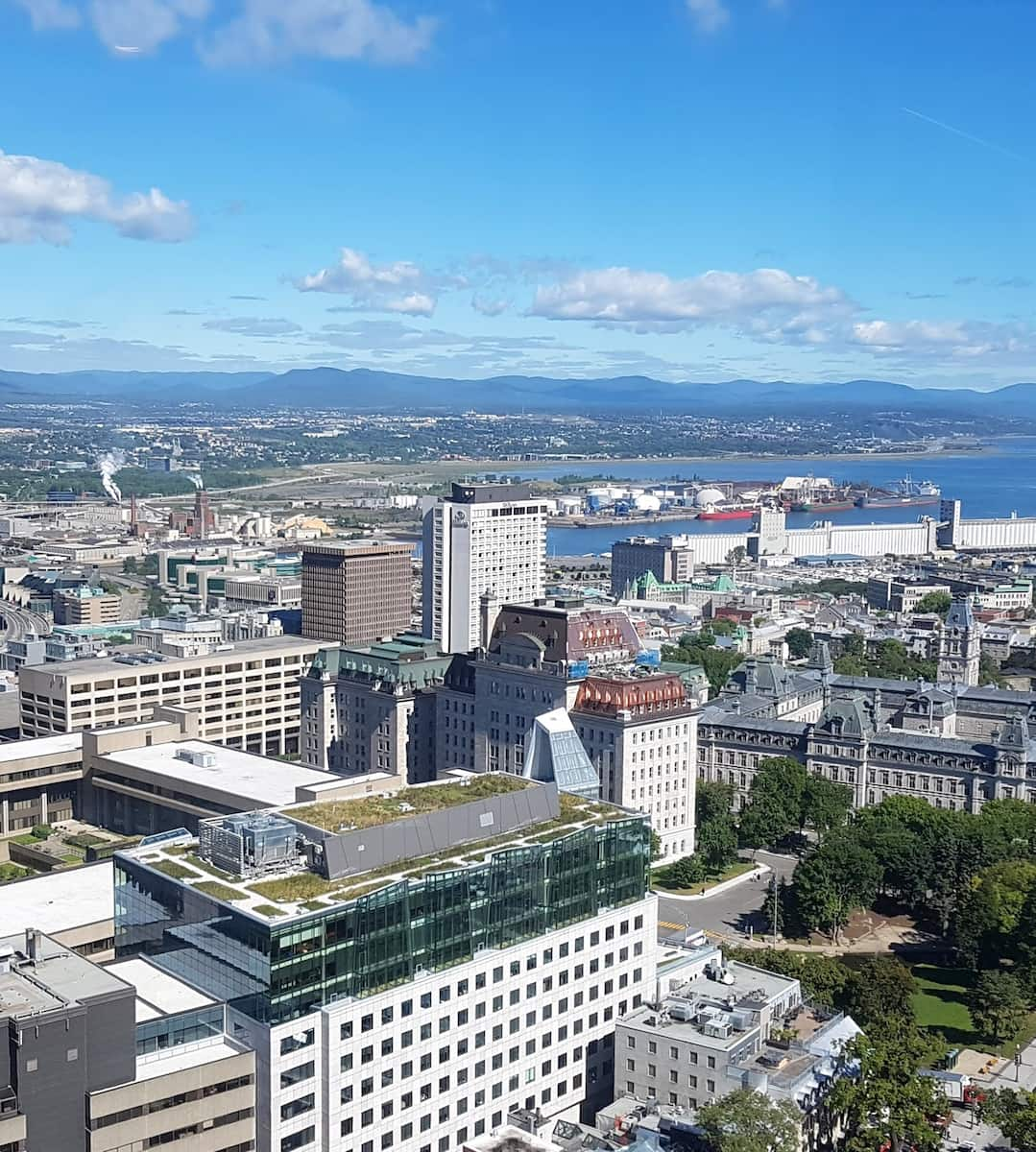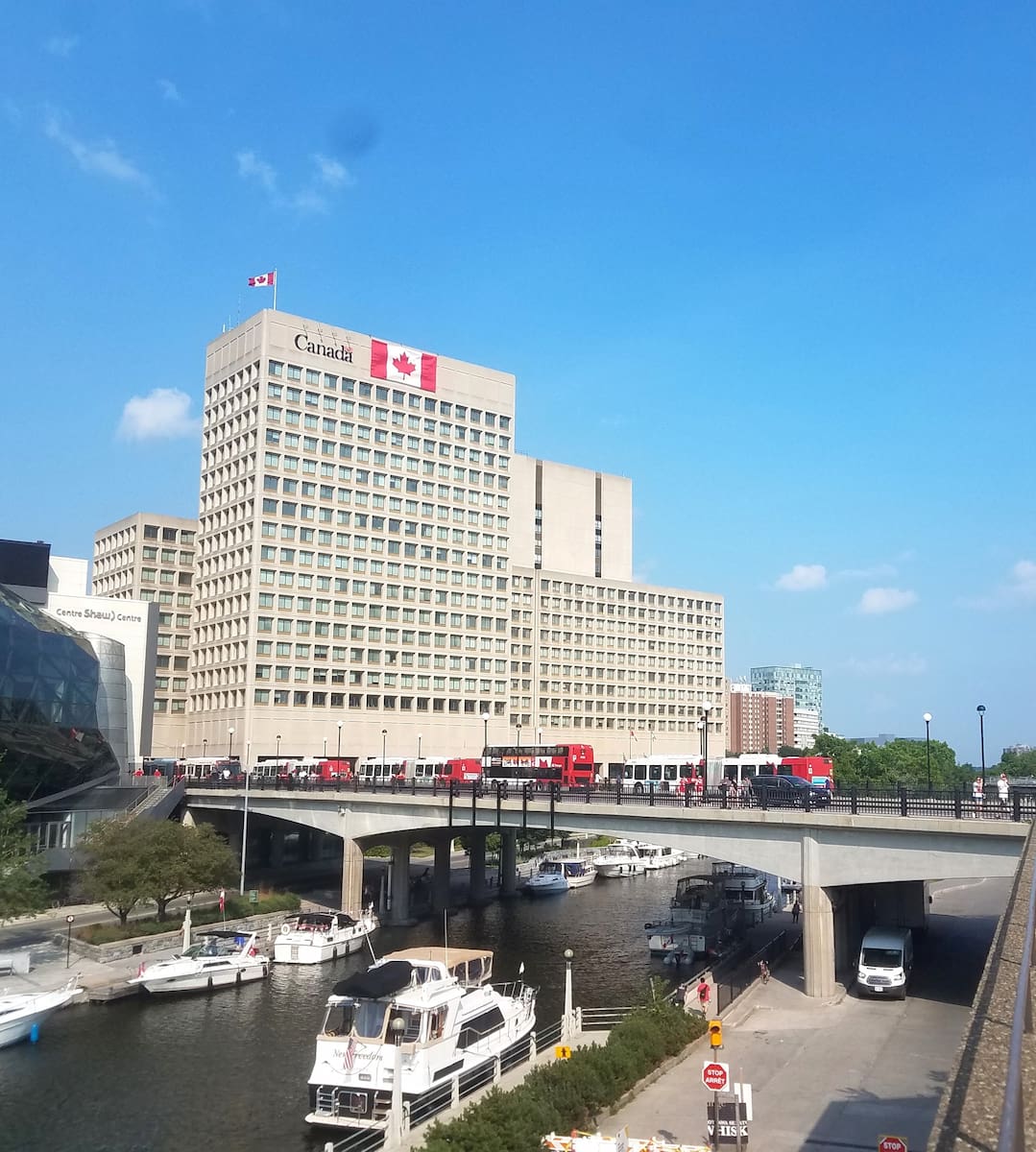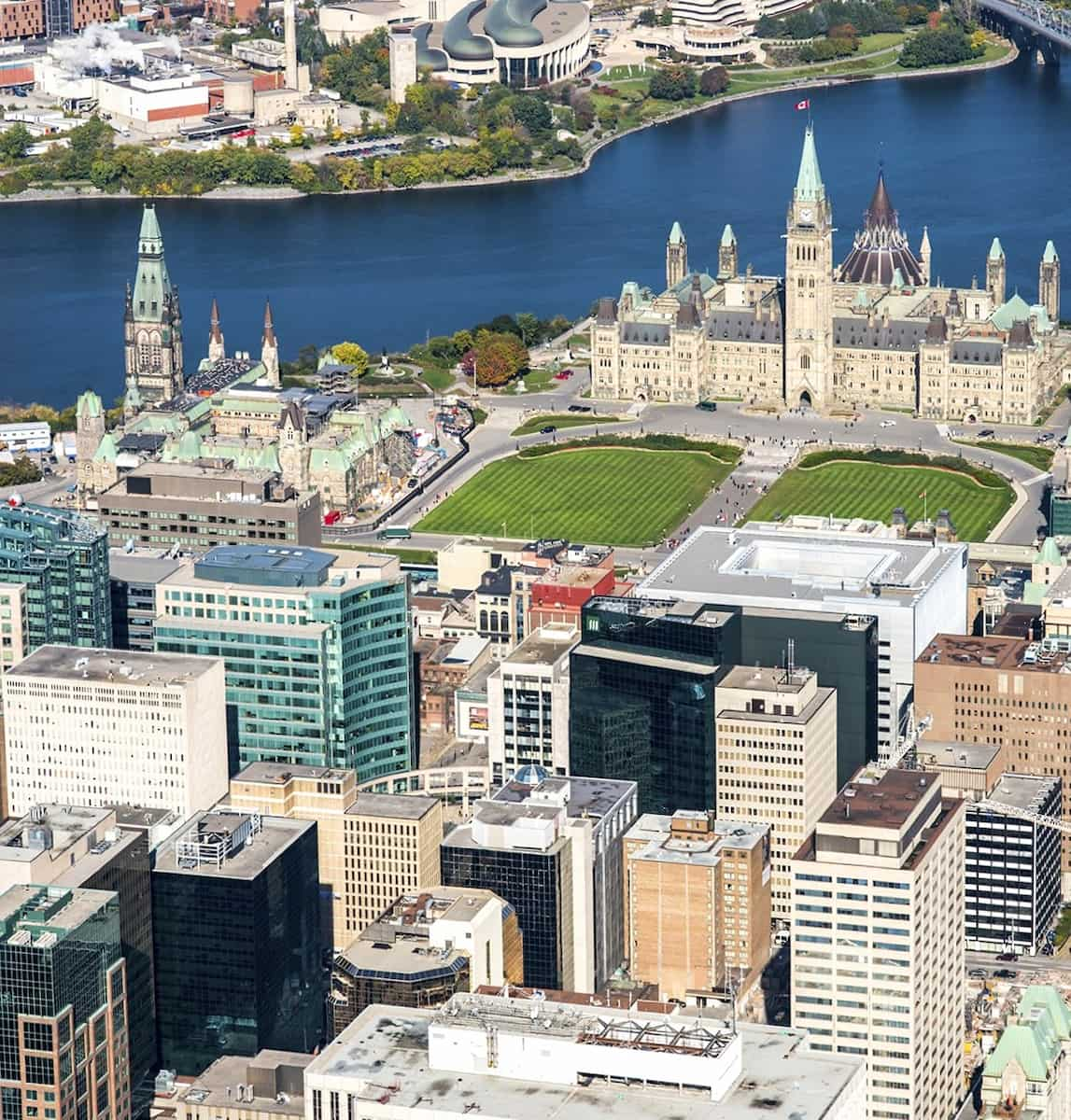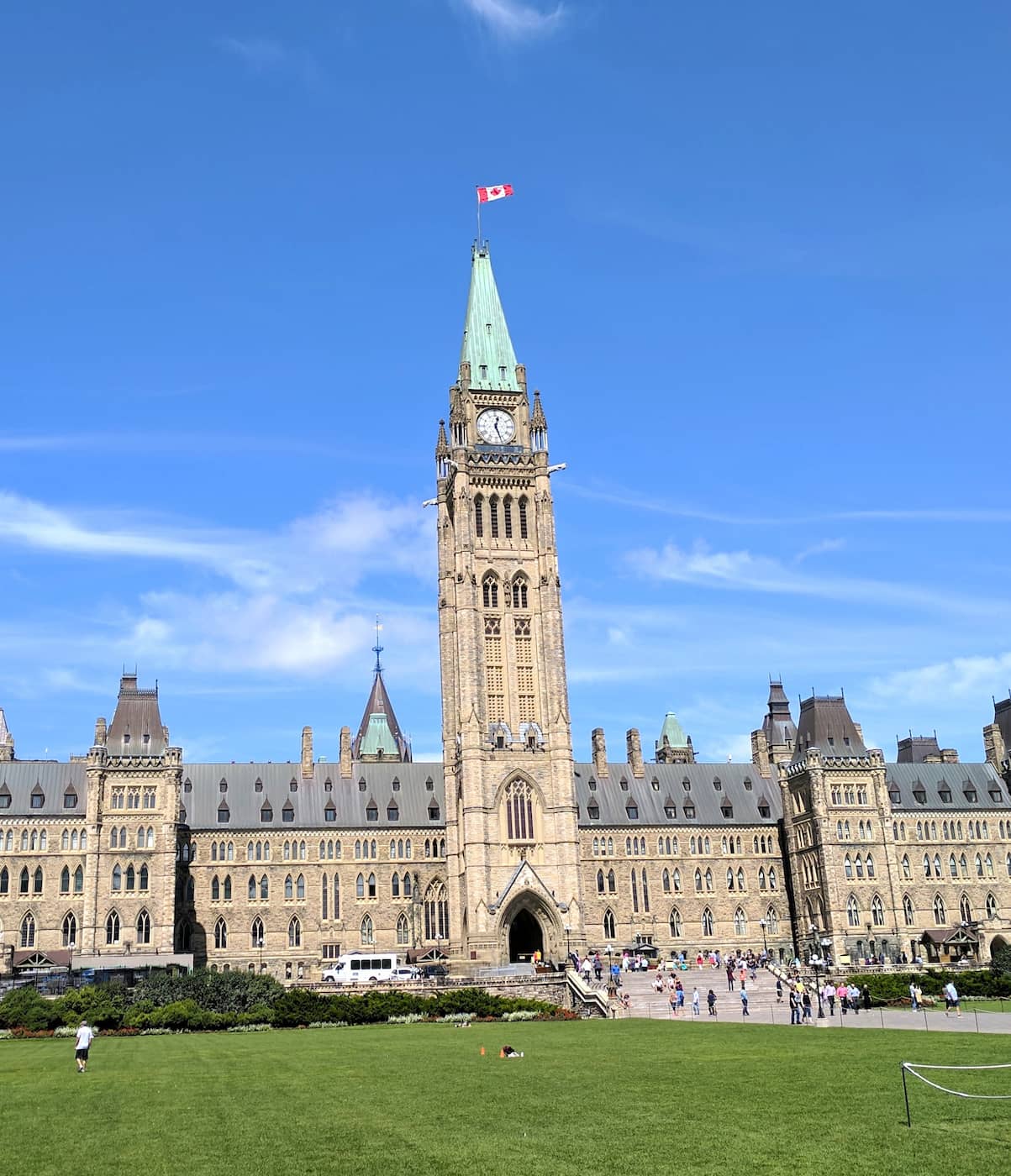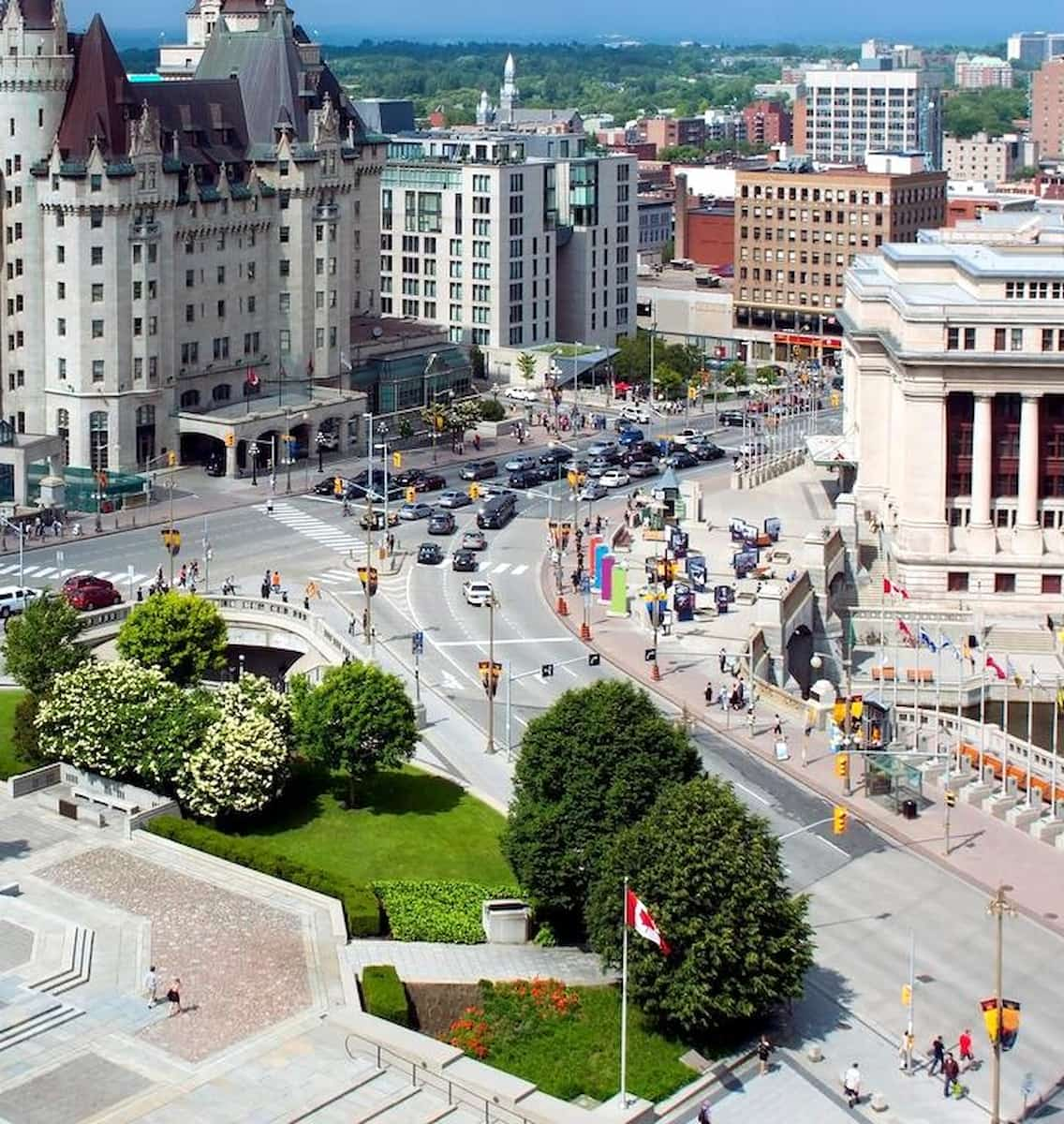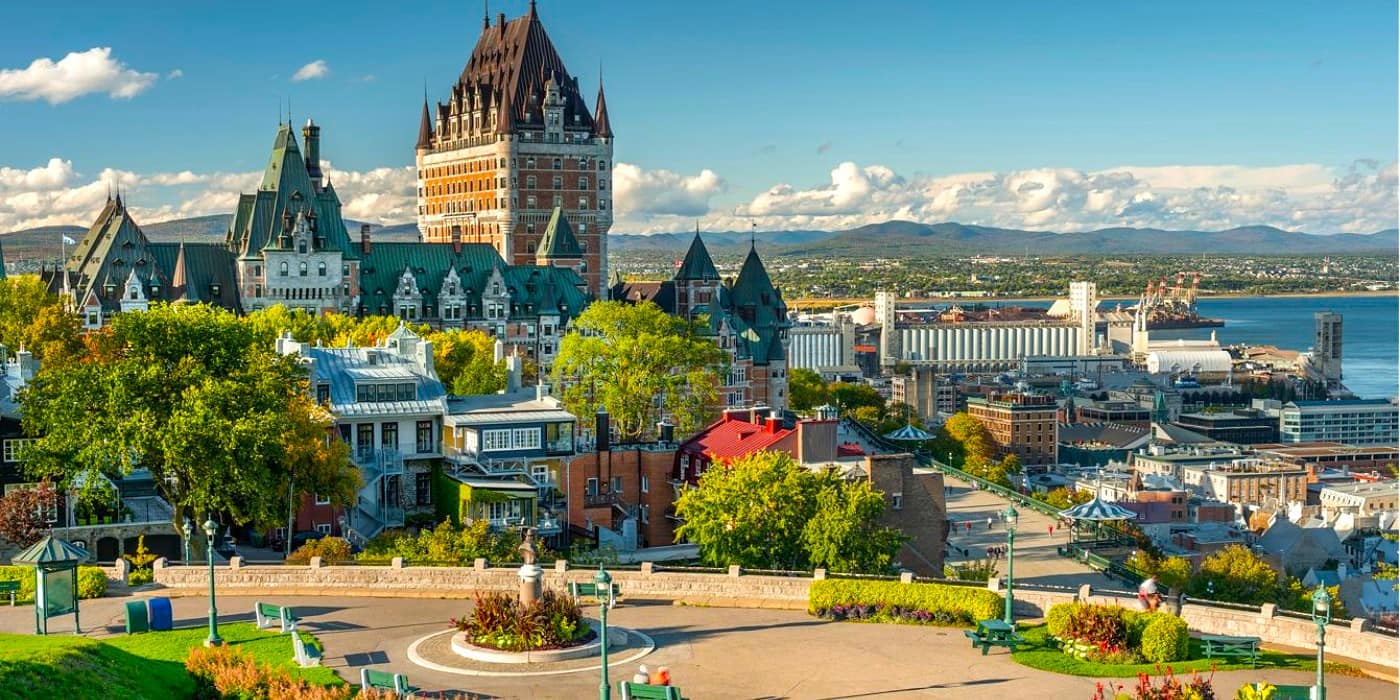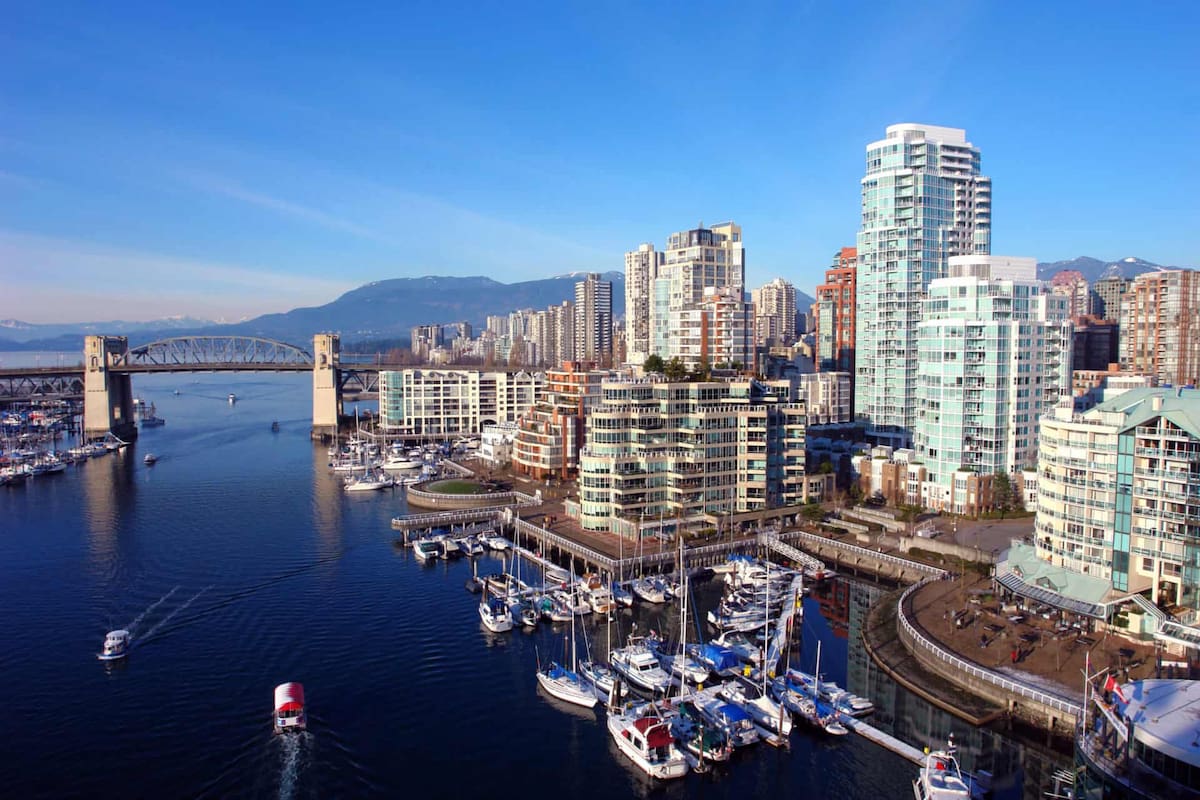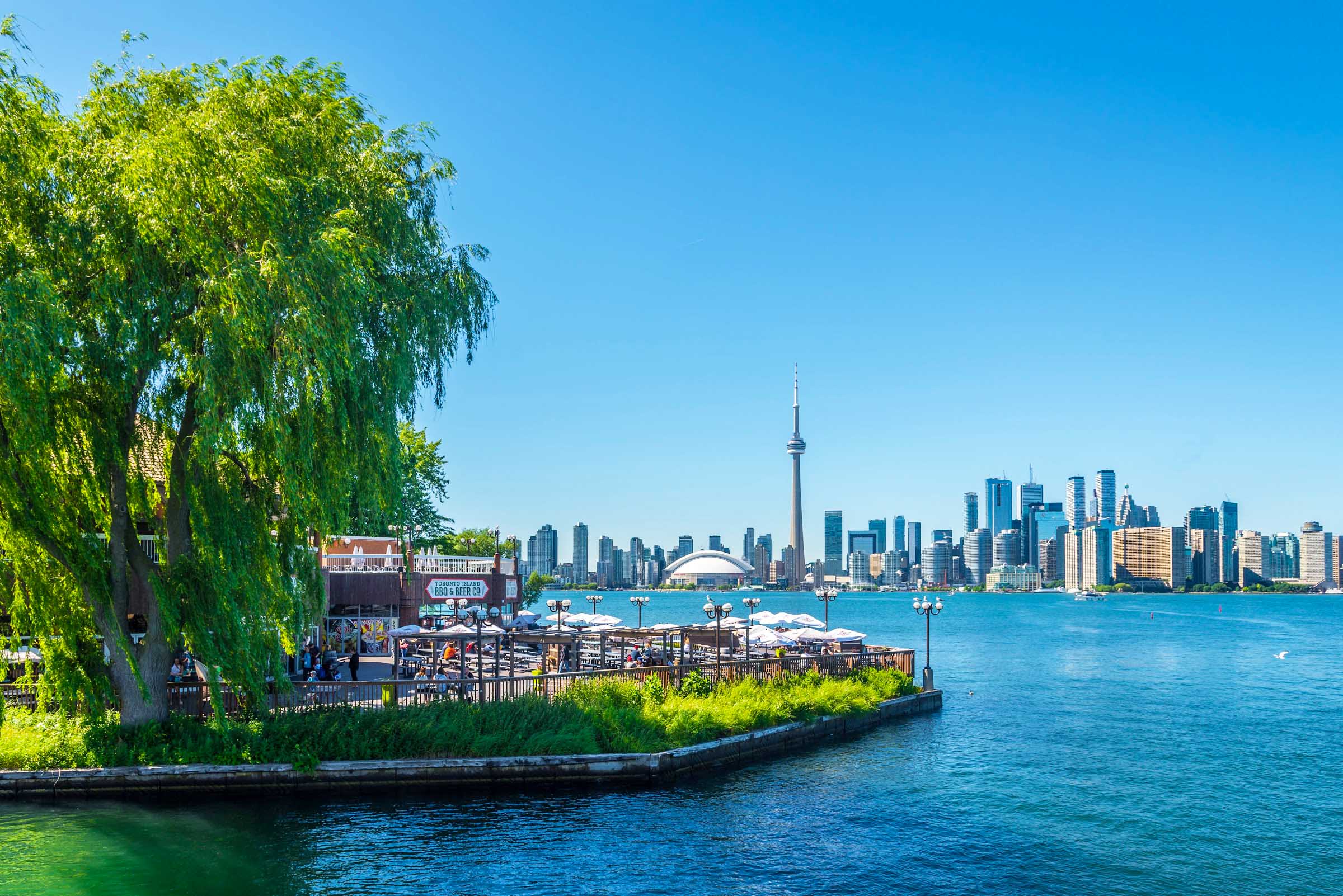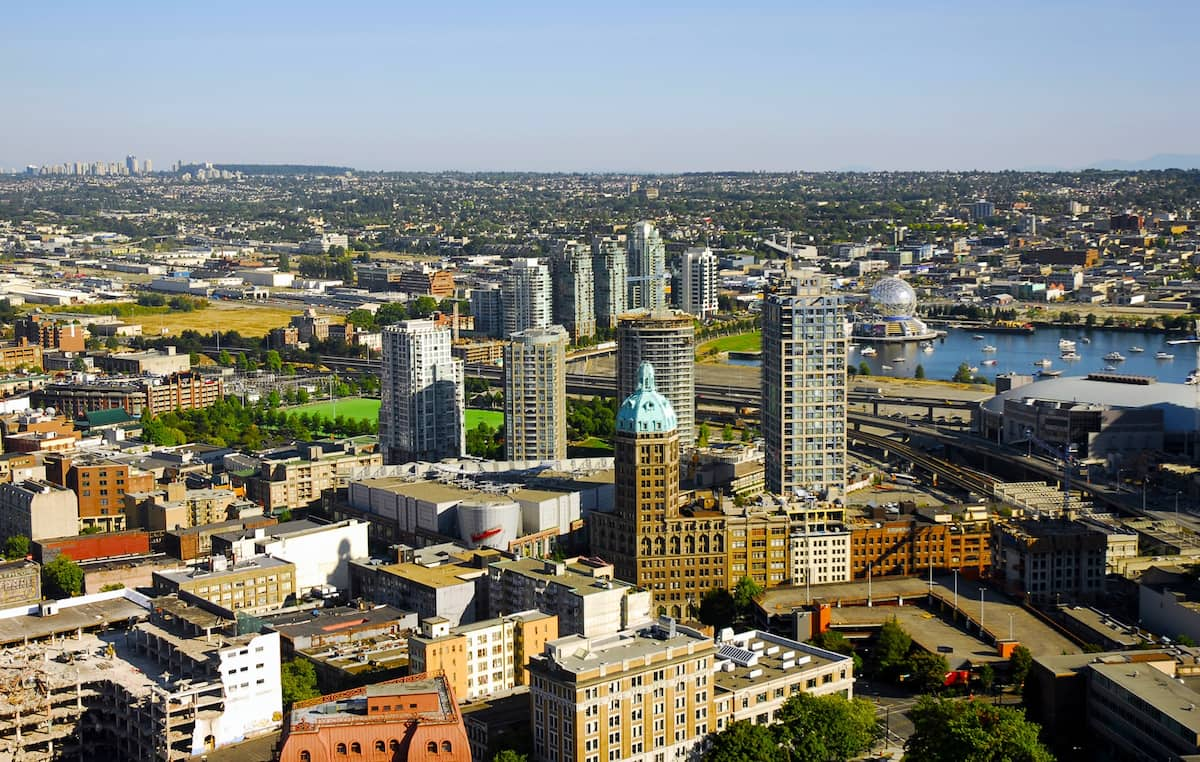Montreal is a city that stole my heart with its perfect mix of European charm and North American energy. From the cobblestone streets of Old Montreal to the vibrant murals along Saint Laurent Boulevard, this Canadian gem offers something for every traveler, whether you’re a foodie, history buff, or adventure seeker.
I’ve explored Montreal in every season and discovered hidden gems that most tourists miss. In this guide, I’ll share my favorite spots, money-saving tips, and the best times to visit each attraction so you can make the most of your Montreal adventure without breaking the bank.
🏠 Where to Stay in Montreal
- 💎 Luxury Hotel: Hôtel Birks Montréal, Montréal
- ✨ 5-Star: Fairmont The Queen Elizabeth, Montréal
- 🏨 4-Star: DoubleTree By Hilton Montreal, Montréal
- 🛏️ 3-Star: Hyatt Place Montreal - Downtown, Montréal
- 💸 Cheap: Travelodge by Wyndham Montreal Centre, Montréal
- 🏢 Apartment: L'Appartement Hôtel, Montréal
- 👨👩👧👦 For Families: Delta Hotels by Marriott Montreal, Montréal
- 🏩 For Couples: Marriott Chateau Champlain, Montréal
💁 Best Guided Tours
- Full-Day Guided City Tour of Montreal from € 167 (⭐4.9/5)
- Montreal Foodie Half-Day Small-Group Walking Tour With Samples from € 85 (⭐4.9/5)
- Quebec City and Montmorency Falls Day Trip from Montreal from € 110 (⭐4.7/5)
- Montreal: City Sightseeing Bus Tour with Live Commentary from € 60 (⭐4.5/5)
Best Things to Do in Montreal
1. Notre-Dame Basilica
Gothic masterpiece. I was completely blown away when I first stepped inside Montreal’s Notre-Dame Basilica. The deep blue vaulted ceiling decorated with golden stars creates a heavenly atmosphere that’s unlike any church I’ve visited in North America. The interior is a feast for the eyes with its rich blues, reds, purples, silver, and gold details that make it one of the most dramatic church interiors in the world.
Self-guided exploration. Walking through the basilica at my own pace was perfect for taking in all 24 points of interest. The interpretive panels in English and French helped me understand the significance of the unique stained-glass windows, which surprisingly don’t show biblical scenes but instead depict Montreal’s religious history. Don’t miss the impressive 7,000-pipe Casavant Frères organ that fills this sacred space with incredible sound.
AURA experience. For something truly special, I recommend the AURA light and sound show that transforms the basilica after dark. This 40-minute multi-sensory experience uses cutting-edge video mapping technology to illuminate the church from floor to ceiling. It’s a modern way to appreciate this historic gem and has already captivated over a million visitors with its breathtaking visuals.
Practical details. The basilica is located at 110 Notre-Dame Street West in Old Montreal, facing Place d’Armes square. It’s easily accessible and wheelchair-friendly.
| Visitor Type | Sightseeing Visit | AURA Experience |
|---|---|---|
| Adult (18+) | CA$16 (≈€11) | CA$40 (≈€27) |
| Senior (65+) | CA$15 (≈€10) | CA$35 (≈€24) |
| Student | CA$14 (≈€9.50) | CA$31 (≈€21) |
| Youth (6-16) | CA$12 (≈€8) | CA$25 (≈€17) |
| Family (2 adults + 2 children) | CA$50 (≈€34) | CA$120 (≈€81) |
⭐ Best Activities
- Montreal City Sightseeing Tour with Live Commentary – Experience the best of Montreal on this comprehensive 3.5-hour tour covering iconic sites like Notre-Dame Basilica, Olympic Stadium and more.
2. Mount Royal Park
Urban wilderness. Mount Royal Park sits at the heart of Montreal like a green oasis rising 233 meters above the city. I spent an entire afternoon exploring this 200-hectare park designed by Frederick Law Olmsted, the same landscape architect who created New York’s Central Park. The winding paths through maple forests made me forget I was in Canada’s second-largest city.
Lookout points. The Kondiaronk Belvedere at the summit offers what I consider the best panoramic view of Montreal’s skyline. From this vantage point, I could see the River, the Olympic Stadium, and on clear days, even the Adirondack Mountains in the US.
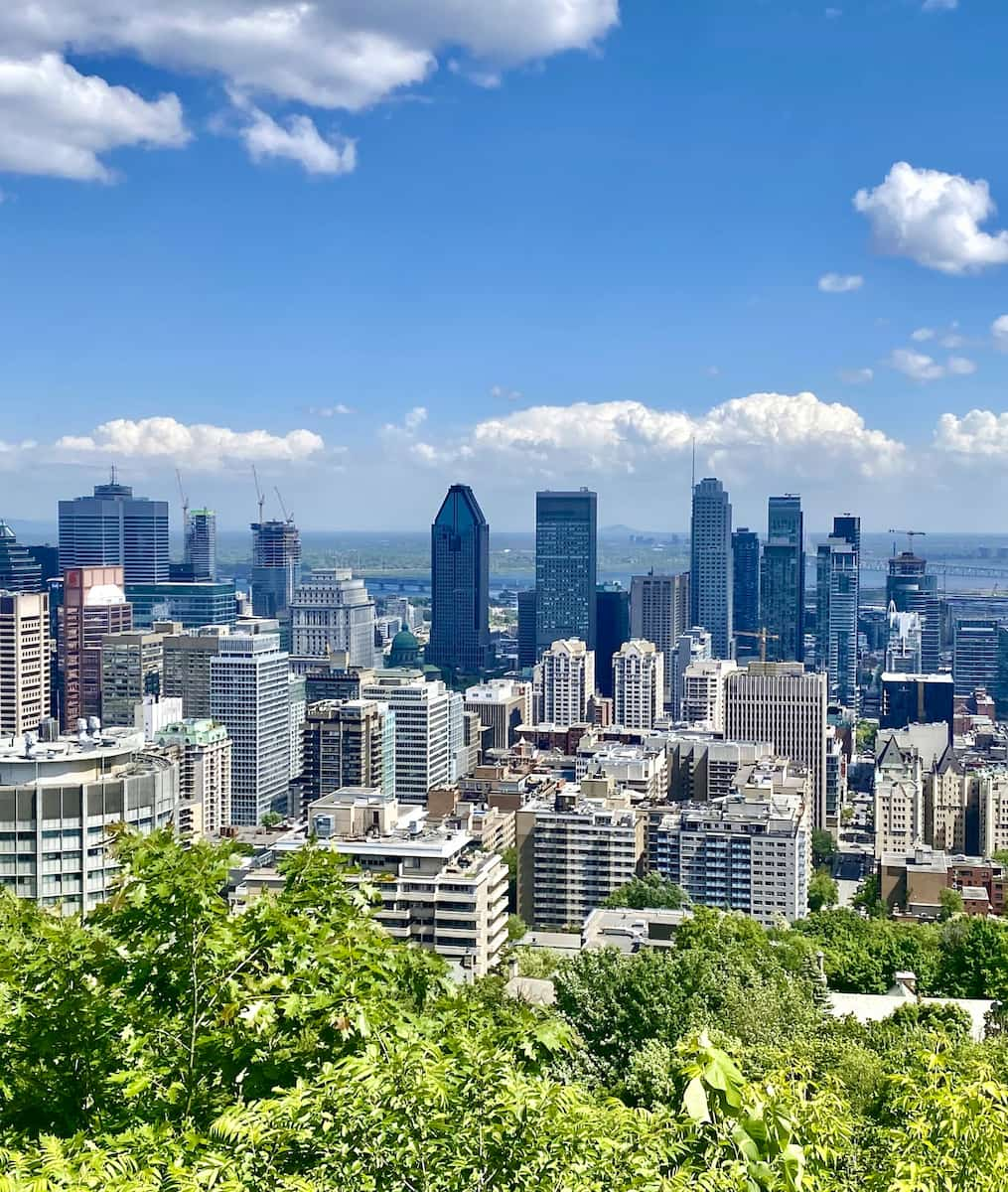


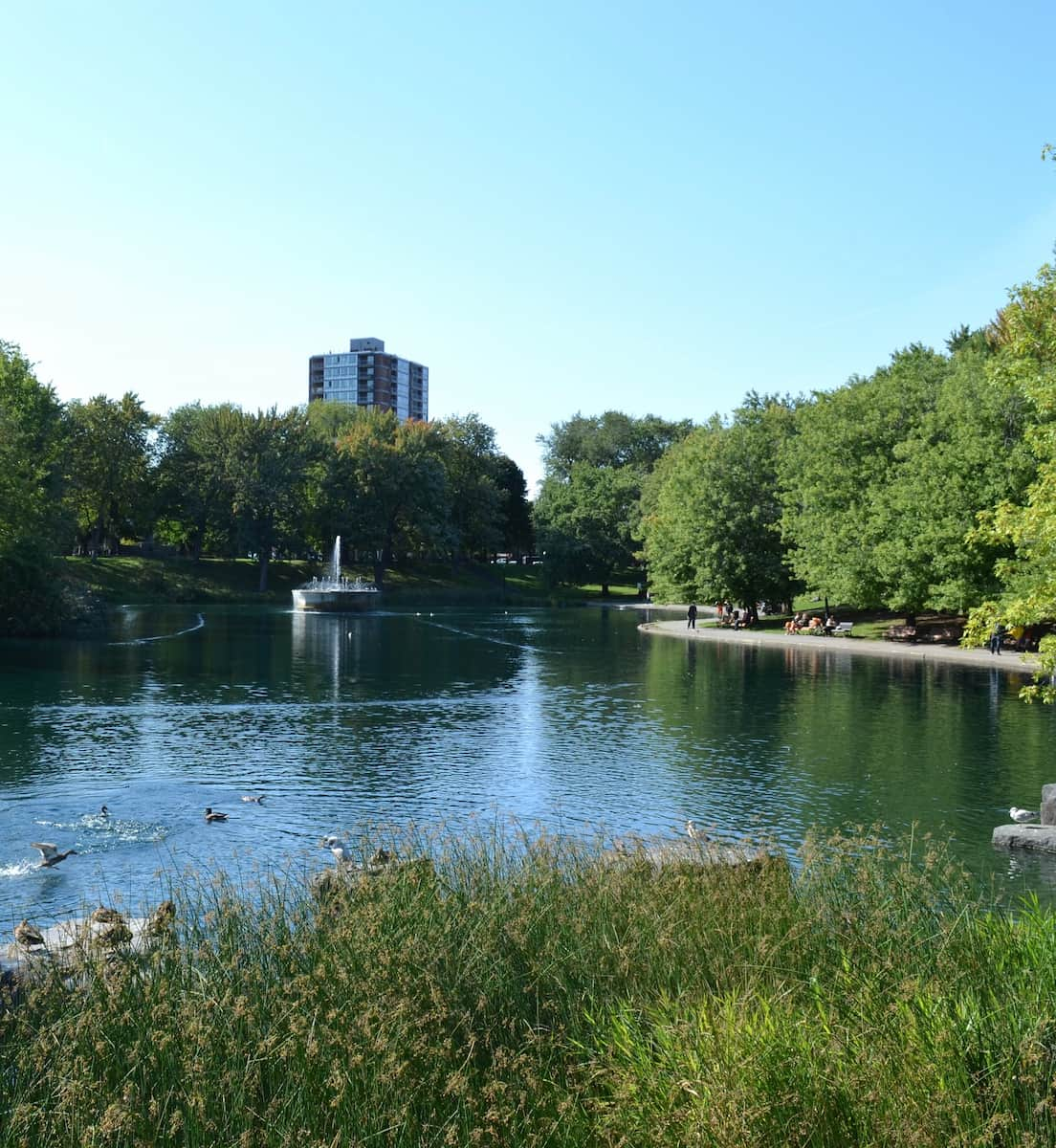
My favorite Mount Royal activities:
- Hiking the various trails (easy to moderate difficulty)
- Picnicking on the vast green spaces
- Watching street performers near the George-Étienne Cartier Monument
- Photographing the city from multiple viewpoints
Seasonal magic. In winter, Mount Royal transforms into a snowy playground where I tried cross-country skiing for the first time. The park rents equipment at the Beaver Lake Pavilion for CA$20 (≈€13.50) for two hours. Summer brings tam-tam drummers who gather every Sunday near the Sir George-Étienne Cartier Monument, creating an infectious rhythm that gets everyone dancing.
Local tip. The 11/711 bus from Mont-Royal Metro Station will take you directly to the park, but I preferred the 30-minute walk up from Avenue du Parc for the gradual reveal of increasingly spectacular views.
⭐ Best Activities
- Montreal 2-Day Hop-On Hop-Off Bus Tour – Explore Montreal at your own pace with this flexible 2-day pass on London-style double-decker buses that stop at 10 key locations throughout the city, allowing you to visit attractions like Old Montreal, Chinatown, and Mount Royal Park.
3. Jean-Talon Market
Foodie paradise. Jean-Talon Market in Little Italy is Montreal’s largest outdoor market and a feast for all senses. I wandered through colorful stalls filled with fresh Quebec produce, artisanal cheeses, and local specialties. The vendors are passionate about their products and often offer generous samples – I tasted everything from wild blueberries to maple butter before making my purchases.
Cultural crossroads. What makes this market special is how it reflects Montreal’s multicultural identity. I found Italian delis next to Middle Eastern spice merchants, Quebec cheese makers beside Vietnamese food stalls. The market operates year-round, with indoor sections during winter months.
Seasonal highlights at Jean-Talon:
- Spring: First maple products and asparagus
- Summer: Berries and stone fruits
- Fall: Apple varieties and squash
- Winter: Root vegetables and holiday specialties
Culinary workshops. I participated in a cheese-tasting workshop at the market’s education center for CA$45 (≈€30), where I learned about Quebec’s renowned cheese-making traditions. The market also offers cooking classes using seasonal ingredients purchased directly from the vendors.
Shopping strategy. Arrive before 10am to avoid crowds, especially on weekends. Prices tend to be lower at stalls deeper inside the market rather than those facing the main entrances.
⭐ Best Activities
- Full-Day Montreal In-Depth City Tour – Immerse yourself in Montreal’s rich history and culture with this comprehensive full-day exploration that takes you beyond the typical tourist spots to discover hidden gems and local favorites across multiple neighborhoods.
4. Montreal Museum of Fine Arts
Artistic treasure. The Montreal Museum of Fine Arts surprised me with its impressive collection spanning 5,000 years of history across five connected pavilions. I spent hours admiring everything from ancient artifacts to contemporary installations. The museum’s Inuit art collection is particularly outstanding – the largest of its kind in Quebec.
Interactive experiences. What sets this museum apart is its commitment to accessibility and engagement. I participated in a “Art Hive” workshop where visitors create their own art inspired by the collections. These drop-in sessions cost nothing beyond the museum admission and provided a deeper connection to the artwork.
| Pavilion | Highlights | Must-See Works |
|---|---|---|
| Michal and Renata Hornstein | International Art | Rembrandt’s “Portrait of a Young Woman” |
| Claire and Marc Bourgie | Quebec and Canadian Art | James Wilson Morrice landscapes |
| Liliane and David M. Stewart | Decorative Arts and Design | Mid-century furniture collection |
| Jean-Noël Desmarais | Contemporary Art | Dale Chihuly glass sculptures |
| Stéphan Crétier and Stéphany Maillery | Arts of One World | Ancient Mediterranean artifacts |
Unexpected gems. The museum’s concert hall inside a restored church (Bourgie Hall) hosts classical music performances. I attended a lunch-hour concert for CA$17.50 (≈€12) that perfectly complemented my art viewing experience.
Budget hack. While regular admission is CA$24 (≈€16), I discovered that Wednesday evenings from 5pm to 9pm offer half-price tickets. The museum is located at 1380 Sherbrooke Street West, easily accessible from Guy-Concordia Metro station.
⭐ Best Activities
- Montreal Private Tour with a Local Guide – Experience Montreal through the eyes of a local on this customizable private tour tailored to your interests, whether you want to explore historic sites, sample local cuisine, or discover off-the-beaten-path neighborhoods.
5. St. Joseph’s Oratory
Spiritual landmark. St. Joseph’s Oratory dominates Montreal’s skyline with its massive Renaissance-style dome that reaches 97 meters high. I climbed the famous 283 wooden steps that pilgrims traditionally ascend on their knees (though I used the more conventional walking method). The basilica’s interior is surprisingly modern compared to its traditional exterior.
Miracle stories. This shrine was built by Brother André Bessette, who was canonized in 2010. I was moved by the Wall of Crutches in the votive chapel, left behind by visitors who claimed to be healed through Brother André’s intercession. His preserved heart is displayed in a special reliquary, which some might find unusual but speaks to his significance in Quebec’s religious history.
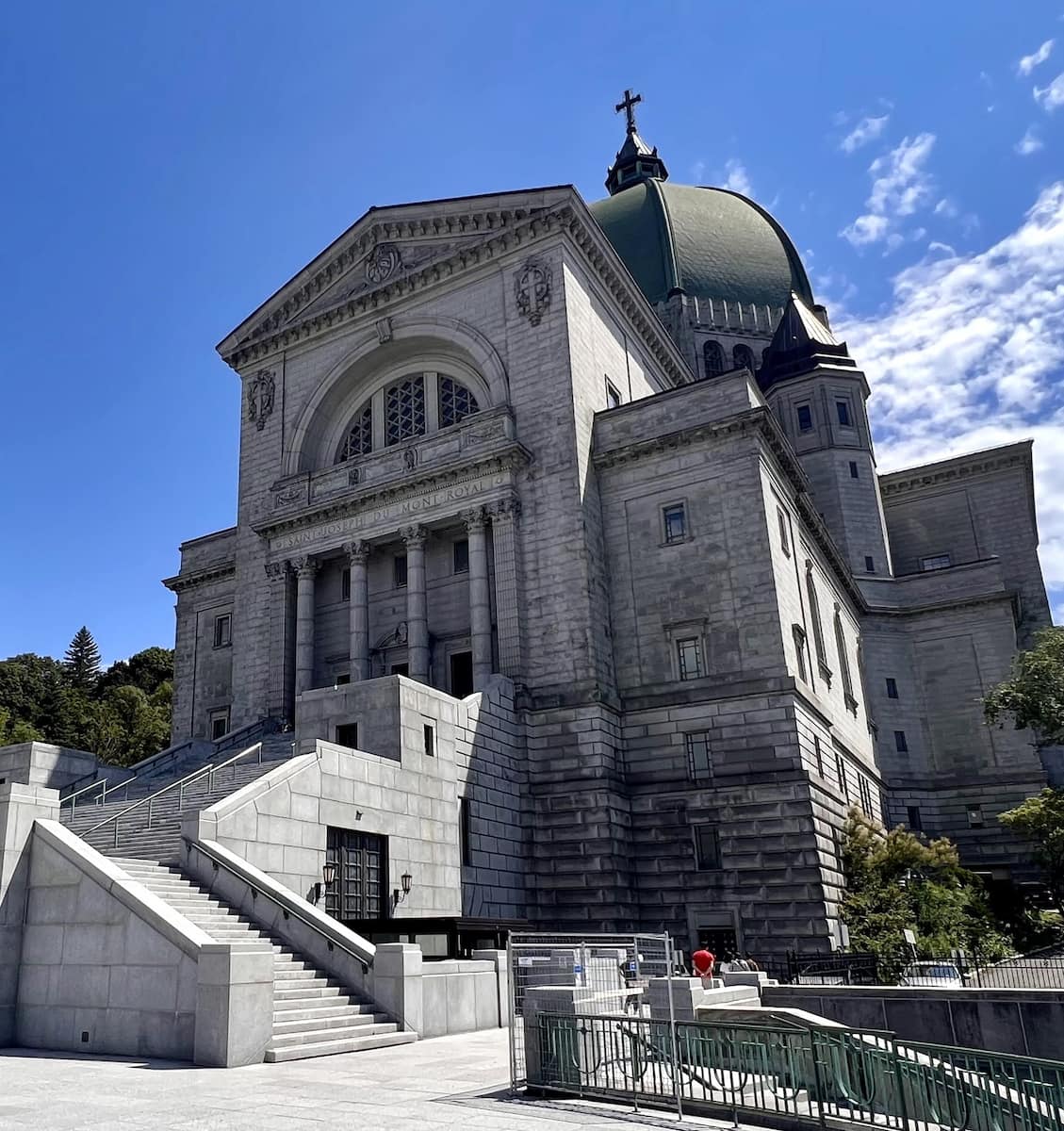

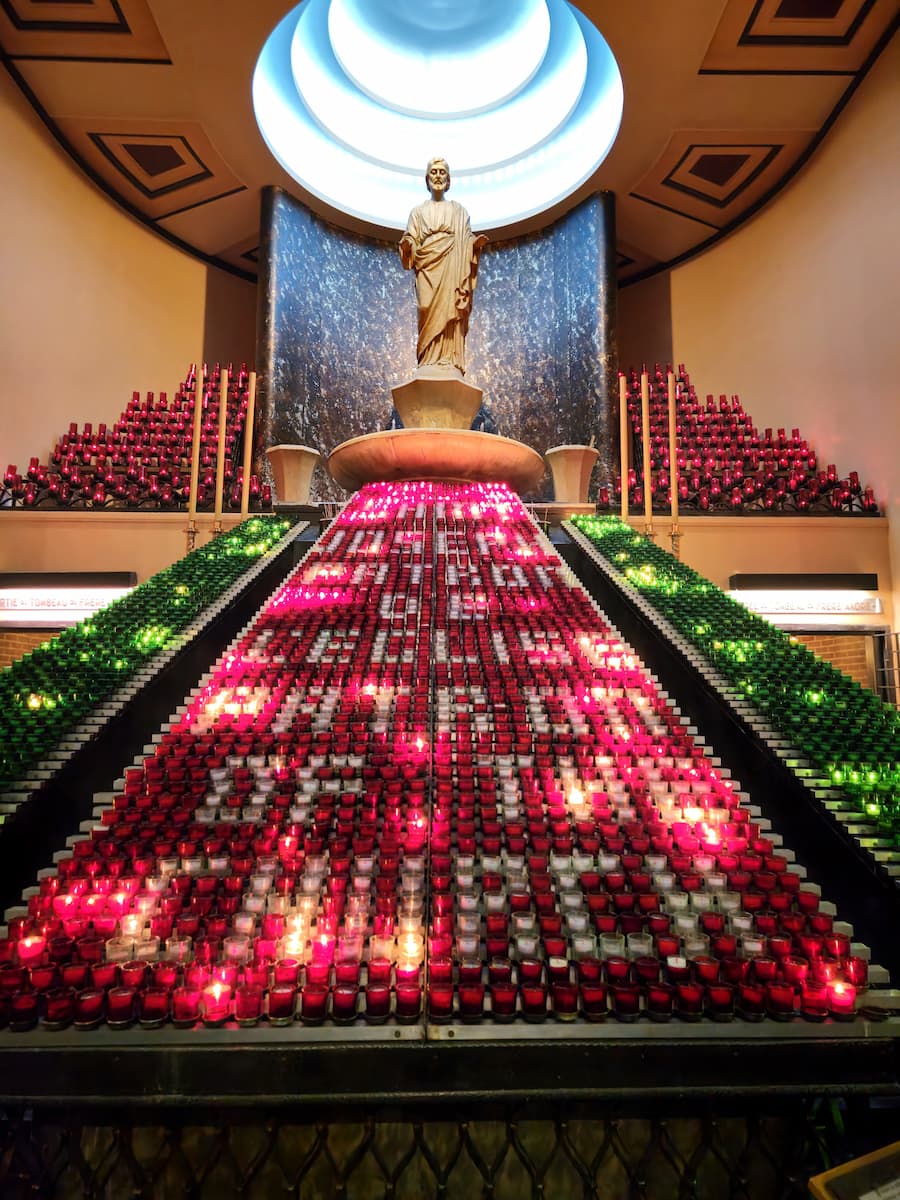
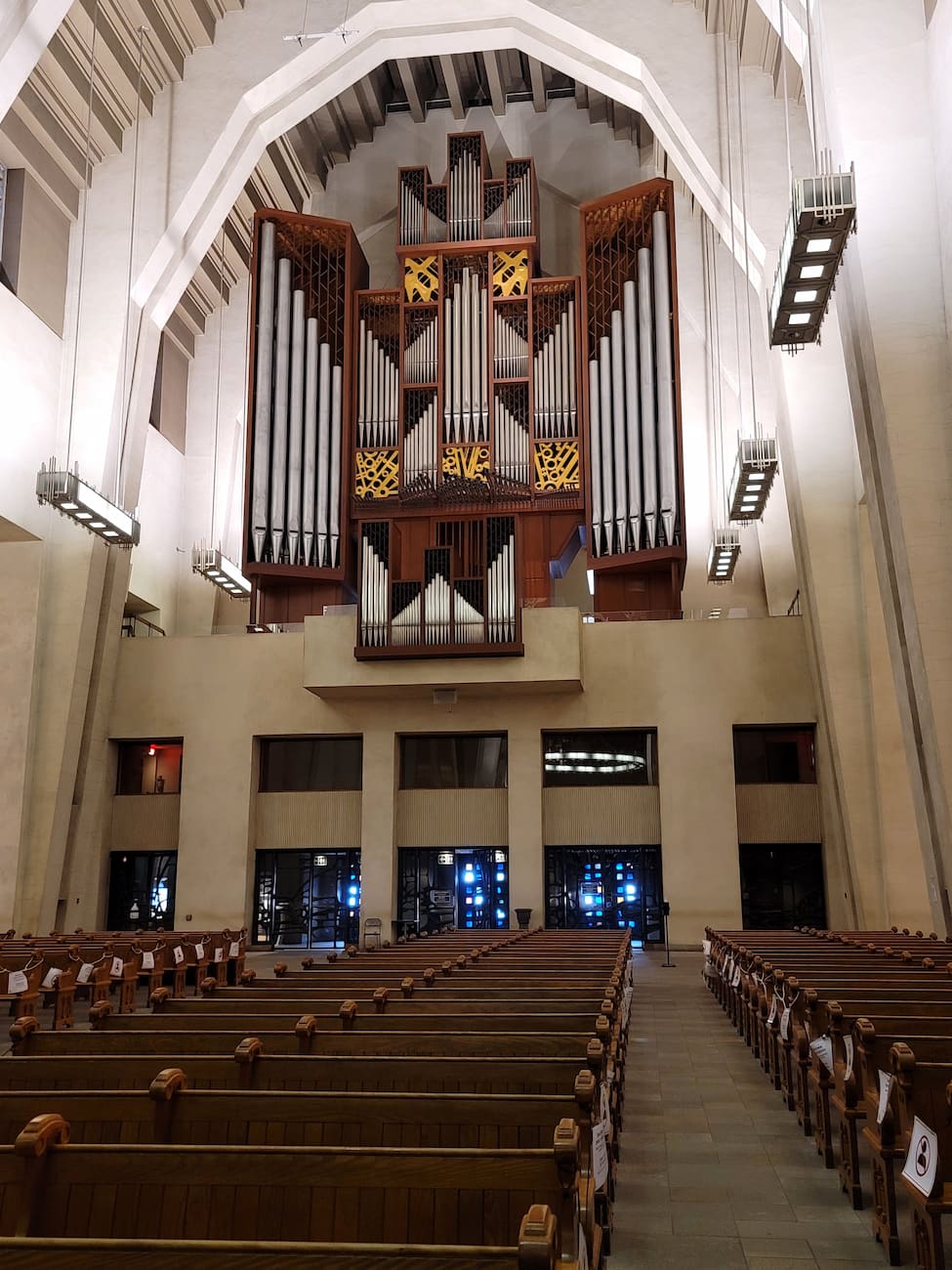
What to see at the Oratory:
- The Votive Chapel with thousands of prayer candles
- Brother André’s original small chapel
- The massive pipe organ in the Upper Basilica
- The peaceful gardens and Stations of the Cross
- The museum dedicated to Brother André’s life
Panoramic views. After exploring the interior, I discovered that the Oratory offers some of the best western views of Montreal. The observation area behind the basilica provides a different perspective than Mount Royal, with fewer tourists competing for photo spots.
Visitor information. Located at 3800 Queen Mary Road, the Oratory is open daily from 6am to 9pm. Entry is free, but a suggested donation of CA$5 (≈€3.40) helps maintain this important religious site. The 65 bus from Guy-Concordia Metro station stops directly in front.
⭐ Best Activities
- Montreal in a Nutshell City Tour – Get a perfect introduction to Montreal with this efficient tour that covers the city’s essential highlights in just a few hours, ideal for first-time visitors wanting to orient themselves to the city’s layout and major attractions.
6. Montreal Botanical Garden
Plant wonderland. Montreal’s Botanical Garden spans an incredible 75 hectares with 10 exhibition greenhouses and over 20 thematic gardens. I was particularly enchanted by the Japanese Garden’s serene landscape of streams, ponds, and pavilions that transported me straight to Kyoto. The bonsai collection features specimens over 100 years old that left me in awe of this patient art form.
Cultural gardens. What makes this botanical garden unique is its focus on different cultural traditions. The Chinese Garden is the largest of its kind outside China, complete with traditional architecture and a Dream Lake. The First Nations Garden taught me about indigenous plants and their traditional uses by Canada’s native peoples.
Seasonal highlights throughout the year:
- Spring: Flowering cherries and magnolias (late April-May)
- Summer: Rose Garden in full bloom (June-July)
- Fall: Gardens of Light lantern festival (September-October)
- Winter: Butterfly Go Free exhibition in greenhouses (February-April)
Insect connection. Adjacent to the garden is the fascinating Insectarium, which reopened after extensive renovations. For an additional CA$8 (≈€5.40), I experienced the immersive “We Are the Insects” exhibit where I could see the world from an insect’s perspective through innovative multimedia installations.
Practical matters. Located at 4101 Sherbrooke Street East, the garden is easily accessible via Pie-IX Metro station. Admission costs CA$22 (≈€15) for adults, with combination tickets available for all Space for Life attractions (Biodome, Insectarium, Planetarium).
⭐ Best Activities
- Private Photo Session with a Local Photographer in Montreal – Capture stunning vacation memories with a professional photographer who will guide you to Montreal’s most picturesque locations for a personalized photo shoot, providing you with beautiful, high-quality images to remember your trip.
7. Underground City (RÉSO)
Subterranean network. Montreal’s Underground City isn’t actually a single underground space but an impressive 32-kilometer network of tunnels connecting shopping centers, metro stations, hotels, and office buildings. I discovered this climate-controlled labyrinth is a lifesaver during Montreal’s freezing winters and humid summers, allowing me to explore large portions of downtown without ever stepping outside.
Shopping haven. The RÉSO (short for réseau, French for “network”) contains over 1,600 shops ranging from luxury boutiques to local designers. I found the Cours Mont-Royal particularly impressive with its elegant architecture and high-end stores, while the Eaton Centre offered more mainstream shopping options.
Underground City highlights by section:
- Place Ville Marie – Upscale shopping and gourmet food hall
- Place Bonaventure – Business center with convenient services
- Complex Desjardins – Indoor plaza with regular events and performances
- Place des Arts – Cultural hub connecting to performance venues
- McGill Metro area – Student-friendly shops and affordable dining
Art everywhere. What surprised me most about the Underground City was the amount of public art. I counted over 100 artworks during my underground explorations, from massive murals to interactive installations. The Palais des congrès section features kaleidoscopic colored glass that creates rainbow patterns on the floor on sunny days.
Navigation tips. I initially found the network confusing but discovered that yellow signage marks official RÉSO paths. The free Underground City app helped me navigate between points of interest. Most sections are open from 6am to 9pm on weekdays with reduced hours on weekends.
⭐ Best Activities
- Montreal 3-Hour Private Car Tour with Expert Local Guide – Enjoy the comfort of a private vehicle while exploring Montreal’s diverse neighborhoods with a knowledgeable local guide who will share fascinating insights about the city’s history, architecture, and culture.
8. Mile End & Plateau Neighborhoods
Hipster haven. Mile End and the adjacent Plateau Mont-Royal neighborhoods form Montreal’s creative heart. I spent a delightful day wandering through these areas, where colorful spiral staircases adorn the fronts of distinctive triplex buildings. The vibrant street art, independent boutiques, and third-wave coffee shops create an atmosphere that reminded me of Brooklyn but with a distinctly French-Canadian twist.
Bagel rivalry. One of Mile End’s most famous attractions is its two competing bagel shops: St-Viateur (263 St-Viateur West) and Fairmount (74 Fairmount West). I conducted my own taste test of these hand-rolled, honey-water boiled, wood-fired bagels that many consider superior to New York-style bagels.
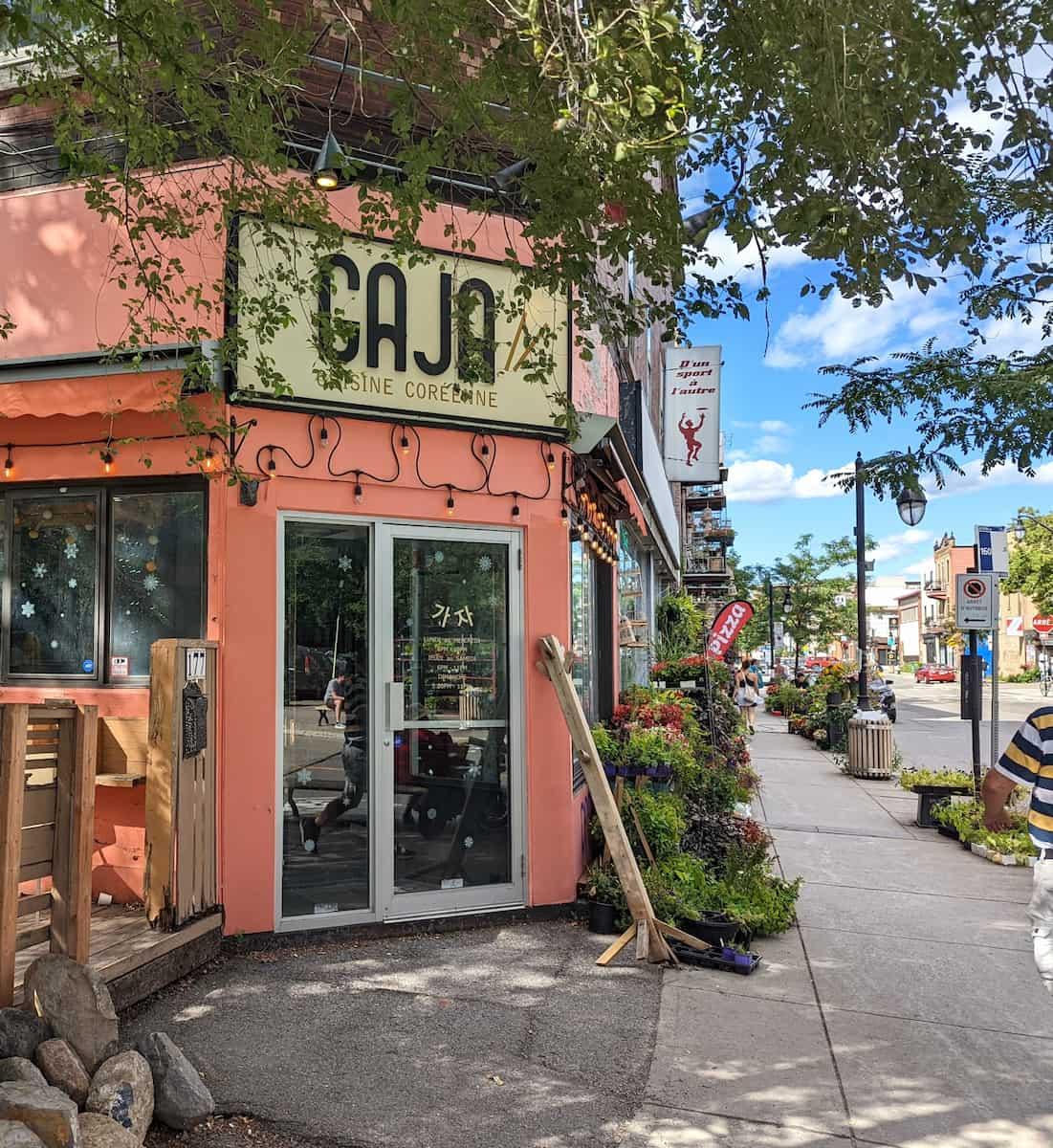
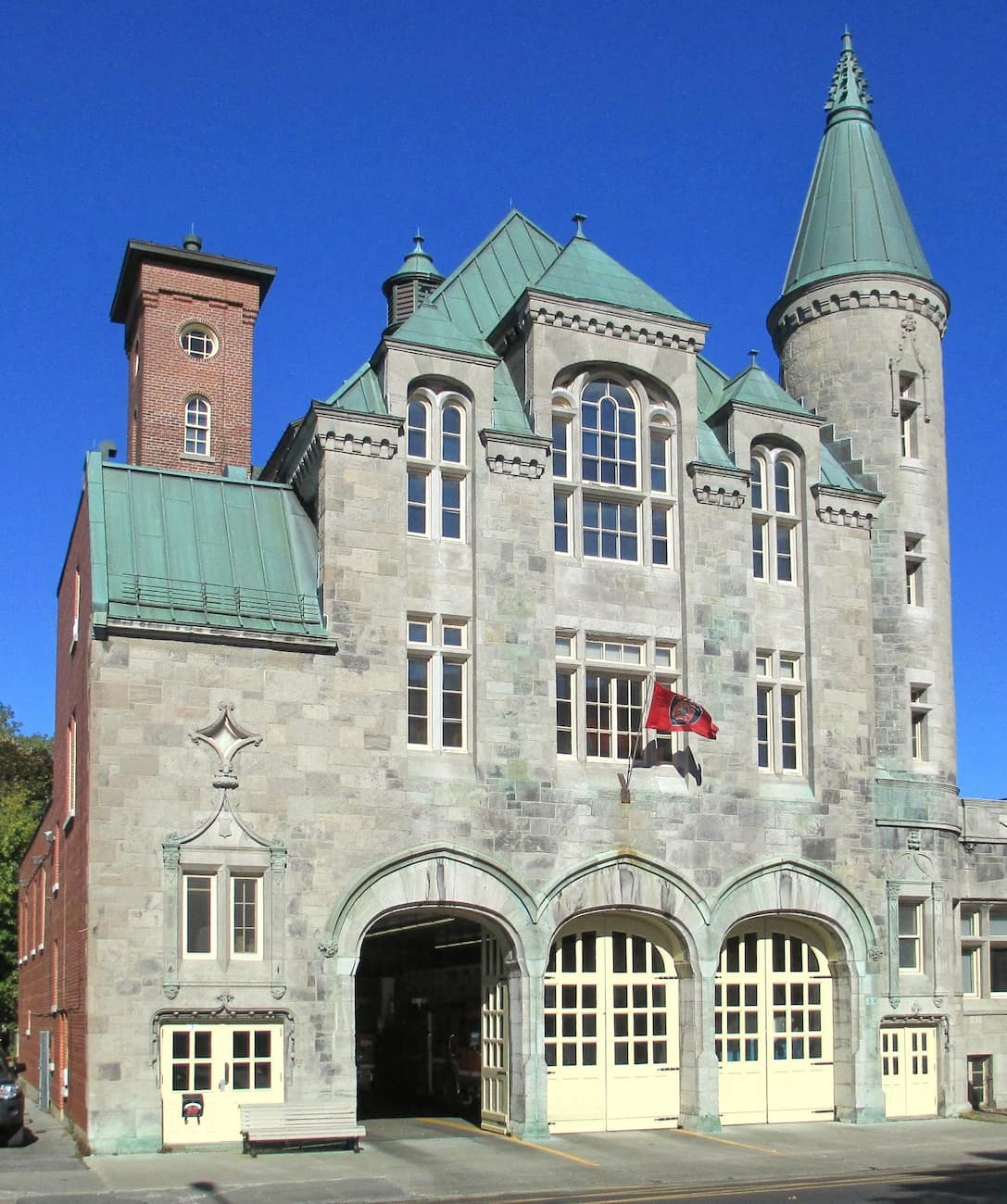
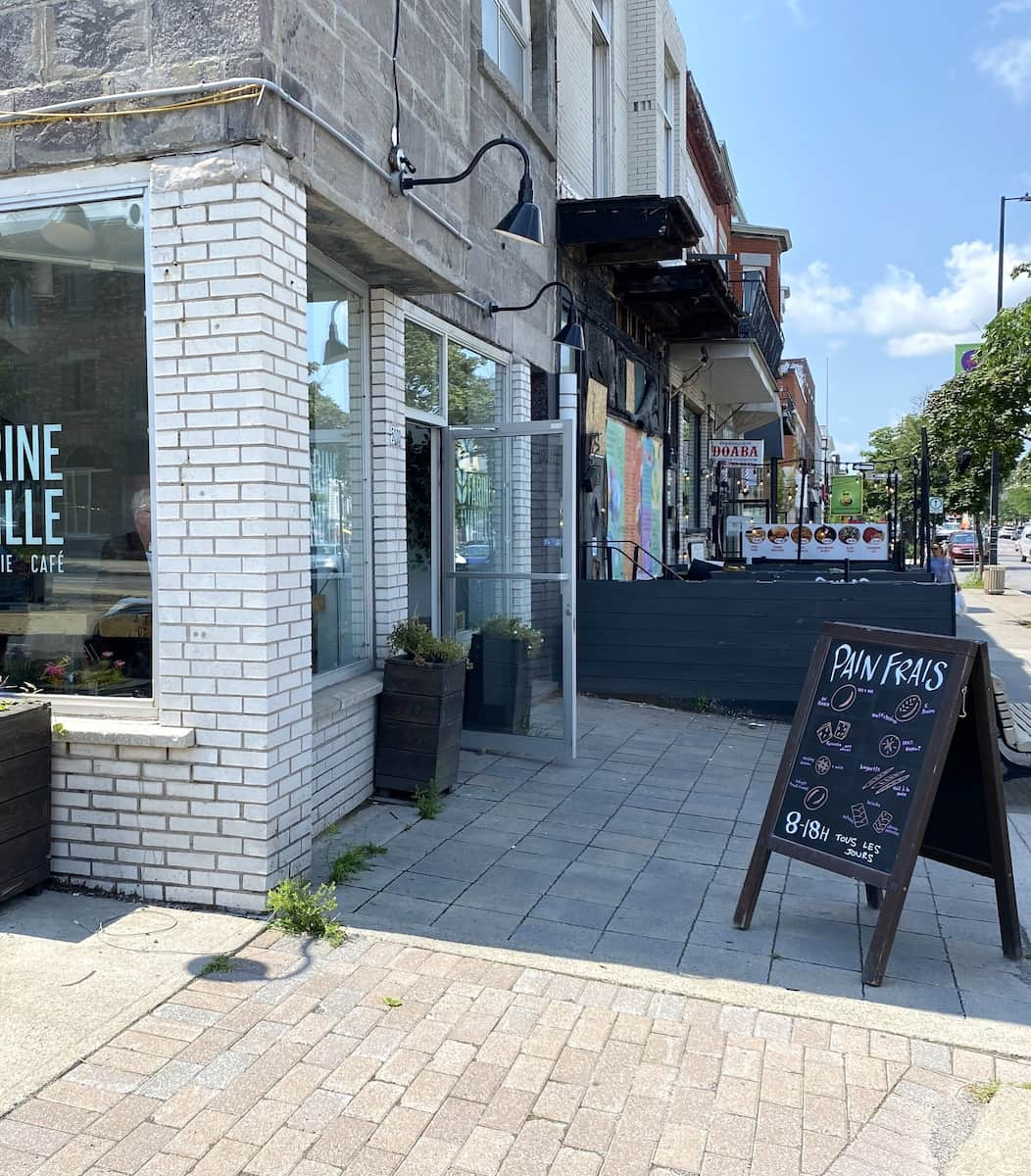

Mile End food crawl must-tries:
- St-Viateur sesame bagel with cream cheese (CA$3.25/≈€2.20)
- Wilensky’s Special pressed sandwich (CA$5.75/≈€3.90)
- Kem CoBa seasonal ice cream (CA$5.50/≈€3.70)
- Café Olimpico espresso (CA$3.25/≈€2.20)
- Drogheria Fine gnocchi with tomato sauce (CA$7/≈€4.75)
Literary landmarks. The Plateau was home to famous Canadian authors like Mordecai Richler and Michel Tremblay. I visited Drawn & Quarterly bookstore (211 Bernard West), which publishes and sells graphic novels and hosts regular literary events. The multilingual selection reflects Montreal’s diverse cultural identity.
Local exploration. The best way to experience these neighborhoods is simply to wander. I started at Mont-Royal Metro station and zigzagged north, discovering charming residential streets, pocket parks, and local businesses. Avenue Mont-Royal and Boulevard Saint-Laurent offer the highest concentration of shops, cafes, and restaurants.
⭐ Best Activities
- Montreal Secret Food Tours – Tantalize your taste buds on this culinary adventure through Montreal’s food scene, where you’ll sample local specialties like poutine, Montreal-style bagels, and smoked meat while learning about the city’s diverse cultural influences.
9. Place des Arts
Cultural complex. Place des Arts forms the heart of Montreal’s entertainment district. This massive cultural complex houses six performance halls where I caught a mesmerizing contemporary dance performance by a local company. The outdoor plaza transforms throughout the year to host various festivals and public installations.
Performance variety. What impressed me most was the diversity of programming. During my visit, I could choose between the Montreal Symphony Orchestra, a French-language theater production, contemporary dance, and a jazz concert – all happening under one roof on the same evening.
Performance venues at Place des Arts:
- Salle Wilfrid-Pelletier (2,982 seats) – Opera and orchestral performances
- Théâtre Maisonneuve (1,453 seats) – Dance and variety shows
- Théâtre Jean-Duceppe (765 seats) – French-language theater
- Maison Symphonique (2,100 seats) – Home of the Montreal Symphony Orchestra
- Cinquième Salle (421 seats) – Experimental works and intimate performances
- Studio-Théâtre (124 seats) – Workshop productions and emerging artists
Festival central. Place des Arts serves as the epicenter for Montreal’s major festivals. I timed my visit to coincide with the Montreal International Jazz Festival (late June to early July), when the surrounding streets close to traffic and transform into a massive outdoor concert venue with free performances on multiple stages.
Budget access. While ticket prices vary widely, I discovered that many venues offer rush tickets for 50% off about an hour before performances. The complex is located at 175 Sainte-Catherine Street West, directly above Place-des-Arts Metro station.
⭐ Best Activities
- Montreal Underground City Walking Tour – Discover Montreal’s fascinating underground network of tunnels and shopping complexes on this guided walking tour that reveals how locals navigate the city during harsh winter months while staying warm and dry.
10. Montreal Old Port
Waterfront charm. Montreal’s Old Port stretches for 2.5 kilometers along the river, offering a perfect blend of historical architecture and modern attractions. I spent a full day exploring this revitalized area that was once the city’s main commercial port but now serves as its recreational playground. The cobblestone promenades lined with cafes and street performers create a festive atmosphere year-round.
Observation wheel. La Grande Roue de Montréal stands 60 meters tall, making it the tallest observation wheel in Canada. I splurged on the CA$25 (≈€17) ticket for a breathtaking 360-degree view of the city, the river, and Mont-Royal in climate-controlled gondolas that operate regardless of weather.
Top activities at the Old Port:
- Zip-lining across Bonsecours Basin (CA$19.99/≈€13.50)
- Relaxing at Clock Tower Beach (free entry)
- Paddleboating on the calm harbor waters (CA$32/≈€21.50 per hour)
- Exploring the Montreal Science Centre (CA$22/≈€15)
- Taking a river cruise on Le Bateau-Mouche (CA$39/≈€26)
Historical elements. Between modern attractions, I discovered fascinating historical remnants like the Clock Tower, built in 1922 as a memorial to sailors lost at sea. The Silo No. 5 grain elevator stands as an imposing reminder of Montreal’s industrial past, now occasionally used for sound and light projections during summer festivals.
Seasonal transitions. The Old Port transforms completely with the seasons. Winter brings an ice skating rink and snow village, while summer features outdoor concerts and water activities. I found the best time to visit is at sunset when the Jacques Cartier Bridge lights up with an interactive light show called “Living Connections” that changes colors based on Montreal’s energy, weather, and social media activity.
⭐ Best Activities
- Downtown and Old Montreal South City Tour – Experience the contrast between Montreal’s modern downtown district and its historic Old Montreal neighborhood on this engaging walking tour that covers the city’s architectural evolution and cultural heritage.
- MTL Zipline Experience – Get your adrenaline pumping on Canada’s first urban zipline circuit, soaring 85 feet above Montreal’s picturesque Old Port for 1,200 exhilarating feet with spectacular views of the city.
11. La Grande Roue de Montréal
Sky-high views. La Grande Roue de Montréal stands majestically at 60 meters tall in the Old Port, offering what I consider the most spectacular panoramic views of the city. Unlike the Mount Royal lookout, this observation wheel provides a 360-degree perspective that includes the St. Lawrence River, the islands, Old Montreal’s historic architecture, and the downtown skyline – all from climate-controlled gondolas that operate year-round.
All-weather experience. What impressed me most was how the wheel transforms with the seasons. In summer, I enjoyed cooling air conditioning while taking in the vibrant harbor activities below. During my winter visit, heated cabins made it a cozy experience even as snowflakes swirled outside the glass, creating a magical snow globe effect over the frozen river landscape.

| Ticket Type | Price | Experience |
|---|---|---|
| Standard Gondola | CA$25 (≈€17) | 15-20 minute ride, shared cabin |
| VIP Gondola | CA$50 (≈€34) | Private cabin, glass floor, extended ride |
| Sunset Package | CA$35 (≈€23.50) | Standard ride with priority boarding at sunset |
| Family Pass (2 adults + 2 children) | CA$80 (≈€54) | Savings of CA$20 compared to individual tickets |
Beyond the ride. The area surrounding La Grande Roue has become a destination itself. I discovered a charming collection of food kiosks serving Quebec specialties like poutine and maple taffy. The adjacent terraced seating area offers a perfect spot to relax with a local craft beer while watching street performers and boats passing by.
Insider tip. Visit on Monday or Tuesday evenings for the shortest lines. I purchased my ticket online at lagranderouedemontreal.com to save CA$3 and skip the queue. Located at 362 rue de la Commune Est, it’s a 10-minute walk from either Champ-de-Mars or Place-d’Armes Metro stations.
⭐ Best Activities
- Epic Montreal Night Tour – Experience Montreal’s vibrant nightlife and illuminated landmarks on this evening tour that showcases the city’s beautiful architecture, lively entertainment districts, and spectacular city views after dark.
12. Montreal Biodome
Ecosystems adventure. The Montreal Biodome took me on a remarkable journey through five recreated ecosystems of the Americas without ever leaving the city. Housed in the former Olympic velodrome, this innovative space lets visitors experience tropical rainforest humidity one moment and sub-polar chill the next. I was particularly impressed by how the immersive environments include not just plants and animals, but also appropriate sounds, lighting, and even seasonal changes.
Wildlife encounters. What makes the Biodome special is how close you can get to the animals in naturalistic settings. I watched playful river otters swim overhead through glass tunnels, observed colorful tropical birds flying freely in the rainforest section, and stood mesmerized as penguins porpoised through icy waters just meters away.
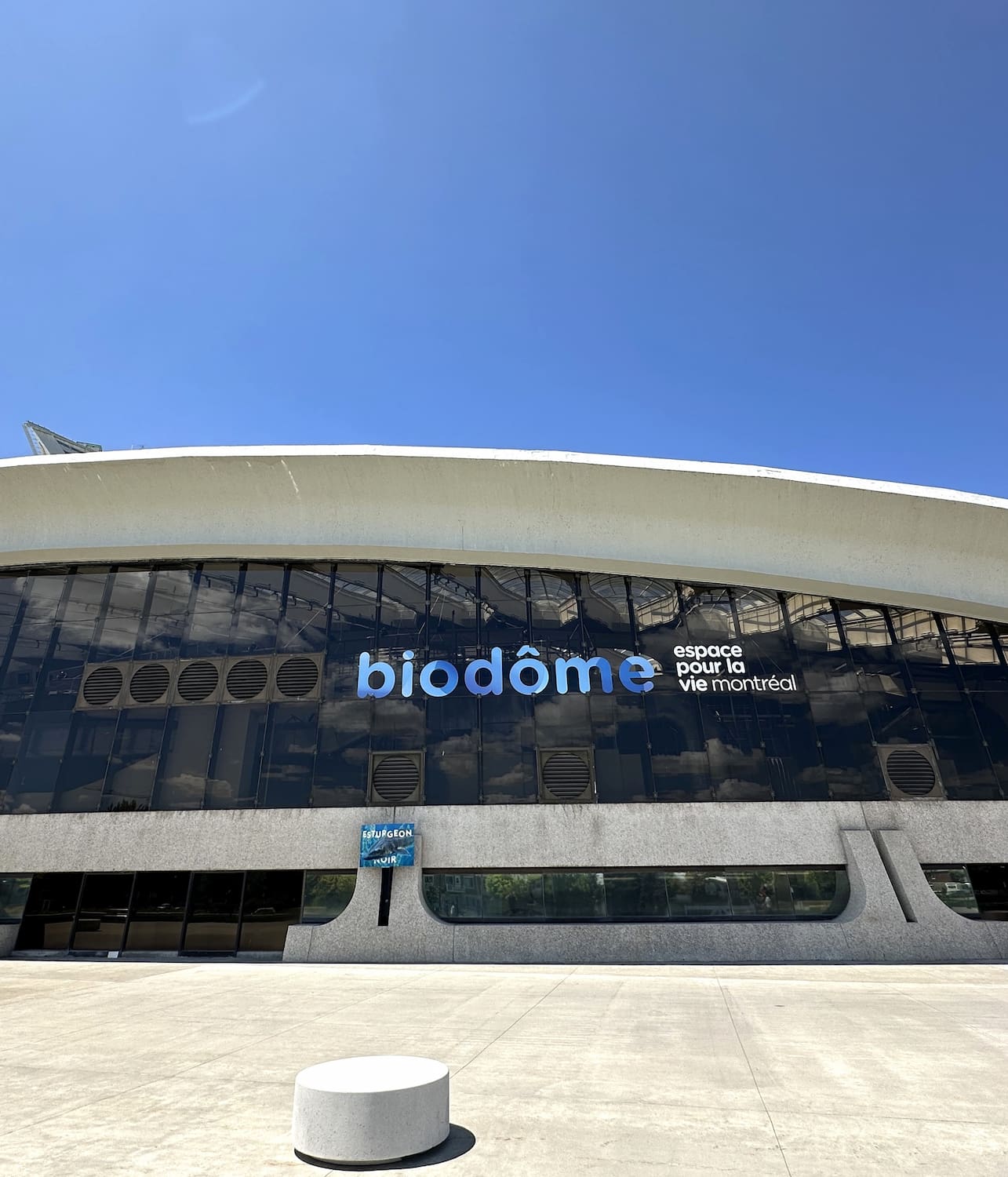

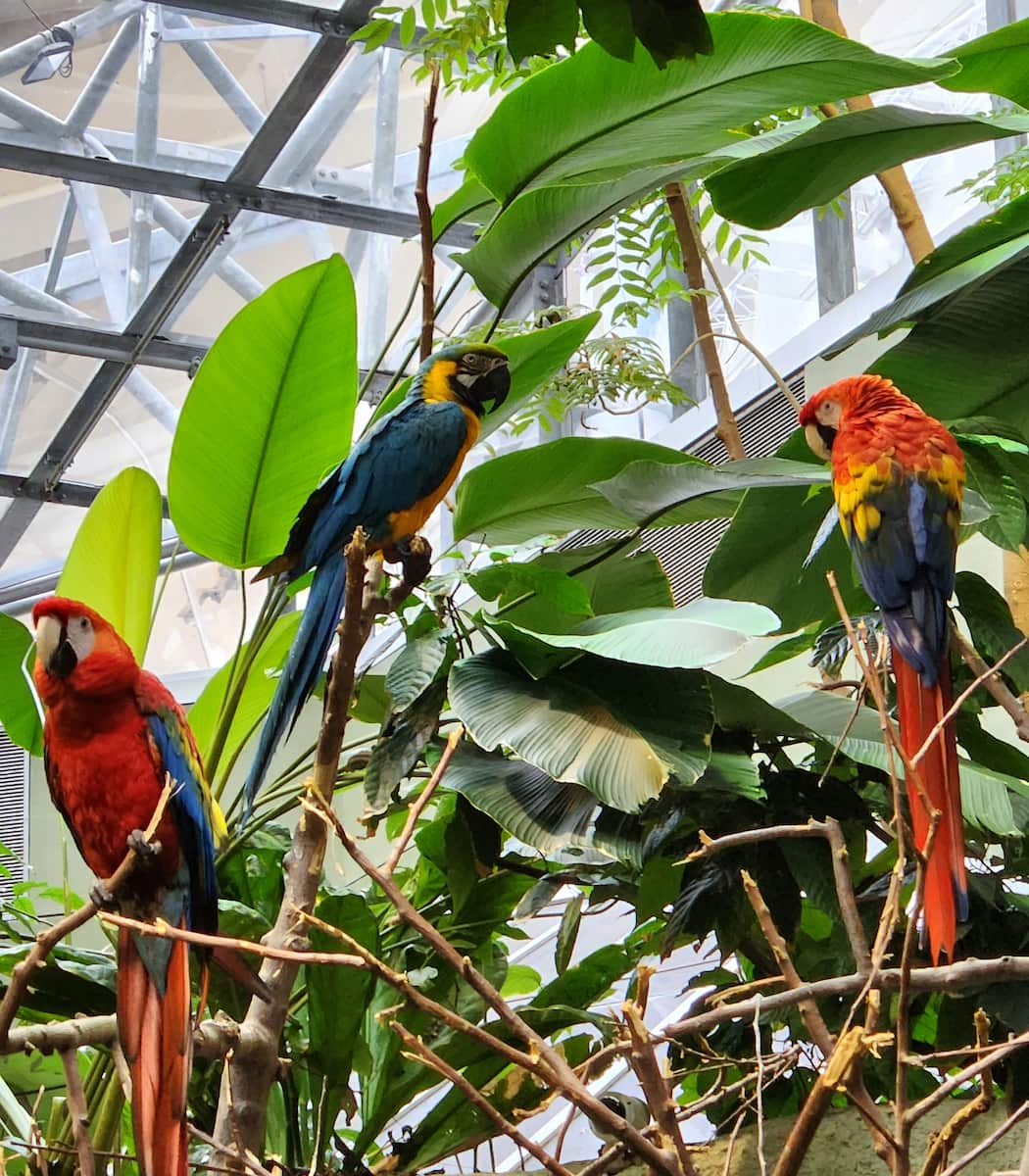

The five ecosystems featured:
- Tropical Rainforest (28°C year-round)
- Laurentian Maple Forest (seasonal temperature changes)
- Gulf of St. Lawrence (recreated shoreline ecosystem)
- Sub-Antarctic Islands (penguin habitat at 2°C)
- Labrador Coast (featuring native Canadian marine life)
Recent renovation. Following an extensive CA$37 million renovation completed recently, the Biodome now features improved viewing areas and a stunning central hub called the “Living Tree” that connects the ecosystems. The new design enhances both the visitor experience and animal welfare with larger, more complex habitats.
Practical information. Located at 4777 Pierre-de Coubertin Avenue within the Olympic Park complex, the Biodome is easily accessible via Viau Metro station. Admission costs CA$22 (≈€15) for adults, but I recommend the Space for Life passport (CA$58/≈€39) which includes entry to the adjacent Botanical Garden, Insectarium, and Planetarium for significant savings.
⭐ Best Activities
- Montreal: 5 Attractions Pass – Maximize your Montreal experience with this money-saving pass that gives you access to five top attractions including La Grande Roue, museums, breweries, and guided tours from a curated list of options.
13. Montreal Casino
Gaming wonderland. The Montreal Casino surprised me with its unique architecture – five floors of gaming space housed in the former French and Quebec pavilions from Expo 67. Located on Notre-Dame Island in the middle of the St. Lawrence River, this 24/7 entertainment complex offers more than just gambling. I enjoyed live music performances, gourmet dining options, and spectacular views of the city skyline from the upper levels.
Beyond the tables. What sets this casino apart from others I’ve visited is its emphasis on entertainment beyond gaming. Even as a casual gambler, I found plenty to enjoy, including the free Cabaret du Casino which hosts impressive musical acts and variety shows without any cover charge – just the cost of a drink.
Casino highlights by floor:
- Ground floor: Slot machines and electronic games
- Second floor: Table games (blackjack, roulette, baccarat)
- Third floor: High-limit gaming area
- Fourth floor: Poker room and sports betting
- Fifth floor: VIP gaming and exclusive restaurants
Culinary experiences. I treated myself to dinner at Restaurant Ajia, where the pan-Asian menu features dishes from CA$22-45 (≈€15-30). For a more budget-friendly option, the L’Instant food court offers meals starting at CA$12 (≈€8). The weekend brunch buffet at Pavillon 67 (CA$39/≈€26) is particularly popular among locals.
Getting there. The casino provides a free shuttle service from several downtown locations including the corner of René-Lévesque Boulevard and Jeanne-Mance Street. The shuttle runs every 30 minutes and saved me the CA$20 (≈€13.50) taxi fare each way. If you’re visiting during summer, the scenic route is biking there via the Circuit Gilles-Villeneuve cycling path.
⭐ Best Activities
- Montreal: Hop-On Hop-Off Double-Decker Bus Tour – Discover Montreal at your own pace with this flexible hop-on hop-off tour aboard a London-style double-decker bus, featuring 10 strategic stops at major attractions like Notre Dame Basilica, Old Montreal, and Mont Royal Park with informative live commentary from bilingual guides.
14. Bell Centre (Montreal Canadiens)
Hockey shrine. Experiencing a Montreal Canadiens game at the Bell Centre was the highlight of my winter visit to the city. The electric atmosphere created by 21,302 passionate fans (known as the Habs faithful) taught me why hockey isn’t just a sport in Montreal – it’s a religion. Even as someone who wasn’t previously a hockey fan, I was swept up in the excitement of watching this historic franchise that has won a record 24 Stanley Cups.
Game day experience. What surprised me most was the pre-game ritual. I arrived 90 minutes early to watch the warm-ups and witness the emotional video montage celebrating the team’s storied history. The crowd’s reaction to the classic “Fix You” by Coldplay as players took the ice gave me goosebumps.
Bell Centre visitor tips:
- Arrive early to watch warm-ups (doors open 90 minutes before game time)
- Visit the Canadiens Hall of Fame on the ground level (included with game ticket)
- Try the famous Bell Centre hot dogs (CA$6.50/≈€4.40)
- Look for last-minute tickets on the official Canadiens ticket exchange
- Stay for the three-star selection after the game
Beyond hockey. The Bell Centre also hosts major concerts and events throughout the year. I took the behind-the-scenes arena tour (CA$25/≈€17) during the off-season, which included visiting the press box, private suites, and even the Canadiens’ dressing room – a rare opportunity to see areas normally off-limits to the public.
Practical details. Located at 1909 Avenue des Canadiens-de-Montréal, the arena is directly connected to Lucien-L’Allier Metro station. Game tickets range from CA$75 (≈€50) for upper-level seats to CA$275 (≈€185) for lower bowl, though prices vary based on opponent. If you can’t score tickets, watching games at nearby sports bars like La Cage or Station des Sports offers a lively alternative.
⭐ Best Activities
- Montreal: Guided Bus Tour – Experience Montreal’s cultural highlights on this comprehensive 3.5-hour guided bus tour that showcases over 200 sites across the city, including spectacular views from Mont Royal Park, with expert commentary in English and French.
Things to Do in Montreal with Kids
1. Montreal Science Centre
Interactive learning. The Montreal Science Centre in the Old Port quickly became my family’s favorite rainy-day activity. Unlike traditional museums where touching is forbidden, here everything is designed to be handled, pushed, pulled, and experimented with. My kids spent hours building structures in the Fabrik creative workshop and conducting real experiments in the Science 26 exhibition where each letter of the alphabet corresponds to a scientific concept.
IMAX experience. The highlight for us was the IMAX theater with its massive seven-story screen and state-of-the-art sound system. We watched “Superpower Dogs” which had my children talking about rescue dogs for days afterward. The theater alternates between educational documentaries and Hollywood releases in 3D.
Family-friendly exhibits to prioritize:
- Fabrik – Creativity workshop with recycled materials
- Human – Interactive exploration of the human body
- Science 26 – Alphabetical science experiments
- Mini Mondo – Special area for children under 7
- Temporary exhibitions (change seasonally)
Budget strategy. I discovered that Thursday evenings (after 4pm) offer reduced admission at CA$14 (≈€9.50) instead of the regular CA$22 (≈€15) adult price. Children under 4 always enter free, and family packages provide good value at CA$65 (≈€44) for two adults and two children.
Practical parent tips. The Science Centre is stroller-friendly with wide pathways and elevators. I appreciated the clean family restrooms and nursing room. The food court offers healthy options, but you can also bring your own lunch and eat in the designated picnic area. Located at 2 rue de la Commune Ouest, it’s easily accessible via Place-d’Armes Metro station followed by a 10-minute walk.
⭐ Best Activities
- Montreal City 2-Day Hop-On Hop-Off Tour – Explore Montreal’s top attractions with this convenient 2-day pass that allows you to customize your sightseeing experience, hopping on and off red double-decker buses at 10 different stops while enjoying live commentary about the city’s history and culture.
2. La Ronde Amusement Park
Thrill seekers’ paradise. La Ronde amusement park on Île Sainte-Hélène provided my family with a full day of excitement and nostalgia. As Quebec’s largest amusement park, it features over 40 rides ranging from gentle carousels for toddlers to extreme roller coasters that had my teenagers screaming with delight. The park’s location on an island offers beautiful views of Montreal’s skyline, particularly from atop the Ferris wheel.
Coaster collection. What impressed me most was the variety of roller coasters. Goliath, with its 53-meter drop and speeds reaching 110 km/h, satisfied my thrill-seeking teenager, while the wooden Monstre coaster gave us a more classic experience. For younger children, the Ribambelle area offers gentler thrills with miniature versions of adult rides.

Height-based ride recommendations:
- Under 36″ (91cm): Le Petit Roue, Air Papillon, Joyeux Moussaillons
- 36″-42″ (91-107cm): Tchou Tchou, Bateau Pirate, Marche du Mille-Pattes
- 42″-48″ (107-122cm): Disco Ronde, Maison Hantée, Tourbillon
- 48″+ (122cm+): Goliath, Vampire, Titan, Orbite, Monstre
Water fun. On hot summer days, I recommend bringing swimwear for the Aqua Zone splash pad and Super Aqua Club water slides. These water attractions provided welcome relief from the summer heat without requiring a full change of clothes.
Money-saving tips. Daily admission costs CA$65.99 (≈€44.50) at the gate, but I purchased tickets online for CA$45.99 (≈€31). The best value is the Season Flash Pass at CA$85.99 (≈€58) if you plan to visit more than once. Food inside is expensive (CA$18/≈€12 for a basic burger meal), so we packed a picnic to eat in the designated areas just outside the main gates. La Ronde operates from mid-May to late October and is accessible via Jean-Drapeau Metro station.
⭐ Best Activities
- La Grande Roue de Montreal: Observation Wheel Ticket – Enjoy breathtaking panoramic views of Montreal from Canada’s tallest observation wheel.
3. Space for Life (Insectarium, Planetarium)
Bug wonderland. Montreal’s newly renovated Insectarium completely changed my children’s perception of insects. The immersive “We Are The Insects” exhibition let us experience the world from a bug’s perspective through oversized environments and interactive displays. My kids were fascinated by the live ant colonies where transparent tubes allowed us to watch the ants carrying food and building their underground network.
Star gazing. Just a short walk from the Insectarium, the Rio Tinto Alcan Planetarium offers two very different types of shows in its dual theaters. We experienced “Continuum,” an artistic journey through the cosmos set to an original Philip Glass score, and “EXO,” a more scientific presentation about the search for exoplanets. The contrast between poetic and scientific approaches appealed to different members of my family.
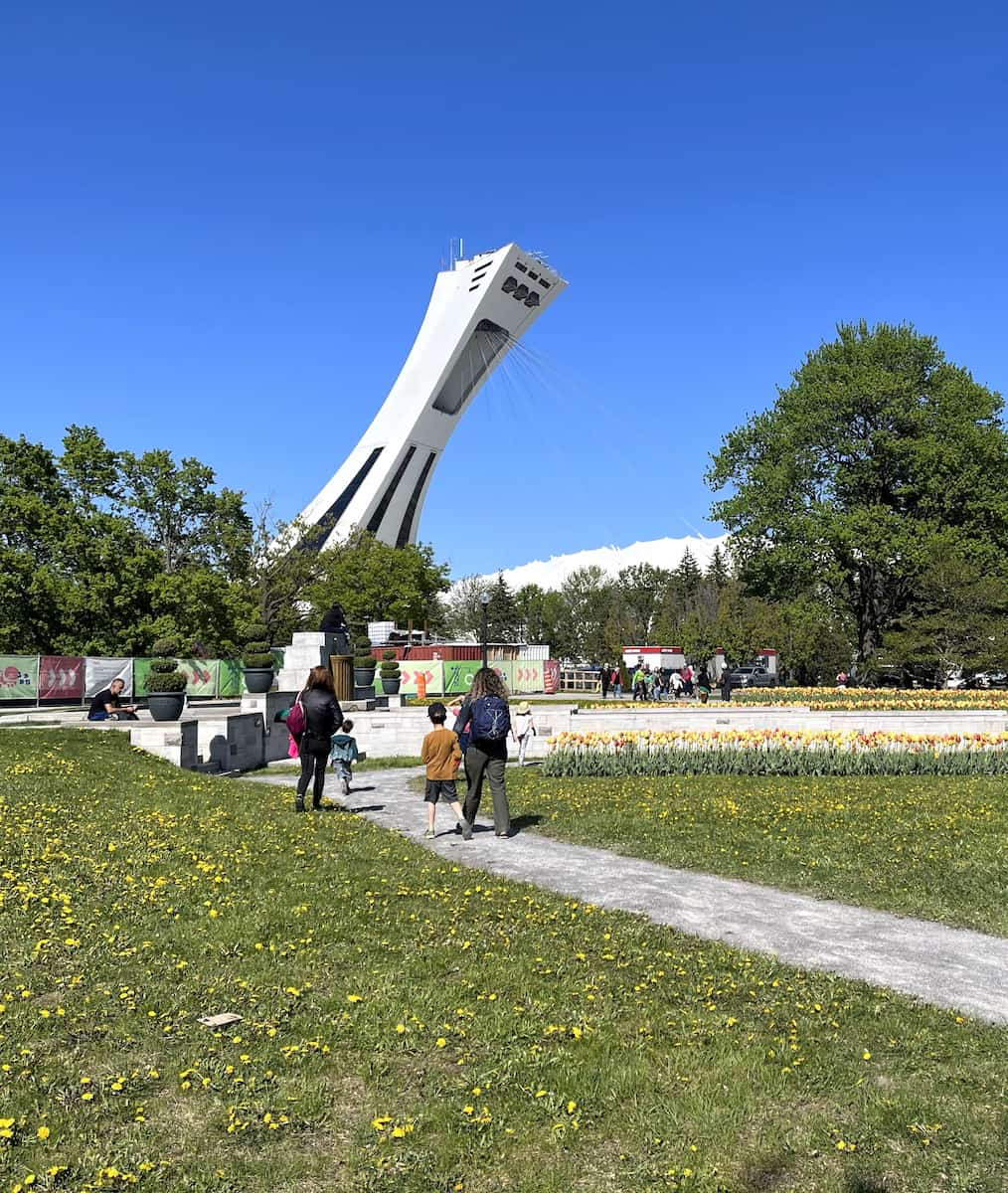

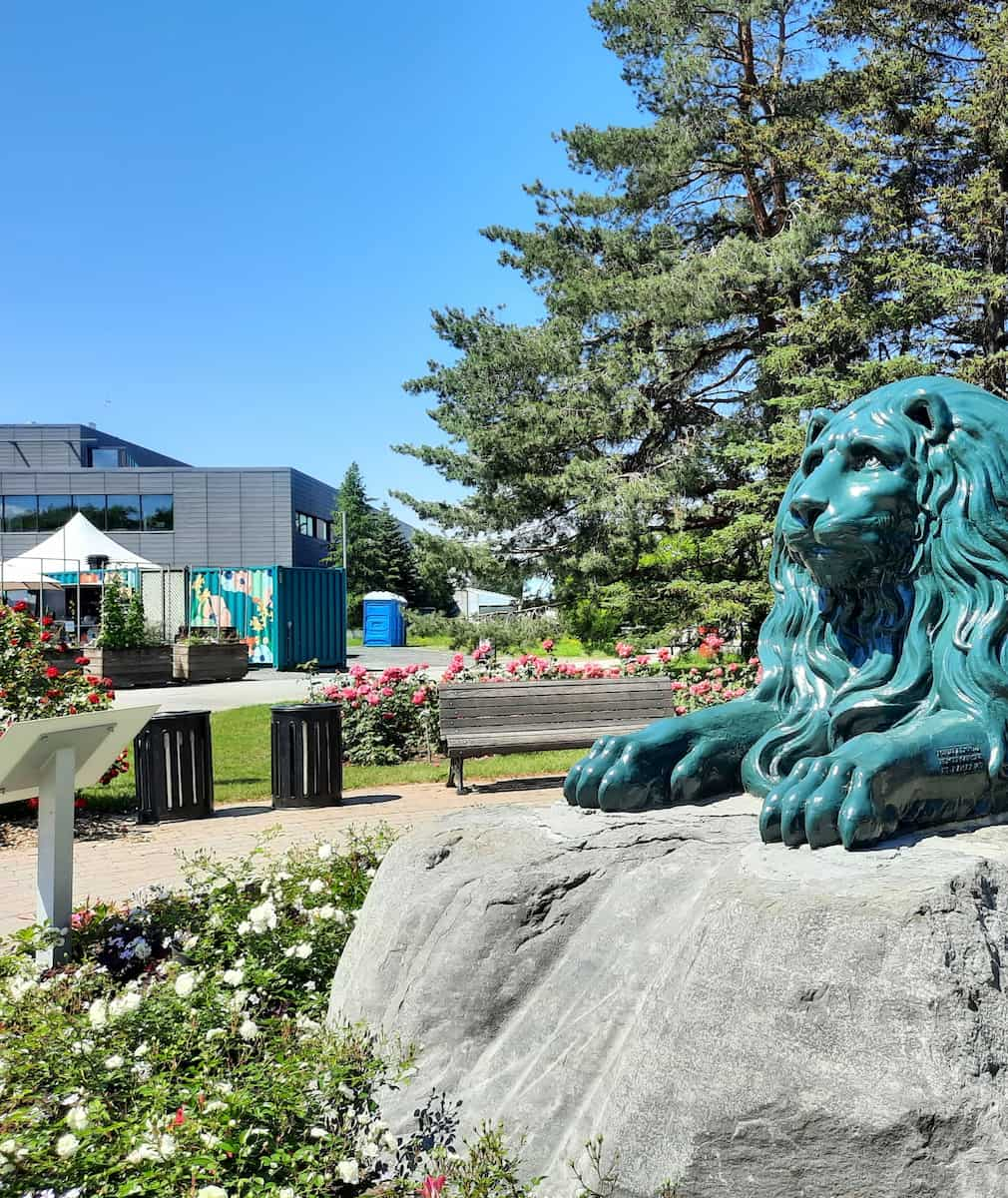

Planetarium show schedule and types:
- Continuum – Artistic cosmic journey (25 minutes)
- EXO – Scientific exploration of exoplanets (30 minutes)
- Passport to the Universe – Narrated tour of the galaxy (30 minutes)
- One Day on Mars – Interactive Mars mission (40 minutes)
- Seasonal Sky – Live presentation by an astronomer (varies)
Hands-on science. Between shows, my children enjoyed the interactive exhibits in the planetarium’s cosmic path where they could weigh themselves on different planets, create craters in simulated moon dust, and touch authentic meteorites that are billions of years old.
Practical information. Both attractions are part of Montreal’s Space for Life complex at 4101 Sherbrooke Street East, near Viau Metro station. Individual tickets cost CA$22 (≈€15) for adults and CA$11 (≈€7.50) for children aged 5-17, but the Space for Life passport at CA$58 (≈€39) for adults and CA$29 (≈€19.50) for children provides access to all four institutions (Biodome, Insectarium, Planetarium and Botanical Garden) and offers significant savings for families.
4. Ice Skating at Quartier des Spectacles
Urban winter magic. Ice skating at Place des Festivals in Montreal’s Quartier des Spectacles became the highlight of our winter family trip. Unlike traditional rinks, this urban skating experience is enhanced by colorful light installations and music that create a festive atmosphere. My children were enchanted by the interactive light features that responded to their movements across the ice.
Beginner-friendly. What I appreciated most as a parent was how welcoming the environment was for novice skaters. The rink includes a separate learning zone where my youngest could practice without fear of faster skaters. Skating aids shaped like penguins and bears are available for rent (CA$5/≈€3.40), providing stability for children still finding their balance.
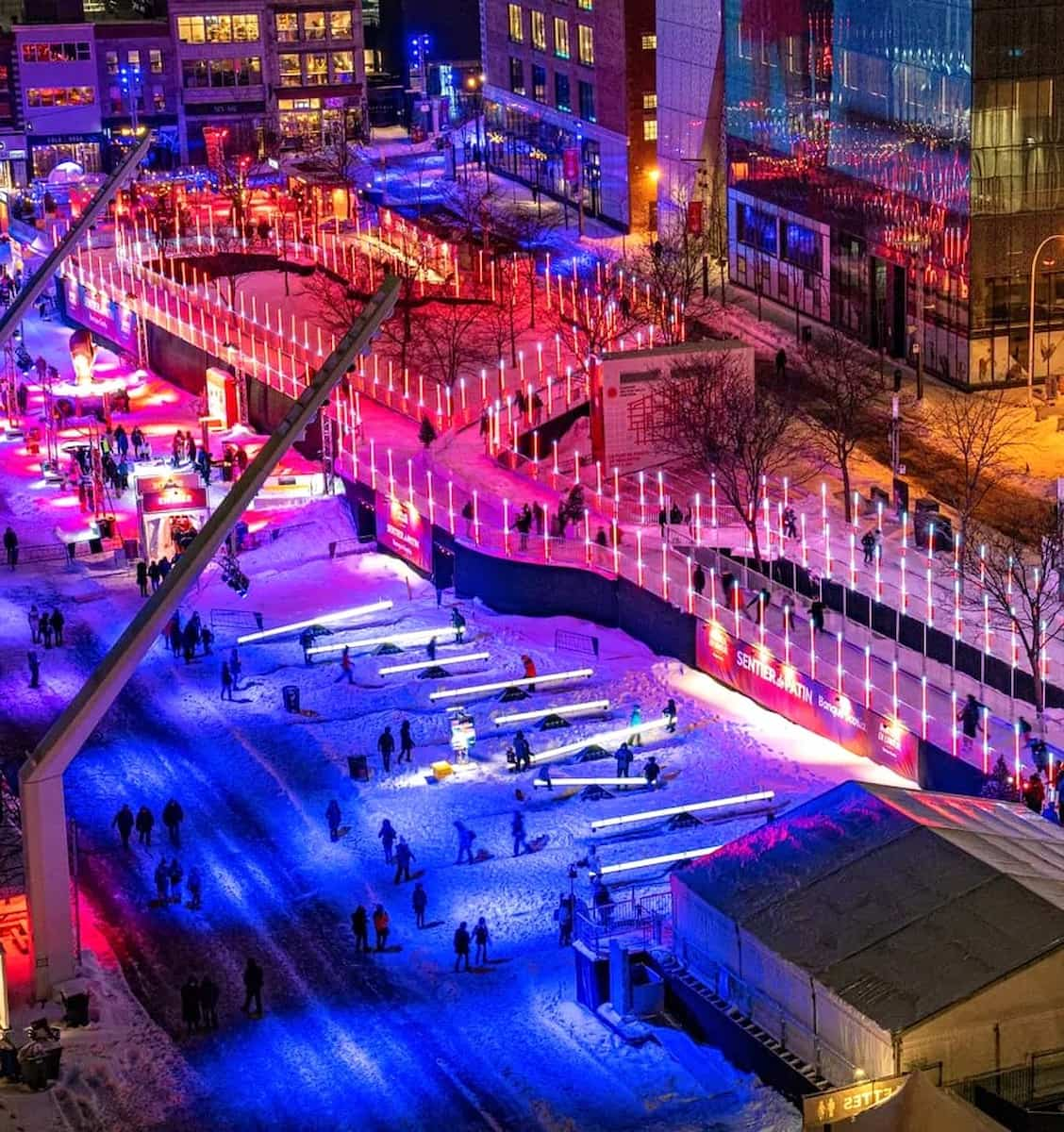

Essential skating information:
- Season: Mid-December through early March (weather permitting)
- Hours: 12pm-10pm weekdays, 10am-10pm weekends
- Admission: Free
- Skate rental: CA$12 (≈€8) adults, CA$8 (≈€5.40) children
- Helmet rental: CA$5 (≈€3.40)
Warming breaks. The heated pavilion beside the rink provided a welcome respite from the cold. We warmed up with hot chocolate (CA$4.50/≈€3) and maple taffy on snow (CA$5/≈€3.40) – a quintessential Quebec winter treat that my kids couldn’t get enough of.
Evening atmosphere. While daytime skating was fun, I recommend visiting after dark when the surrounding buildings come alive with projected light shows and the rink is illuminated with changing colors. The magical atmosphere transforms a simple skating session into a memorable Montreal winter experience. Located just steps from Place-des-Arts Metro station, this activity combines perfectly with exploring the Underground City on colder days.
5. Montreal Children’s Museum
Hands-on learning. The Montreal Children’s Museum (officially called the Centre des sciences de Montréal) offers an interactive playground where education feels like pure fun. My kids spent hours in the “Fabrik” creativity zone, constructing inventions from recycled materials and testing them against various challenges. What impressed me most was how the museum balances structured activities with open-ended exploration.
Age-appropriate zones. Unlike many children’s museums that cater primarily to younger kids, this one thoughtfully addresses multiple age groups. My toddler loved the sensory-rich Mini Mondo area designed specifically for under-5s, while my 10-year-old was fully engaged in the technology-focused Innovation Factory where she programmed a simple robot.
Activities by age group:
- Ages 0-4: Mini Mondo sensory play area
- Ages 4-7: Clic! construction zone, water play tables
- Ages 7-12: Science 26 experiments, Fabrik workshop
- Ages 12+: Human body exhibit, technology challenges
- All ages: IMAX films, temporary exhibitions
Special programs. We timed our visit to coincide with one of the museum’s workshop sessions where my children created light-up greeting cards using simple circuits. These 30-minute guided activities (included with admission) occur throughout the day and introduce scientific concepts through hands-on projects that kids can take home.
Visitor information. Located at 2 rue de la Commune Ouest in the Old Port, the museum is open daily from 10am to 5pm with extended summer hours. Admission costs CA$22 (≈€15) for adults and CA$13 (≈€8.75) for children 4-17, with under 4s free. I discovered that visiting after 3pm on weekdays offers a quieter experience with fewer school groups. The on-site café offers healthy lunch options, but you’re also permitted to bring your own food to eat in designated areas.
Free Things to Do in Montreal
1. Old Montreal Walks
Historic charm. Wandering through Old Montreal (Vieux-Montréal) feels like stepping into a European city with its cobblestone streets and buildings dating back to the 17th century. I spent an entire morning exploring this historic district without spending a dime. The narrow streets lined with gas lamps, stone facades, and sidewalk cafés create a distinctly French atmosphere that’s perfect for photography and people-watching.
Self-guided exploration. Rather than paying for a tour, I created my own walking route using the free map from the tourist information center at 174 Notre-Dame Street East. The staff there suggested a logical path that covered all the major highlights while avoiding the most touristy sections during peak hours.
Must-see spots in Old Montreal:
- Place Jacques-Cartier (lively square with street performers)
- Place d’Armes (historic square facing Notre-Dame Basilica)
- Rue Saint-Paul (oldest street in Montreal, lined with galleries)
- Champ de Mars (former fortification site with city views)
- Bonsecours Market (beautiful domed building from 1847)
- Montreal City Hall (impressive Second Empire architecture)
- Pointe-à-Callière (archaeological remains visible from outside)
Architectural details. What made this walk special was focusing on the small details often missed by hurried tourists. I discovered intricate door knockers, hidden courtyards, ghost signs from bygone businesses, and decorative masonry that told stories about Montreal’s past. Looking up revealed architectural elements that showcase the district’s evolution from New France to the present.
Timing tip. I found early morning (before 9am) or weekday evenings after 6pm offered the most atmospheric experience with fewer crowds. The area is easily accessible from either Place-d’Armes or Champ-de-Mars Metro stations. While many attractions within Old Montreal charge admission, simply walking the historic streets costs nothing and provides a genuine sense of Montreal’s rich heritage.
2. Mount Royal Park Hike
Natural escape. Hiking Mount Royal Park offers Montreal’s best free workout with a rewarding payoff – spectacular city views that don’t cost a penny. I followed the main path from Peel Street, climbing gradually through maple forests until reaching the summit lookout. The 45-minute uphill walk took me from urban streets to peaceful woodland, with the city sounds fading with each step upward.
Multiple routes. What I love about Mount Royal is how it offers options for every fitness level. The paved road provides an easier ascent, while numerous dirt paths and stairs offer more challenging routes for those seeking a workout. All paths are well-marked and eventually lead to the same summit area.
Mount Royal hiking trails by difficulty:
- Olmsted Road – Easiest route, gradual incline (45-60 minutes)
- Peel Street Staircase – Moderate, direct route with steps (30-40 minutes)
- Serpentine Path – Moderate, scenic switchbacks (40-50 minutes)
- Escarpment Path – Challenging, steeper terrain (25-35 minutes)
- Mountain Loop – Moderate, circular route around summit (90-120 minutes)
Seasonal beauty. Each season transforms the mountain experience. Spring brings wildflowers and bird migrations, summer offers shady relief from urban heat, fall explodes with spectacular maple foliage (mid-October is peak color), and winter creates a snowy wonderland perfect for sledding on designated hills. I accessed the park via Mont-Royal Metro station, followed by a 10-minute walk to the mountain base. Water fountains are available during summer months, but I recommend bringing your own water and snacks for a summit picnic.
3. Old Port Promenade
Riverside relaxation. The Old Port Promenade stretches for 2.5 kilometers along the St. Lawrence River, offering one of Montreal’s most pleasant free activities. I spent a leisurely afternoon strolling the wide, car-free boardwalk, watching boats navigate the river while street performers entertained the crowds. The mix of historic warehouses converted to modern uses alongside the working harbor creates a fascinating contrast.
People watching. What makes this promenade special is the diversity of people it attracts. I observed locals jogging and cycling alongside tourists taking photos, families enjoying picnics, and artists sketching the scenery. The atmosphere changes throughout the day, from morning exercisers to afternoon sunbathers to evening romantics watching the sunset.
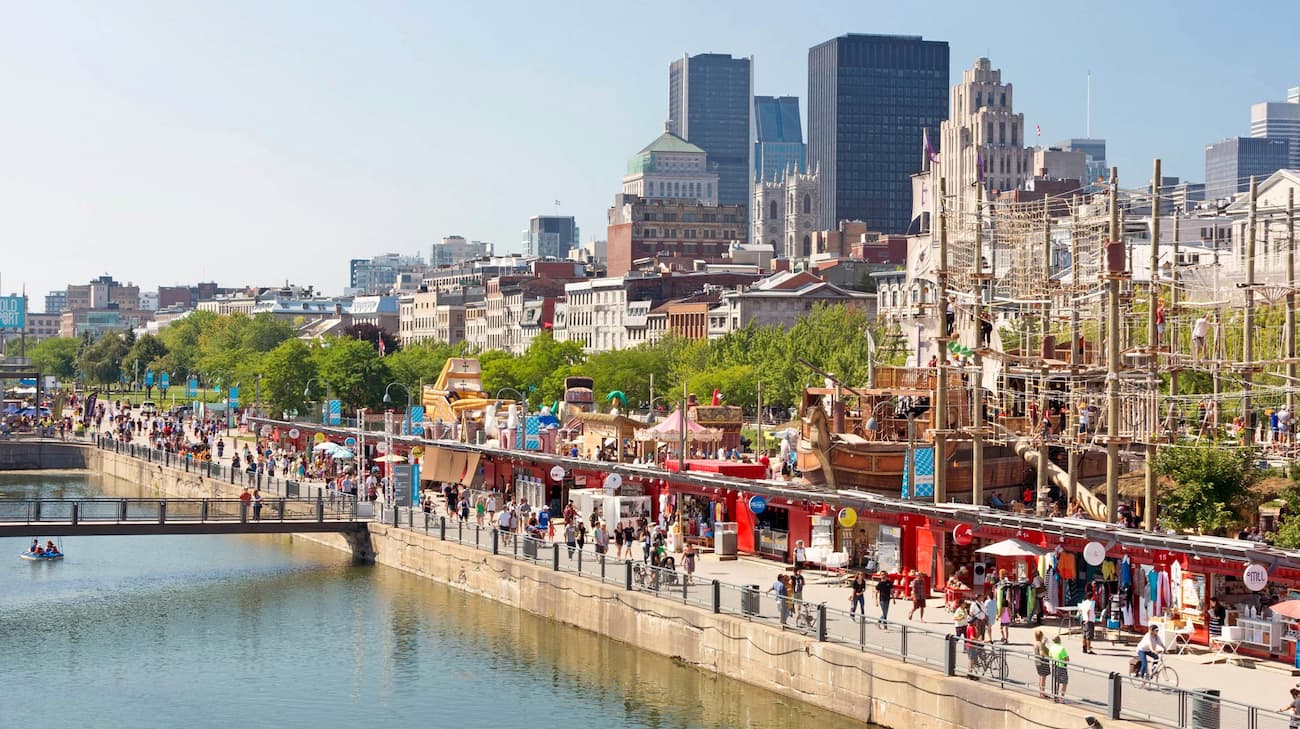
Best free activities along the promenade:
- Watching street performers near Jacques Cartier Pier
- Photographing the Clock Tower (built 1922)
- Observing boats passing through the locks
- Relaxing at urban beaches (entry to beaches is free)
- Enjoying the dancing fountains at Place des Vestiges
- Viewing public art installations that change seasonally
- Watching the Jacques Cartier Bridge light show after dark
Seasonal events. During my summer visit, I enjoyed free outdoor yoga sessions held every Saturday morning at Bonsecours Basin. The promenade hosts numerous free events throughout the year, from winter ice festivals to summer concerts. Check the Old Port website or information boards along the promenade for current offerings.
Budget-friendly tips. While many attractions along the Old Port charge admission, the promenade itself is completely free and offers excellent views of paid attractions like La Grande Roue. I brought my own picnic to avoid the expensive waterfront restaurants. The area is easily accessible from either Champ-de-Mars or Place-d’Armes Metro stations, followed by a 10-minute walk. Free public restrooms are available at several points along the promenade.
4. St. Joseph’s Oratory Grounds
Peaceful sanctuary. The expansive grounds surrounding St. Joseph’s Oratory offer a tranquil retreat from city life without any entrance fee. While donations are welcome, exploring the exterior gardens, terraces, and pathways of North America’s largest church is completely free. I spent a contemplative morning wandering the beautifully landscaped grounds that cascade down the mountainside in a series of terraces.
Architectural marvel. Even without entering the basilica itself, the exterior is impressive enough to warrant a visit. I circled the massive Renaissance-style dome (the third largest of its kind in the world) and admired the contrast between the original small chapel built by Brother André in 1904 and the monumental structure that now surrounds it.
Free areas to explore at the Oratory:
- The monumental staircase (283 steps)
- Multiple prayer gardens with statuary
- Votive Chapel exterior
- Way of the Cross garden path
- Panoramic terrace with city views
- Brother André’s original chapel
- Memorial fountains and reflection pools
Panoramic vistas. What surprised me most was the quality of the views from the upper terraces. The Oratory’s position on the northwestern slope of Mount Royal provides a different perspective of Montreal than the more famous Mount Royal lookout, with fewer tourists competing for photo opportunities.
Visitor information. The grounds are open daily from 6am to 9pm and are particularly beautiful in spring when the gardens bloom. While the interior basilica is free to enter, some museum areas charge admission. I found street parking on nearby residential streets, but the 65 bus from Guy-Concordia Metro station stops directly in front. For the best experience, I recommend visiting on weekday mornings when the grounds are quietest and the light is ideal for photography.
5. Street Art Tour (Saint Laurent Boulevard)
Open-air gallery. Montreal’s Saint Laurent Boulevard (nicknamed “The Main”) hosts one of North America’s most impressive collections of street art, all viewable for free. I created my own self-guided tour starting at Sherbrooke Street and walking north, discovering massive murals that transform ordinary buildings into extraordinary canvases. Many works are created during the annual MURAL Festival (June), but remain throughout the year.
Artistic diversity. What fascinated me was the range of styles represented – from photorealistic portraits to abstract compositions, political statements to whimsical characters. Each piece reflects Montreal’s vibrant creative culture and multicultural identity. Some murals occupy entire building facades while others hide in unexpected corners.
Notable locations:
- Saint-Laurent between Sherbrooke and Mont-Royal (highest concentration)
- Saint-Dominique between Rachel and Marie-Anne (smaller works)
- Avenue Duluth between Saint-Laurent and Saint-Denis (emerging artists)
- Rue Roy Est near Colonial (interactive pieces)
- Under Ville-Marie Expressway (graffiti-style works)
Festival connection. If possible, time your visit during the MURAL Festival (typically early June) when you can watch artists creating new works and attend free concerts, art exhibitions, and block parties. Even outside festival time, I discovered that many businesses along Saint-Laurent distribute free maps highlighting notable murals.
6. Window Shopping in Mile End
Boutique browsing. Mile End offers Montreal’s most interesting window shopping experience without requiring you to spend a cent. I spent a delightful afternoon exploring this hipster neighborhood’s independent boutiques, vintage shops, and design studios. The area around Bernard Avenue and Saint-Viateur Street showcases Montreal’s creative spirit through carefully curated shop windows that function as mini art installations.
Local designers. What makes window shopping here special is the focus on local Montreal designers rather than international chains. I discovered unique clothing, handcrafted jewelry, artisanal home goods, and quirky gifts that I wouldn’t find elsewhere. Even without purchasing, the displays provided inspiration and insight into Montreal’s design aesthetic.
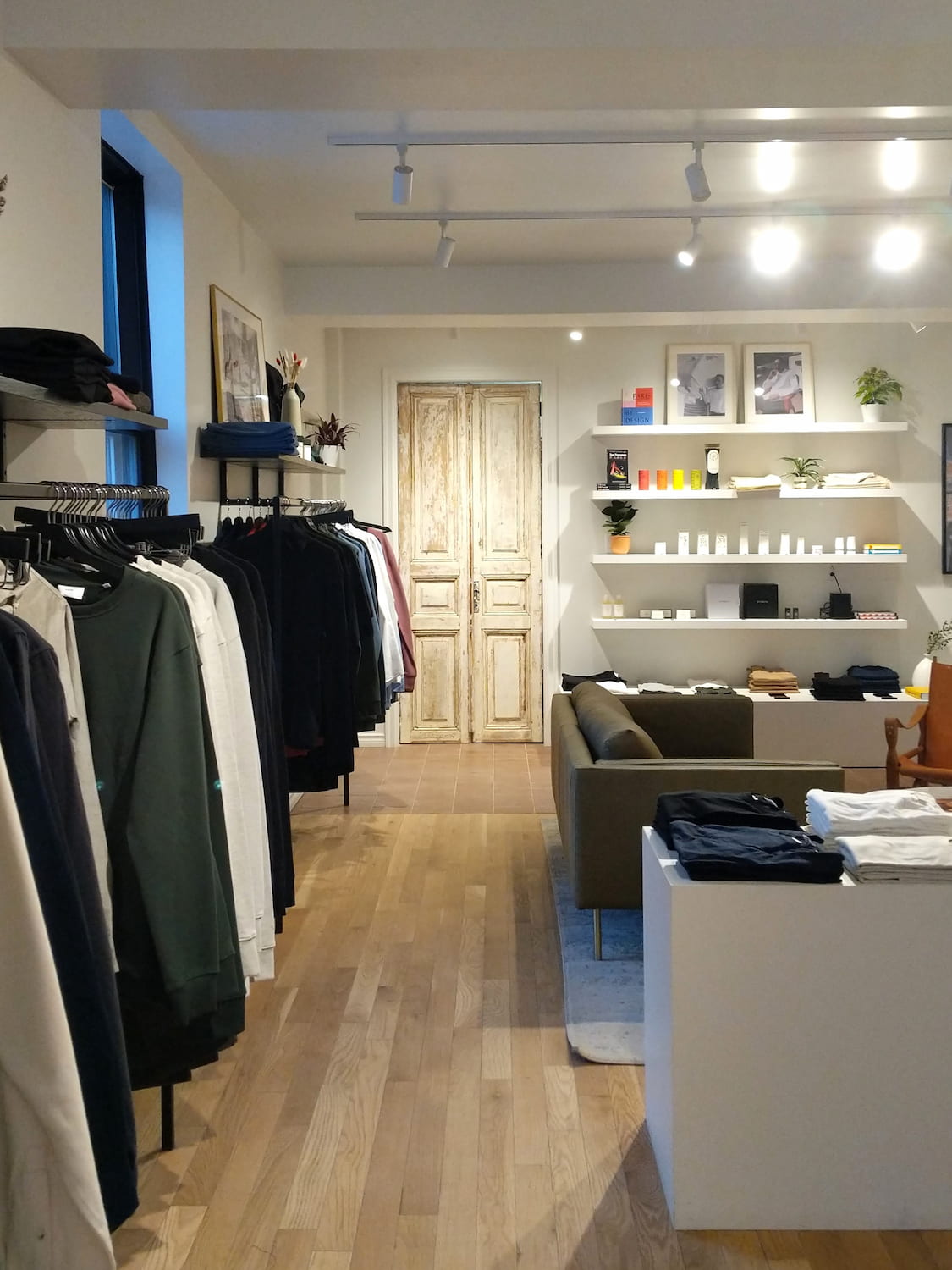


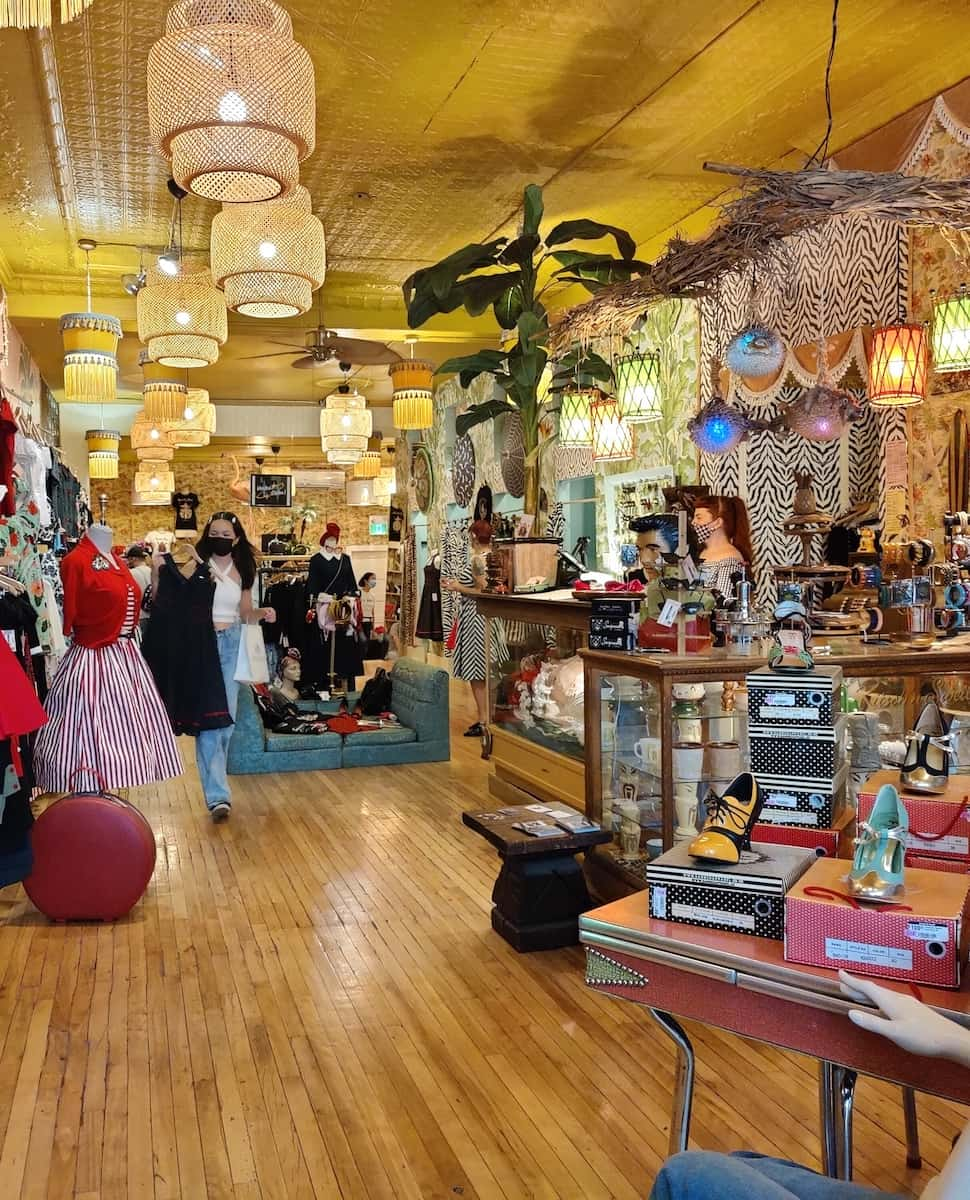
Mile End shopping streets to explore:
- Bernard Avenue (design-focused boutiques)
- Saint-Viateur Street (vintage and handcrafted items)
- Fairmount Avenue (specialty food shops)
- Rue Clark (art galleries and studios)
- Avenue du Parc (multicultural influences)
Bookstore browsing. My favorite free activity was exploring Drawn & Quarterly bookstore (211 Bernard West), where I could browse their carefully selected collection of graphic novels, art books, and literature. The staff didn’t mind non-buyers lingering to read, and the store hosts free author readings and launch events most evenings.
Cultural immersion. Window shopping in Mile End offers more than just retail therapy – it’s a cultural experience that reveals Montreal’s multicultural identity. I observed the neighborhood’s unique blend of Hasidic Jewish traditions alongside hipster coffee culture, with vintage shops next to traditional bakeries. The area is accessible via bus routes 80 or 55 from Laurier Metro station. For the best experience, I visited on Saturday afternoon when the neighborhood was lively but not overcrowded.
7. Free Festivals
World-class entertainment. Montreal’s reputation as a festival city is well-deserved, with hundreds of free outdoor performances during the summer months. I was amazed by the quality and quantity of free programming at the Montreal International Jazz Festival, where I enjoyed performances by both established artists and emerging talents across multiple outdoor stages without spending a dime on tickets.
Festival variety. What impressed me most was the diversity of free festivals throughout the year. Beyond the famous Jazz Festival, I discovered free programming at Montréal en Lumière (winter), MURAL Festival (street art in June), Just For Laughs (comedy in July), and Nuits d’Afrique (world music in July).
Major free festivals by season:
- Winter: Montréal en Lumière (late February), Igloofest (January)
- Spring: Festival TransAmériques (dance/theater, May-June)
- Summer: Jazz Festival (late June-early July), MURAL Festival (June), Just For Laughs (July), Nuits d’Afrique (July), Osheaga (partial free programming, August)
- Fall: POP Montreal (September), Gardens of Light (partial free programming, September-October)
Strategic planning. To maximize my free festival experience, I downloaded the official festival apps which provided up-to-date schedules and maps. I discovered that weekday performances were less crowded than weekends, and arriving 30 minutes early secured good viewing spots even for popular acts.
8. Parc Jean-Drapeau
Island escape. Parc Jean-Drapeau spans two islands in the St. Lawrence River, offering a free natural retreat just minutes from downtown Montreal. I spent an entire day exploring this massive green space that hosted Expo 67 and the 1976 Olympics. The park combines natural landscapes with architectural remnants from these historic events, creating a unique environment that’s perfect for walking, cycling, or picnicking.
Beach access. What surprised me most was finding a beautiful beach in the middle of the city. Jean-Doré Beach charges admission during swimming season, but the surrounding shoreline areas are free to access year-round. I enjoyed walking along the waterfront paths with views of Montreal’s skyline across the water.
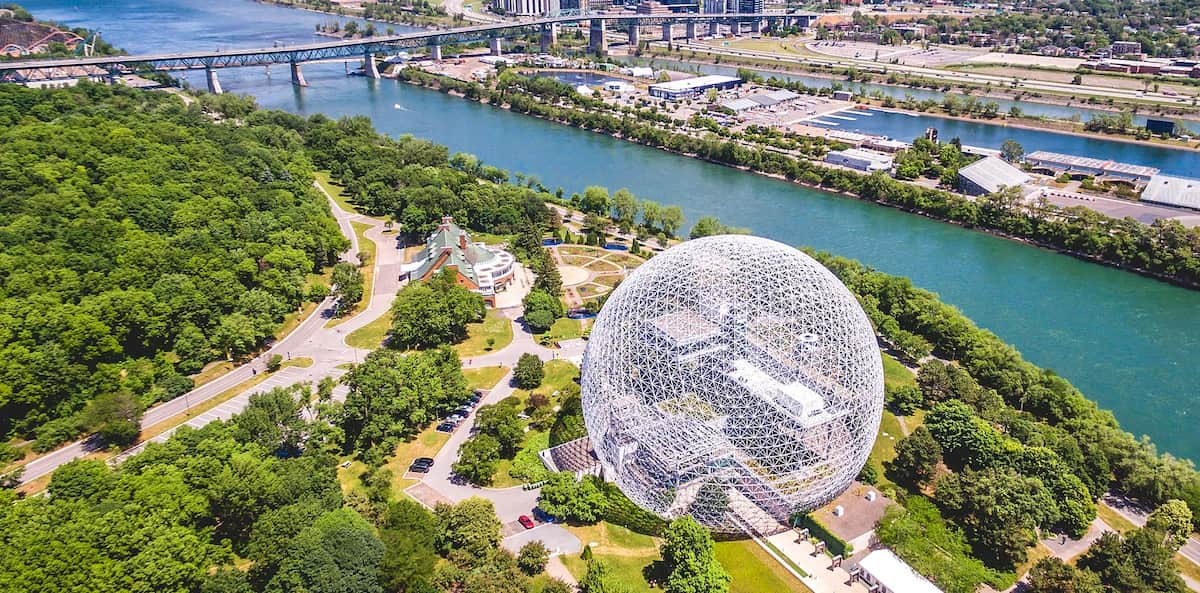
Free activities at Parc Jean-Drapeau:
- Hiking the extensive trail network
- Cycling on dedicated bike paths (bring your own bike)
- Picnicking in designated areas
- Exploring public art installations
- Visiting the Floralies Gardens
- Photographing Buckminster Fuller’s Biosphere
- Watching outdoor events at Place des Nations
- Enjoying seasonal activities (sledding in winter, bird watching in spring)
Architectural highlights. The park contains fascinating architectural remnants from Expo 67 and the Olympics. I was particularly impressed by the Biosphere (formerly the American Pavilion), which now houses an environmental museum. While the museum itself charges admission, viewing the iconic geodesic dome from outside is free and makes for spectacular photos.
Practical information. The park is accessible via Jean-Drapeau Metro station, which places you right in the middle of the action. I found that renting a BIXI bike from the station (CA$5.25/≈€3.55 for a day pass) was the best way to cover the expansive grounds. Free maps are available at the information center near the metro station. Pack your own food and drinks as the on-site concessions are expensive and limited outside of major events. The park is open daily from 6am to midnight, with some areas like the casino open 24 hours.
9. Free Beaches (e.g., Clock Tower Beach)
Urban shorelines. Montreal may be inland, but it offers several free beach experiences along its waterways. I discovered that Clock Tower Beach in the Old Port provides a sandy urban oasis without an admission fee. While swimming isn’t permitted in the St. Lawrence River here, the imported sand, blue and white striped deck chairs, and boardwalk create a convincing beach atmosphere perfect for sunbathing and people-watching.
Riverside relaxation. What makes these urban beaches special is their contrast with the surrounding city. At Clock Tower Beach, I enjoyed the juxtaposition of sand between my toes while gazing at Montreal’s skyline and the historic Clock Tower (built in 1922). The gentle sound of water lapping against the shore provided a calming soundtrack to my afternoon of reading and relaxation.
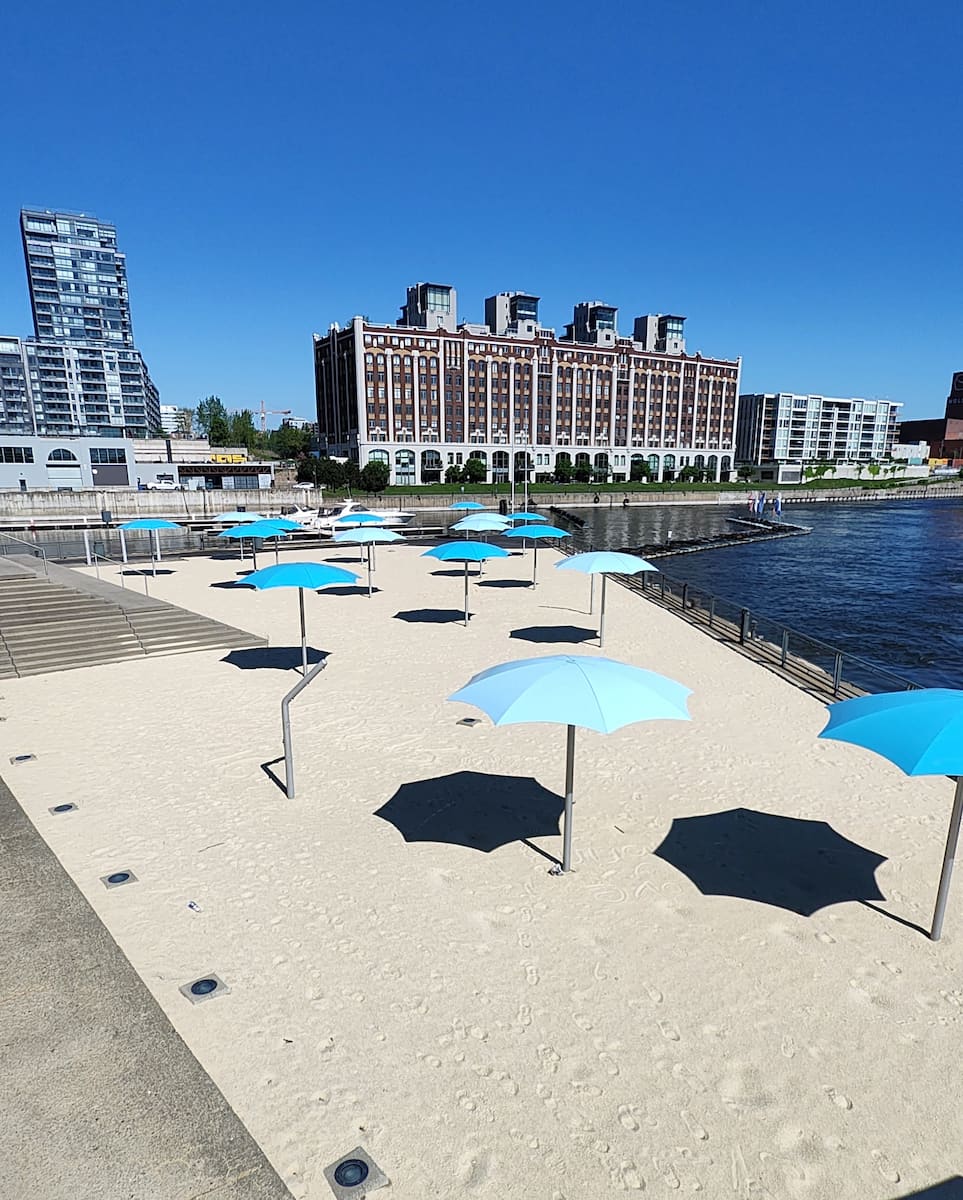


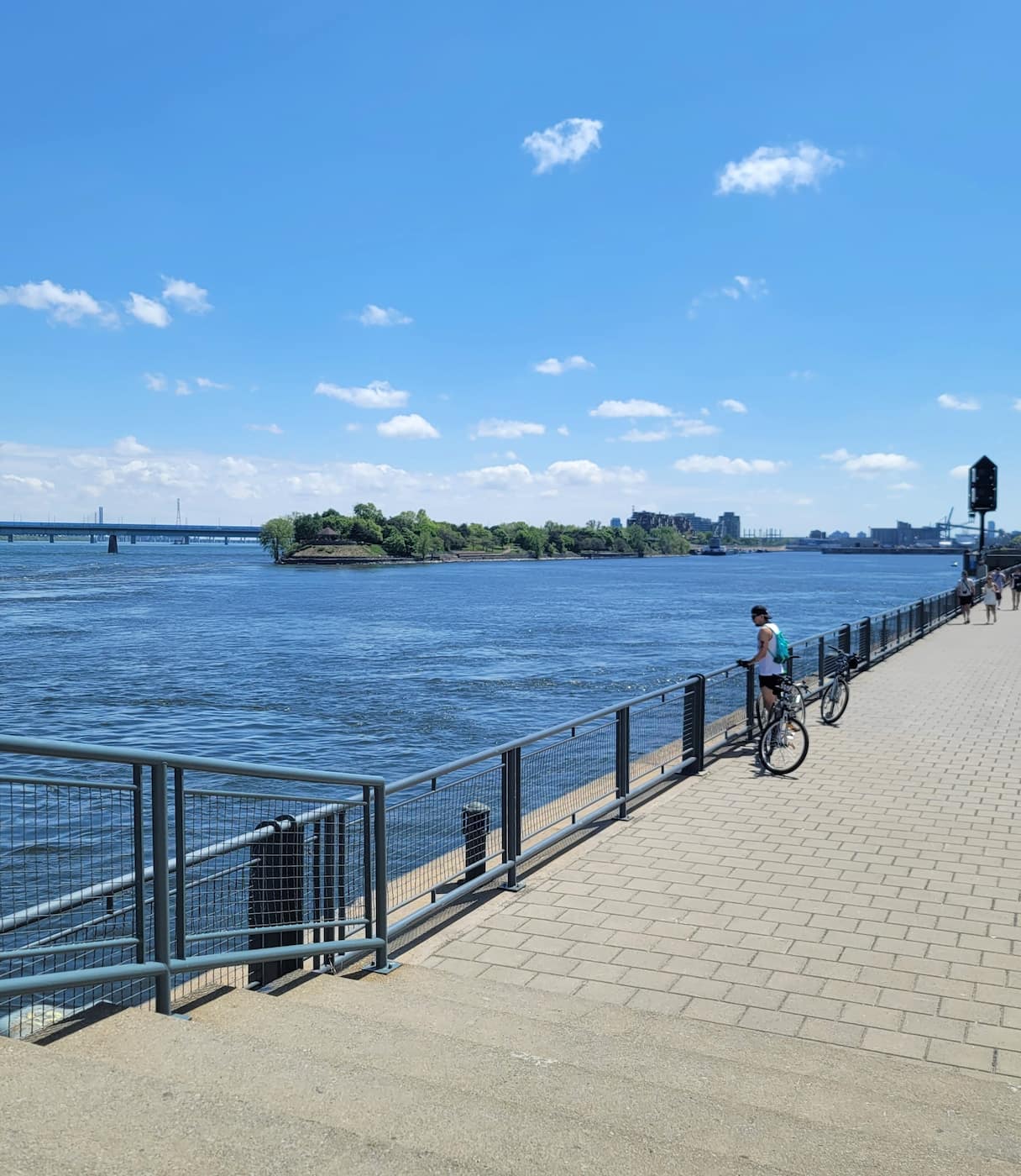
Free beaches around Montreal:
- Clock Tower Beach (Old Port) – urban beach with no swimming
- Verdun Beach (Verdun) – swimming permitted, lifeguards in summer
- Cap-Saint-Jacques Nature Park – natural beach on Lac des Deux Montagnes
- Bois-de-l’Île-Bizard Nature Park – secluded beach on a western island
- Parc-nature du Cap-Saint-Jacques – largest beach in the Montreal area
Seasonal amenities. During summer months (June-September), these beaches offer varying levels of free amenities. At Verdun Beach, I found public restrooms, outdoor showers, and drinking water fountains. Some beaches host free activities like morning yoga sessions, sand castle competitions, and outdoor reading libraries.
Getting there. Clock Tower Beach is the most accessible, located at the foot of the Clock Tower in the Old Port, a 10-minute walk from Champ-de-Mars Metro station. For the natural beaches, public transportation requires more planning – I took bus 68 from Pierrefonds station to reach Cap-Saint-Jacques. The urban beaches are typically open from 10am to 7pm during summer, while natural park beaches have varying hours. I recommend bringing your own shade, water, and snacks as services can be limited, especially at the more remote locations.
Seasonal Activities
Christmas in Montreal
Winter wonderland. Montreal embraces the holiday season with a magical transformation that begins in mid-November and extends through early January. I was enchanted by the contrast of historic stone buildings dusted with snow and illuminated by thousands of twinkling lights. The city’s European character shines during this season, with Christmas markets, outdoor activities, and festive traditions that make braving the cold worthwhile.
Market magic. The Grand Marché de Noël at Place des Arts became my evening ritual, where I warmed up with mulled wine (vin chaud, CA$8/≈€5.40) while browsing handcrafted gifts from local artisans. The market runs from November 23 to December 31, featuring over 100 vendors in wooden chalets reminiscent of European Christmas markets.
Montreal’s top Christmas experiences:
- Grand Marché de Noël (Place des Arts)
- Merry Montreal celebrations (Old Port)
- Christmas in the Park (three locations: Place Émilie-Gamelin, Parc des Compagnons, and Parc Lahaie)
- Skating at Natrel Rink with views of Old Montreal
Indoor escapes. When the temperature dropped below -15°C, I retreated to the Underground City where the “Art Souterrain” festival displays holiday-themed installations throughout the interconnected malls and metro stations. The Complexe Desjardins hosts a daily animated Christmas tree light show synchronized to holiday music that delighted both children and adults.
Seasonal specialties. Montreal’s culinary scene embraces holiday traditions with seasonal menus. I indulged in tourtière (meat pie) at Au Pied de Cochon (536 Duluth Est) for CA$24 (≈€16) and réveillon-inspired tasting menus at several restaurants. For a sweet treat, I discovered that Juliette et Chocolat (multiple locations) serves a decadent Bûche de Noël (yule log cake) available by the slice (CA$9.50/≈€6.40) or as a whole cake for gatherings.
Summer Festivals and Events
Festival marathon. Summer in Montreal transforms the city into one continuous celebration, with back-to-back festivals from June through August. I planned my visit to coincide with the Montreal International Jazz Festival (June 27-July 6), which holds the Guinness World Record as the largest jazz festival on the planet. The festival features over 500 concerts across 20 stages, with approximately two-thirds of performances completely free.
Music everywhere. What makes Montreal’s summer festival scene special is the diversity of offerings. Immediately after Jazz Fest concludes, the city transitions to Just For Laughs (July 10-28), the world’s largest comedy festival with free outdoor performances and street entertainment throughout the Quartier des Spectacles.
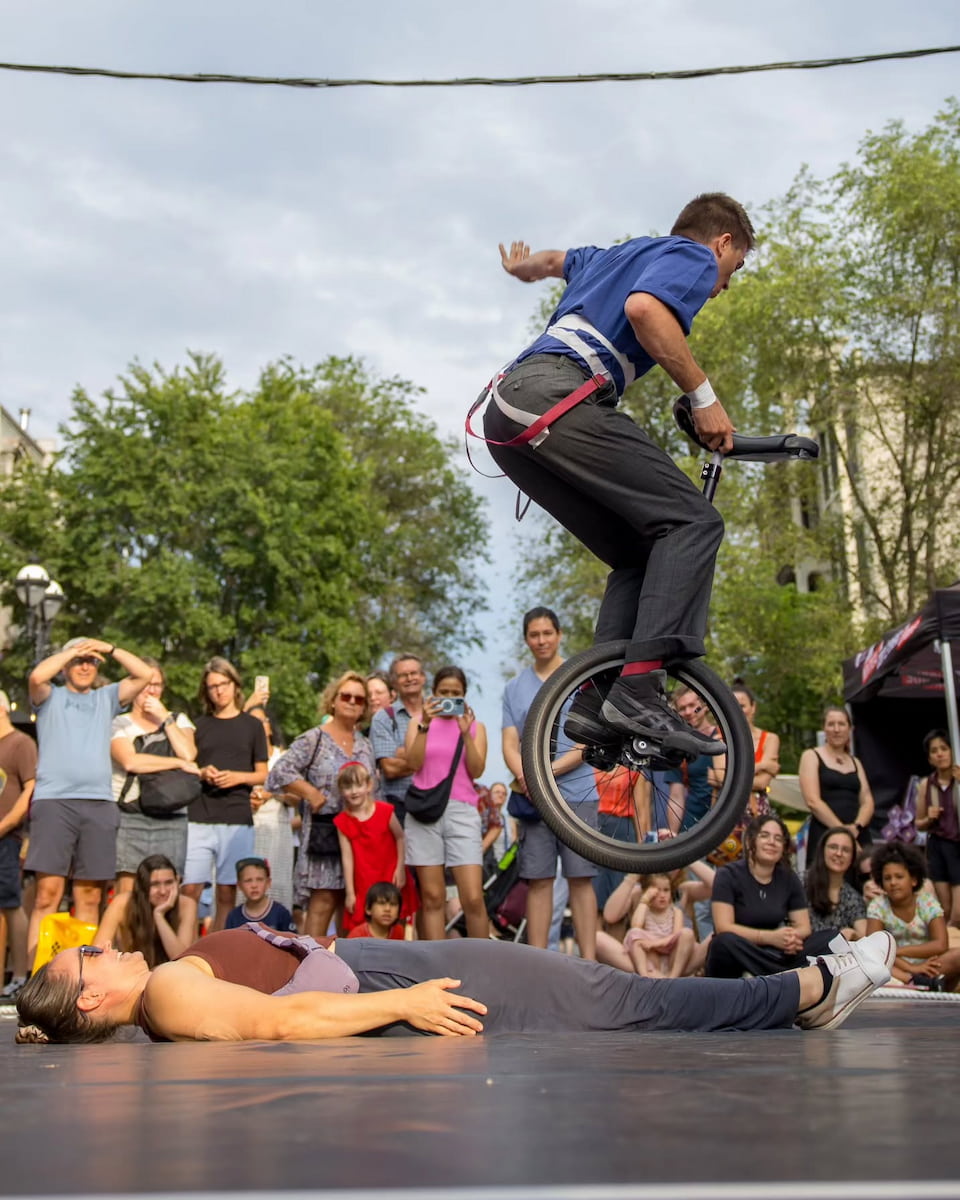
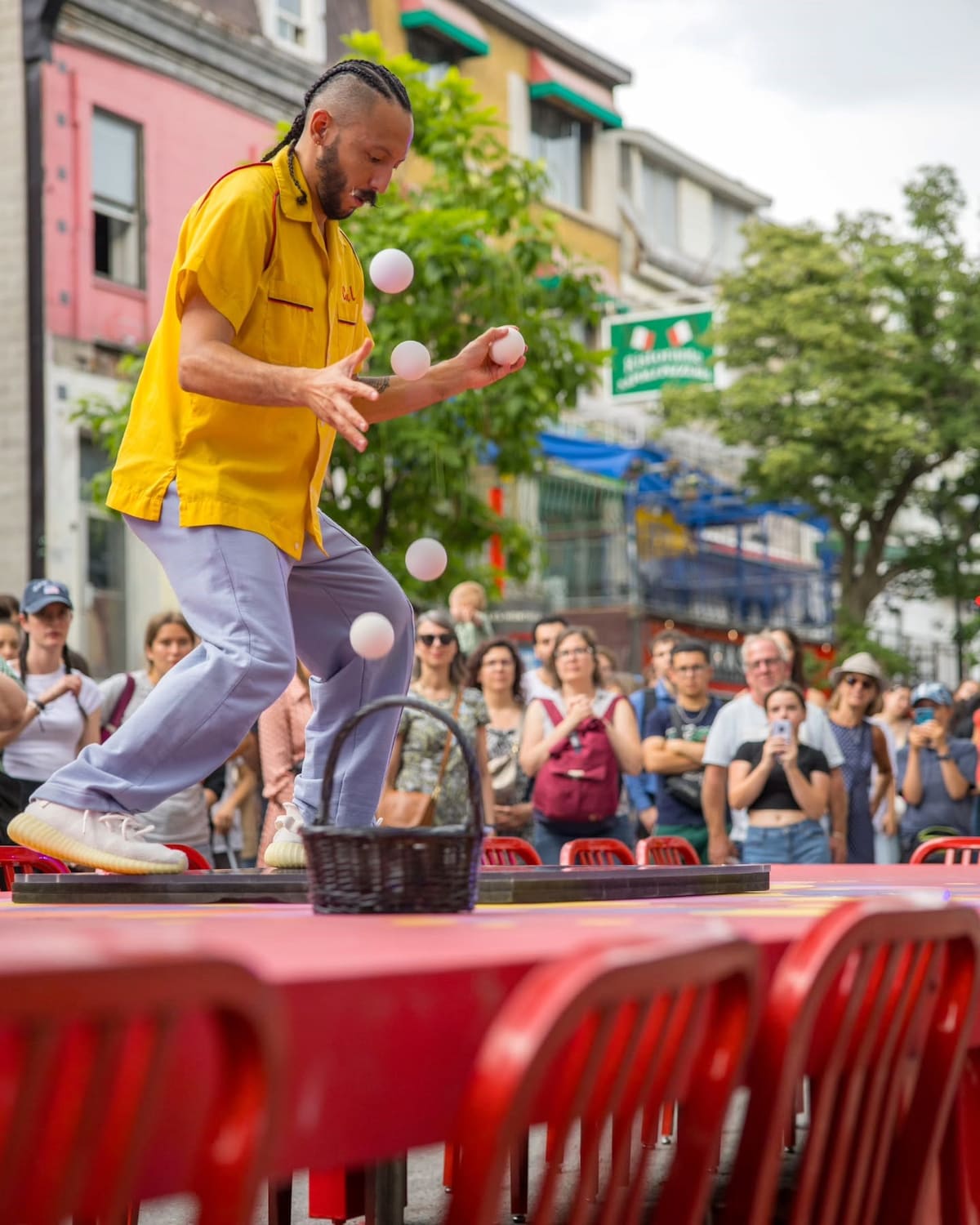
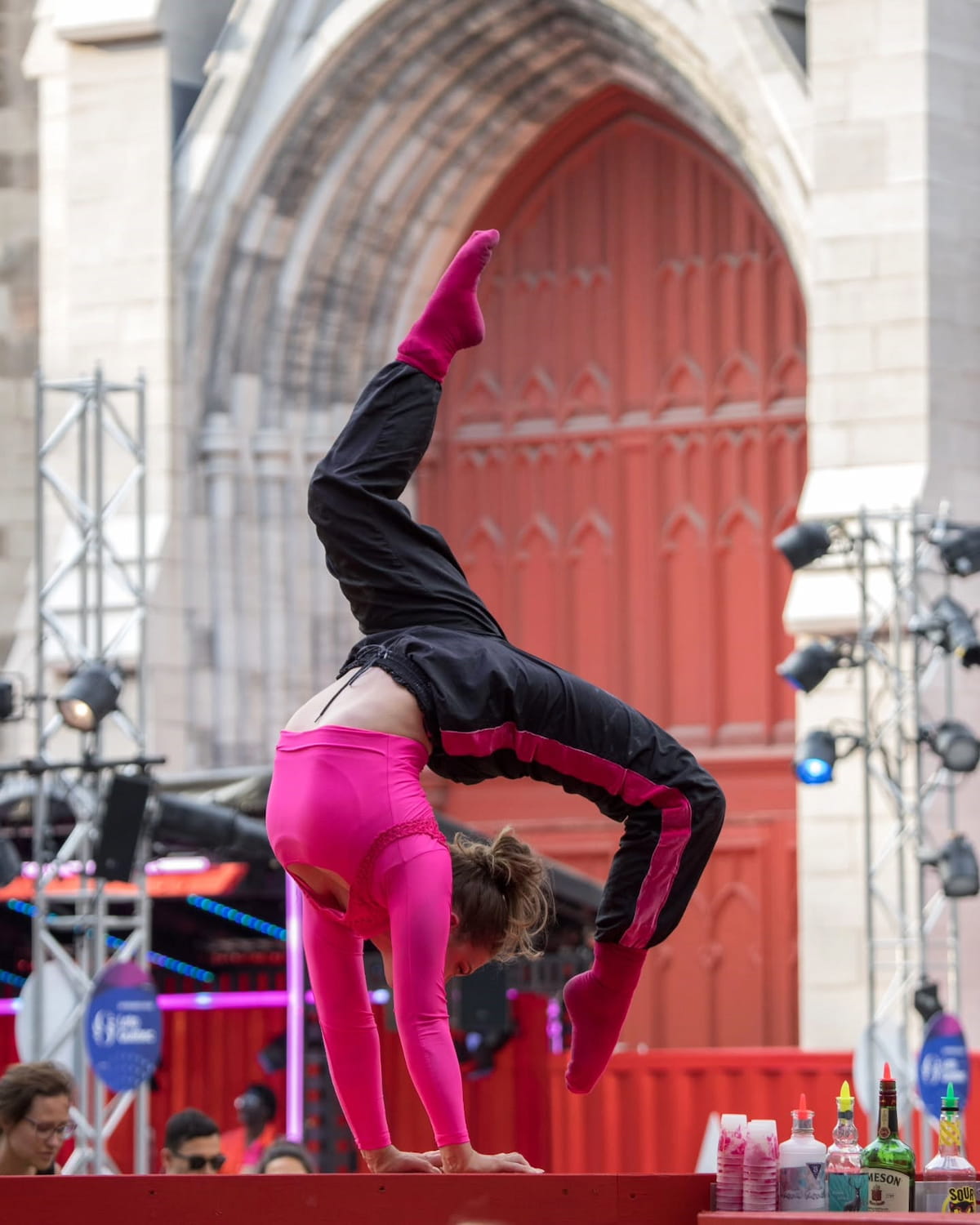
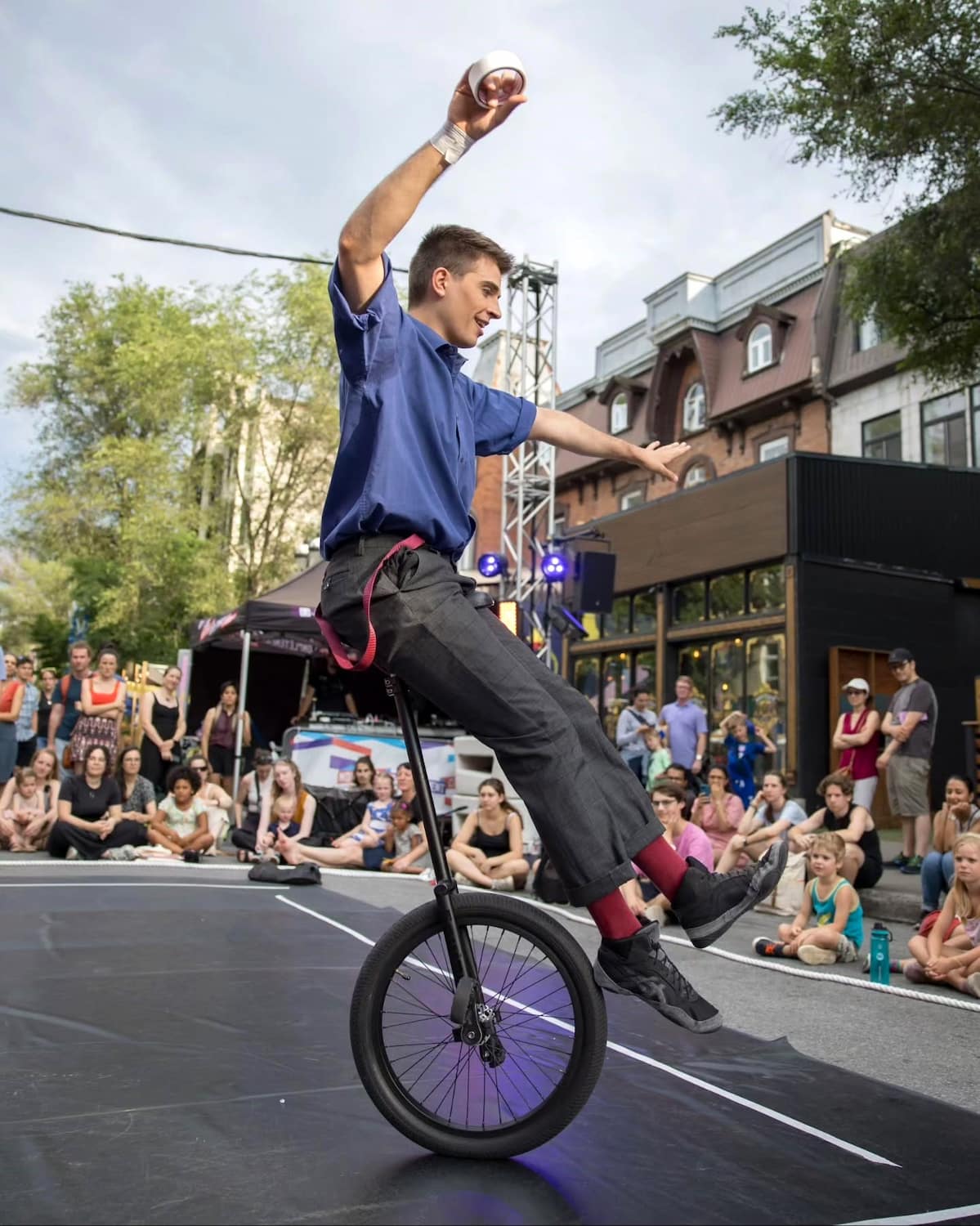
Major summer festivals with dates:
- Montreal International Jazz Festival (June 27-July 6)
- MURAL Festival (June 6-16)
- Montreal Fringe Festival (May 27-June 16)
- Montreal Completement Cirque (July 4-14)
- Just For Laughs (July 10-28)
- Osheaga Music Festival (August 2-4)
- Montreal Pride (August 1-11)
- Montreal World Film Festival (August 22-September 2)
Outdoor dining. Summer brings Montreal’s food scene outdoors with special events like First Fridays (first Friday each month, May-October), where over 50 food trucks gather at Olympic Park. I enjoyed sampling diverse cuisines while listening to live music, with most dishes priced between CA$8-15 (≈€5.40-10).
Festival planning. I discovered that purchasing a festival passport for multiple events offered significant savings. For example, the Passeport Montréal (CA$75/≈€50) provided access to select shows across multiple summer festivals. Accommodations book quickly during peak festival periods, so I reserved three months in advance. For the best experience, I stayed in the Plateau Mont-Royal neighborhood, which offered easy access to festival grounds while providing a quieter retreat from the celebrations.
Spring Blooms in Montreal Parks
Floral awakening. After Montreal’s long winter, the city erupts in a celebration of color as parks and gardens come alive with spring blooms. I timed my visit for mid-May when the city’s famous lilacs reach their fragrant peak. Walking through Mont-Royal Park, I was surrounded by the sweet scent of these purple flowers that line many pathways, creating natural tunnels of color.
Cherry blossom season. Montreal’s Japanese Garden within the Botanical Garden hosts a modest but beautiful collection of flowering cherry trees that typically bloom in late April to early May. Unlike the crowded cherry blossom experiences in other cities, I enjoyed these blossoms in relative tranquility, with traditional Japanese elements enhancing the viewing experience.
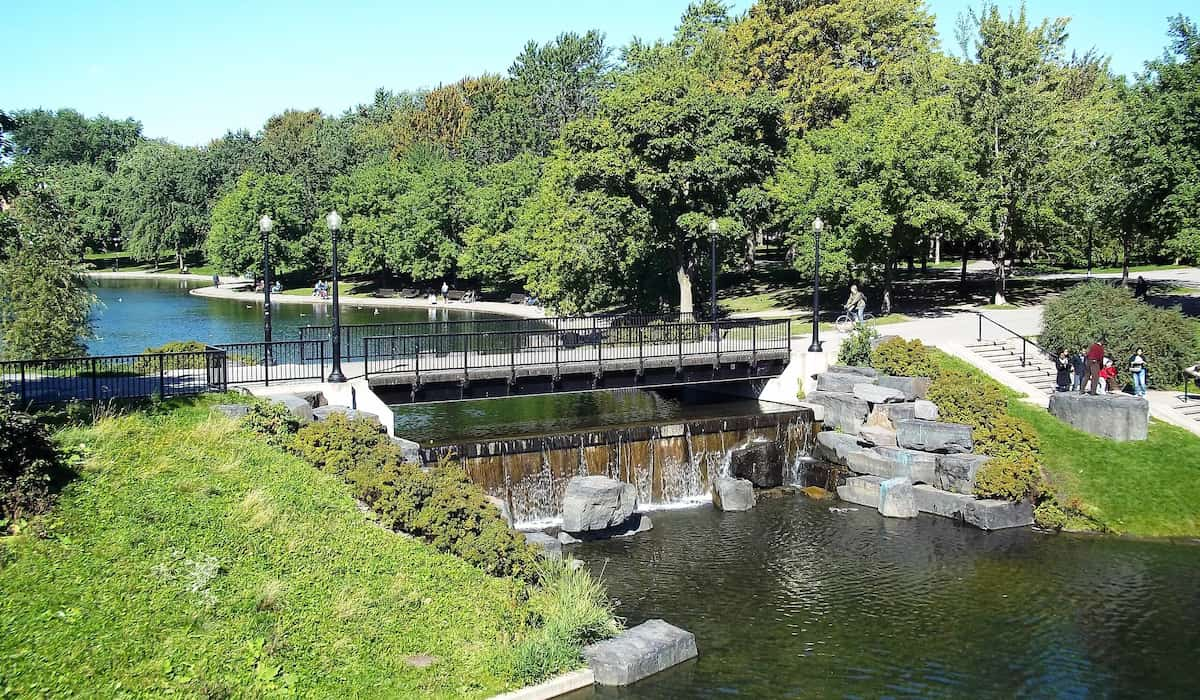
Montreal’s spring bloom calendar:
- Early April: Snowdrops and crocuses in Parc La Fontaine
- Mid-April: Daffodils and tulips in Old Port gardens
- Late April-Early May: Cherry blossoms at Botanical Garden
- Mid-May: Lilacs throughout Mont-Royal Park
- Late May: Crabapple blossoms in Westmount Park
- Early June: Peonies at Maison Saint-Gabriel gardens
Tulip displays. The most impressive spring display I discovered was at Floralies Gardens on Île Notre-Dame in Parc Jean-Drapeau, where over 15,000 tulips create dramatic sweeps of color. The gardens were originally created for the 1980 Floralies Internationales exhibition and continue to showcase seasonal plantings in a picturesque setting.
Photography opportunities. Spring mornings provided the best light for flower photography, with fewer visitors before 10am. I found that overcast days actually produced better colors in photographs than bright sunshine. The Montreal Botanical Garden offers special “Photographer’s Hours” on select spring mornings (5:30am-9:00am, CA$22/≈€15) when tripods are permitted and the gardens are less crowded. For free options, I explored the flowering trees along Square Saint-Louis and Place d’Armes, which frame historic architecture with spring blossoms.
Autumn Foliage Walks
Maple magnificence. Montreal’s autumn transformation typically peaks in mid-October when the city’s abundant maple trees display spectacular shades of crimson, orange, and gold. I discovered that the Royal Park offers the most accessible and impressive fall foliage experience, with over 120 species of trees creating a patchwork of autumn colors. The Olmsted Path provided a gentle ascent through this seasonal spectacle.
Beyond the mountain. While Mount Royal gets the most attention, I found equally impressive autumn displays in less-visited locations. Parc Maisonneuve adjacent to the Botanical Garden offers wide open spaces where golden trees contrast beautifully with open meadows. The fallen leaves create a satisfying crunch underfoot as you explore the winding paths.
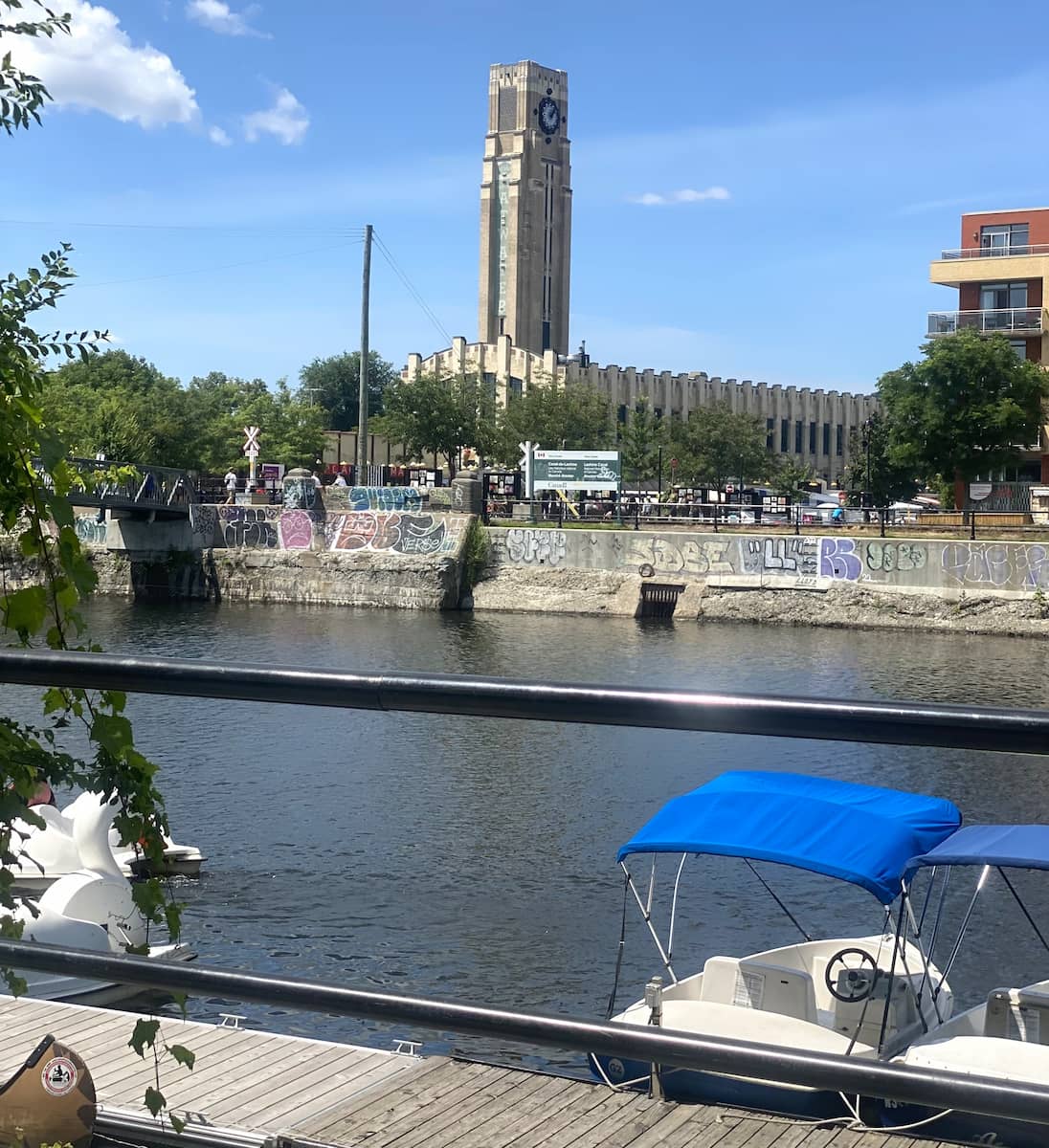
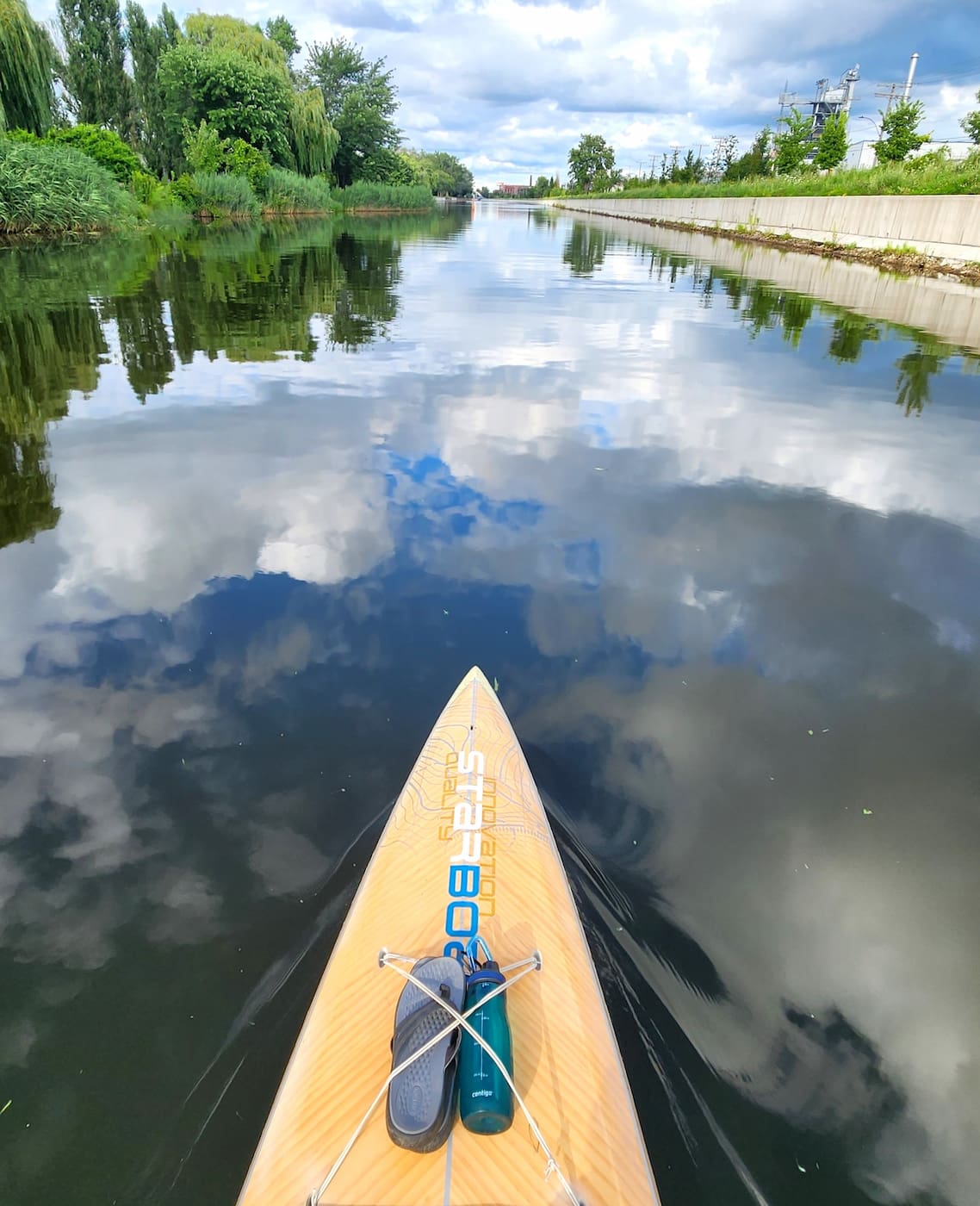
Best autumn foliage walks rated by intensity:
- Mount Royal Summit Loop – Moderate difficulty, 4.5km, spectacular city views
- Parc Jean-Drapeau Pathways – Easy, 5.6km, island setting with water views
- Lachine Canal Linear Park – Easy, flat terrain, industrial-natural contrast
- Parc Angrignon Forest Trails – Easy to moderate, 8km of woodland paths
- Morgan Arboretum – Moderate, 25km of trails, greatest tree diversity
Seasonal events. During autumn, I participated in the “Pumpkin Ball” at the Botanical Garden (October 4-31), where hundreds of elaborately carved pumpkins illuminate the evening gardens. This coincides with the Gardens of Light festival featuring illuminated Chinese lanterns, creating a perfect fall evening activity. The garden’s regular admission applies (CA$22/≈€15), with extended evening hours during these special events.
Day Trips from Montreal
1. Quebec City
Old world charm. Quebec City makes a perfect day trip from Montreal, though I could have easily spent several days exploring North America’s oldest walled city. The 3-hour journey each way (by train, bus, or car) is worth it to experience the 400-year-old UNESCO World Heritage site that feels more European than Canadian. The narrow cobblestone streets, stone buildings, and French signage created an authentic old-world atmosphere unlike anywhere else in North America.
Fortified exploration. What fascinated me most was walking the intact city walls – the only fortified city north of Mexico. I followed the 4.6-kilometer circuit atop the walls, stopping at various lookout points for panoramic views of both the historic Lower Town (Basse-Ville) and the imposing Château Frontenac dominating the Upper Town (Haute-Ville).
Quebec City day trip highlights:
- Petit-Champlain District (oldest shopping street in North America)
- Place Royale (birthplace of French America)
- Château Frontenac (world’s most photographed hotel)
- Citadelle of Quebec (active military installation with changing of the guard)
- Quartier Petit Champlain (charming shopping district)
Time-saving tips. To maximize my day trip, I caught the earliest 6:15am train from Montreal, arriving at 9:30am. I focused my exploration on the compact historic districts rather than trying to see everything. For lunch, I avoided the touristy restaurants on rue Saint-Jean and instead enjoyed authentic Québécois cuisine at Aux Anciens Canadiens (34 Rue Saint Louis), where the table d’hôte lunch menu offered three courses for CA$25 (≈€17) – significantly less than their dinner pricing. I returned on the 7:00pm train, giving me a full 9 hours of exploration.
⭐ Best Activities
- Quebec City and Montmorency Falls Day Trip from Montreal – Venture beyond Montreal on this full-day excursion to historic Quebec City and the impressive Montmorency Falls, exploring UNESCO-listed Old Quebec with its European charm and witnessing falls that are higher than Niagara.
2. Mont-Tremblant
Alpine escape. Mont-Tremblant offers a perfect day trip from Montreal, transporting me from urban environment to mountain playground in just 90 minutes. While best known as a premier ski destination in winter, I discovered that summer and fall transform the resort into an outdoor adventure center with activities ranging from hiking and mountain biking to water sports on Lake Tremblant.
Pedestrian village. What makes Mont-Tremblant special is its colorful European-inspired pedestrian village nestled at the base of the mountain. I enjoyed wandering through the car-free streets lined with boutiques, restaurants, and cafés. The architecture, with its bright colors and distinct Quebec character, creates a festive atmosphere regardless of season.
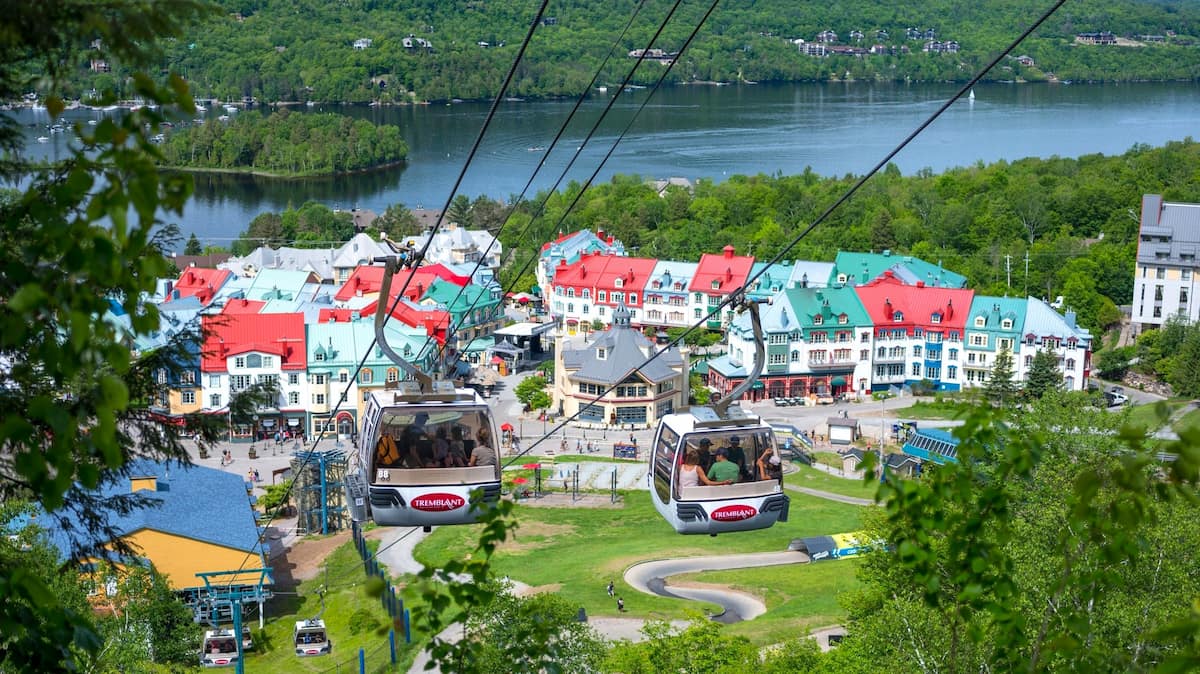
Seasonal activities at Mont-Tremblant:
- Winter: Skiing, snowboarding, dog sledding, ice climbing, snowshoeing
- Spring: Hiking, bird watching, spa visits, scenic gondola rides
- Summer: Swimming, kayaking, mountain biking, luge rides, zip-lining
- Fall: Leaf peeping, photography, golf, hiking among fall colors
Natural beauty. Beyond the resort area, I explored Mont-Tremblant National Park, which offers over 400 square kilometers of protected wilderness. The La Diable trail provided a moderate 5-kilometer hike with stunning views of lakes and forests. In fall (late September to mid-October), the mountain’s sugar maples create a spectacular display of red and orange foliage that attracts photographers from around the world.
Getting there. I found several transportation options from Montreal. The most economical is the L’Express du Nord bus service (CA$70/≈€47 round trip) from Montreal’s bus terminal, with 2-3 daily departures. For more flexibility, I rented a car for approximately CA$60/≈€40 per day plus fuel. The drive follows Highway 15 North to Highway 117, with clear signage throughout. For a splurge, the Skyport shuttle offers direct service from Montreal-Trudeau Airport to Tremblant for CA$125/≈€84 round trip.
⭐ Best Activities
- Private Day Tour to Mont Tremblant from Montreal – Escape the city for a day of natural beauty in the Laurentian Mountains with this private excursion to Mont Tremblant, featuring stunning alpine scenery, a charming pedestrian village, and outdoor activities year-round.
3. Ottawa
Capital culture. Ottawa, Canada’s capital city, surprised me with its walkable scale and concentration of national museums and historic sites. Located just a two-hour drive from Montreal, this bilingual city offers a perfect day trip for history buffs and culture seekers. I centered my visit around Parliament Hill, where the Gothic Revival buildings house Canada’s federal government and provide free guided tours (advance reservation recommended).
Museum marathon. What impressed me most about Ottawa was the quality and diversity of its national museums. With limited time, I had to choose carefully and focused on the National Gallery of Canada, where the impressive collection of Canadian art gave me new appreciation for the Group of Seven landscape painters and Indigenous artists.
Ottawa day trip priorities:
- Parliament Hill (free guided tours of Senate and House of Commons)
- Rideau Canal (UNESCO World Heritage Site)
- ByWard Market (historic farmers’ market and dining district)
- National Gallery of Canada (impressive Canadian and international art)
- Canadian Museum of History (across river in Gatineau, Quebec)
- Changing of the Guard ceremony (summer mornings at 10am)
Two provinces in one day. One unique aspect of visiting Ottawa is the ease of crossing into Quebec. I walked across the Alexandra Bridge from downtown Ottawa to Gatineau, Quebec in about 15 minutes, visiting the impressive Canadian Museum of History (CA$23/≈€15.50) which offers the best views of Parliament Hill from its riverside windows.
Transportation options. I chose to take the Greyhound bus from Montreal’s Berri-UQAM station to Ottawa, which cost CA$40-60 (≈€27-40) each way depending on when you book. The journey takes approximately 2 hours. VIA Rail offers a slightly faster service with tickets ranging from CA$45-90 (≈€30-60) each way. For maximum flexibility, I considered renting a car (approximately CA$60/≈€40 per day plus fuel), which would have allowed me to also visit the charming Gatineau Park just 15 minutes from downtown Ottawa.
⭐ Best Activities
- Private 8-Hour Tour to Ottawa from Montreal – Cross provincial borders on this private day trip to Canada’s capital city, where you’ll visit Parliament Hill, the Rideau Canal, and other significant landmarks with the convenience of hotel pickup and personalized attention.
FAQ
Where can I find authentic Montreal bagels?
St-Viateur Bagel and Fairmount Bagel in Mile End are the two legendary establishments competing for the title of best Montreal bagels. These hand-rolled, honey-water boiled, wood-fired bagels are denser and sweeter than their New York counterparts, making them one of the best things to try during your trip to Montreal.
What are the best activities in Montreal in winter?
Winter in Montreal transforms the city with outdoor ice skating at Quartier des Spectacles, snow tubing at Mount Royal Park, and vibrant winter festivals like Montréal en Lumière and Igloofest during weekends in January and February. Despite cold winter temperatures that can reach -20°C, Montrealers embrace the Canadian winter with outdoor activities and the extensive Underground City (RÉSO) provides warm refuge connecting the downtown core.
Is a walking tour of Old Montréal worth it?
Old Montréal (Vieux-Montréal) is one of the oldest European settlements in North America, with cobblestone streets and buildings dating back to the 17th century. A walking tour reveals hidden courtyards, historic sites like Place d’Armes, and architectural treasures that tell the story of Montreal’s rich history, making it one of the best places to visit when you first arrive in Montreal.
What is Bota Bota and why should I visit?
Bota Bota is a floating spa created from a converted ferry boat permanently docked in the Old Port, offering spectacular views while you enjoy Nordic water circuits and treatments. This unique wellness experience combines hot and cold therapy with relaxation areas, making it one of the city’s best places to rejuvenate, especially after exploring Montreal in the winter.
Which markets in Montreal should I visit?
Jean-Talon Market in Little Italy and Atwater Market near the Lachine Canal are Montreal’s two most famous public markets, offering fresh local produce, Quebec cheeses, and artisanal foods. These vibrant markets attract both locals and visitors alike year-round, with Jean-Talon being one of the largest open-air markets in North America, perfect for sampling Montreal food specialties or joining a food tour.
What is a sugar shack near Montreal?
A sugar shack (cabane à sucre) is a traditional Quebec establishment where maple sap is boiled into syrup, typically offering hearty all-you-can-eat meals and maple taffy on snow. These rustic dining experiences operate primarily from late February through April in rural areas near Montreal, making them a great place to experience authentic Quebec culture and one of the best Montreal winter activities for families.
Where can I find the best smoked meat in Montreal?
Schwartz’s Deli on Saint-Laurent Boulevard has been serving their famous Montreal-style smoked meat sandwiches since 1928, becoming an iconic part of the city’s Jewish food heritage. The hand-sliced brisket is cured with secret spices, served on rye bread with mustard, and often requires waiting in line, but most visitors agree it’s one of the best places to eat in Montreal for an authentic local experience.
How cold does winter in Montreal actually get?
Montreal winter temperatures typically range from -5°C to -15°C (23°F to 5°F) from December through February, with occasional cold snaps dropping to -25°C (-13°F) or lower. Despite these frigid temperatures, the winter season brings a magical quality to the entire city with snow-covered architecture, outdoor winter activities, and the warm hospitality of indoor venues making planning a trip to Montreal during winter surprisingly rewarding.
Is Montreal Museum of Fine Arts worth visiting?
The Montreal Museum of Fine Arts spans five pavilions with over 43,000 works from ancient times to contemporary art, making it one of the most significant museums in Canada. Visitors can explore international masterpieces, Quebec and Canadian art, decorative arts, and thought-provoking temporary exhibitions, making it a must-visit cultural institution in the city center for art lovers.
Is it true that Montreal is an island?
Montreal is indeed an island, surrounded by the St. Lawrence River to the south and the Rivière des Prairies to the north. This geographical feature has shaped the city’s development, with 19 bridges connecting it to the mainland, and offers residents and visitors alike beautiful waterfront areas around the entire city perimeter.

